22:05 – 05:50
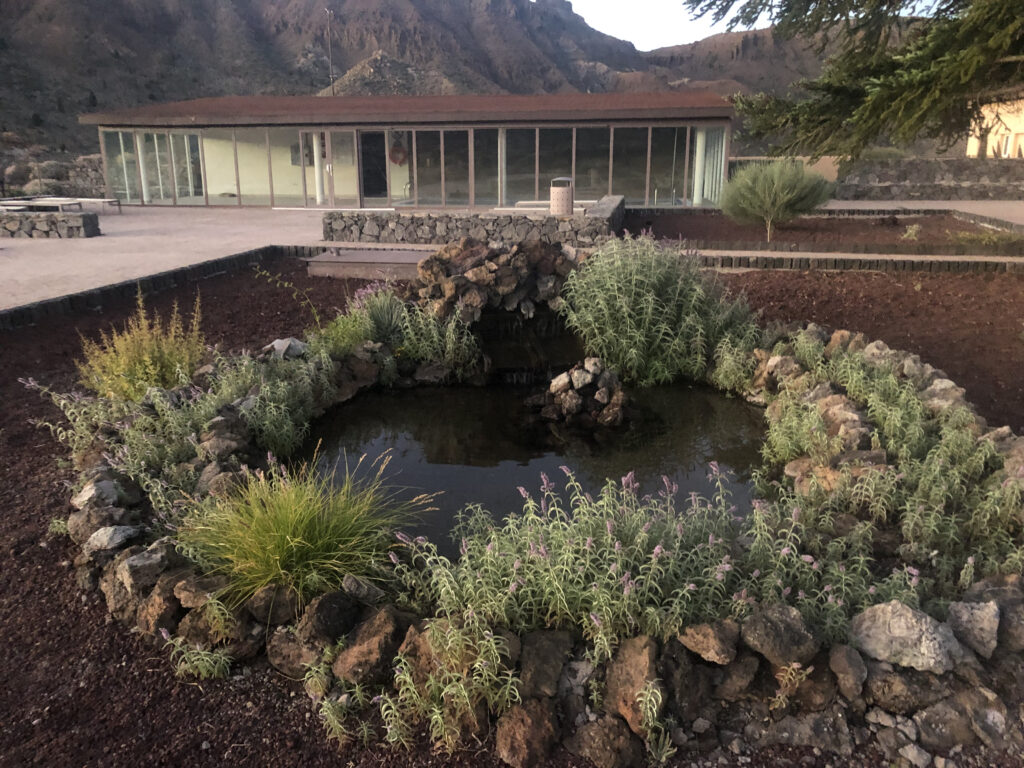
@22:30 Omega Centauri 30s -20℃

@23:17 Centaurus A 30s -20℃
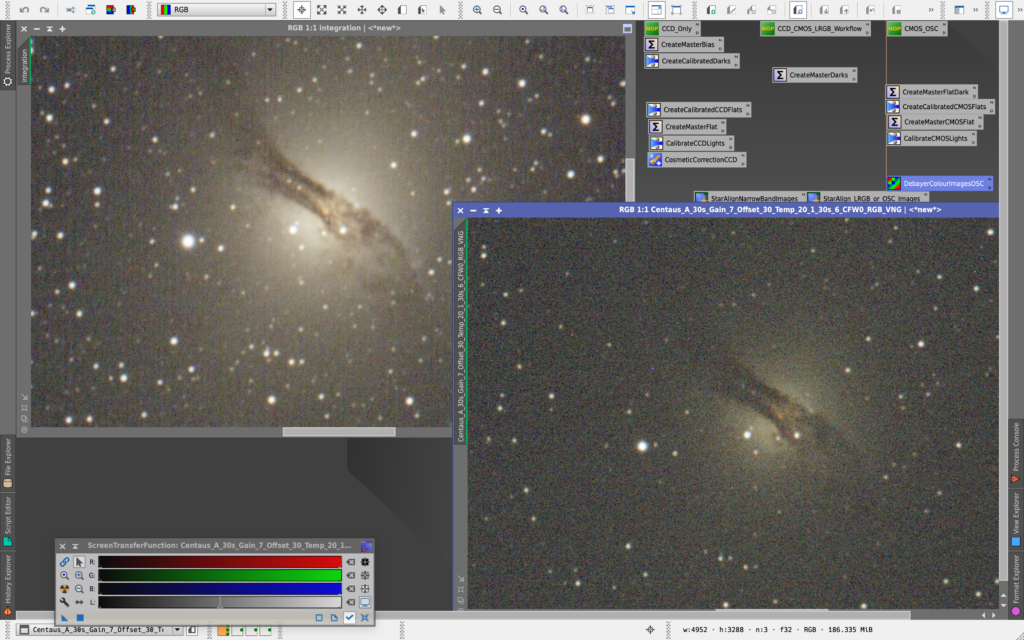
@00:02 M24 30s -20℃
@01:33 M6 30s -20℃
@02:38 M25 30s -20℃
@03:26 LDN 564 300s -20℃
Flats taken
Darks 300s -20℃ (take tomorrow) / 0.35s -25℃ – DONE
22:05 – 05:50

@22:30 Omega Centauri 30s -20℃

@23:17 Centaurus A 30s -20℃

@00:02 M24 30s -20℃
@01:33 M6 30s -20℃
@02:38 M25 30s -20℃
@03:26 LDN 564 300s -20℃
Flats taken
Darks 300s -20℃ (take tomorrow) / 0.35s -25℃ – DONE
22:00 – 07:00
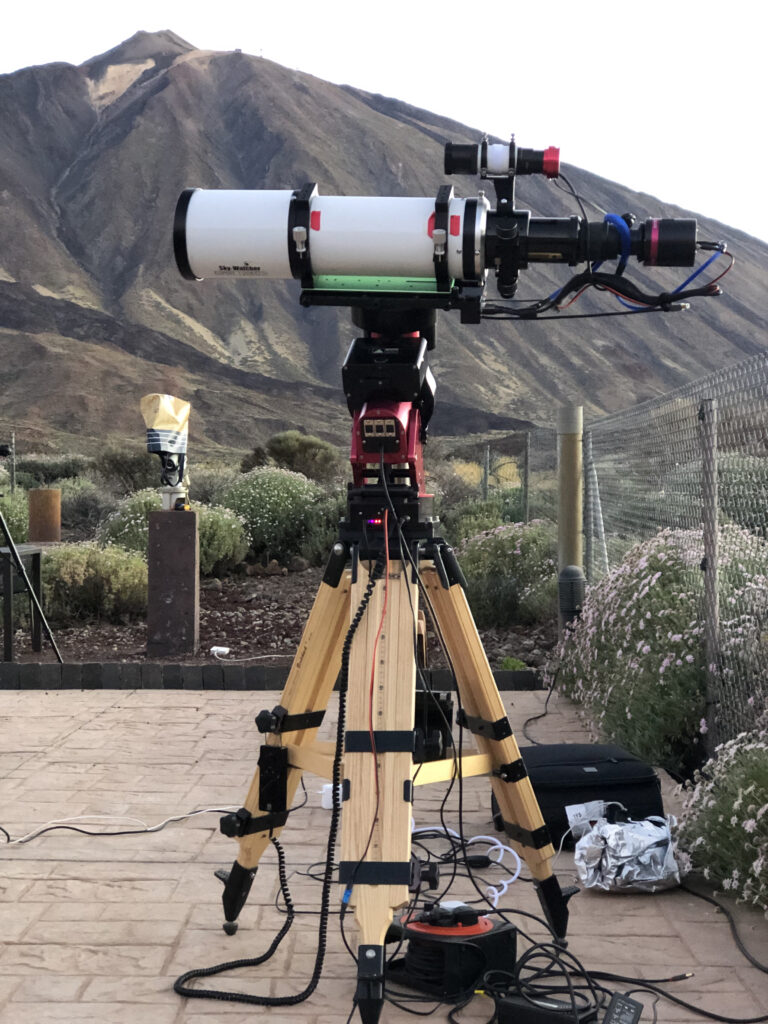
First thing tonight is to complete taking the darks from yesterday, so I need 20 x 120s -20℃, but also the flat darks I forgot for the 0.35ms flats. Then I will move to taking longer images tonight. The challenge with open clusters is that you need short exposures so you don’t oversaturate the stars.
@22:50 Omega Centauri 30s -20℃
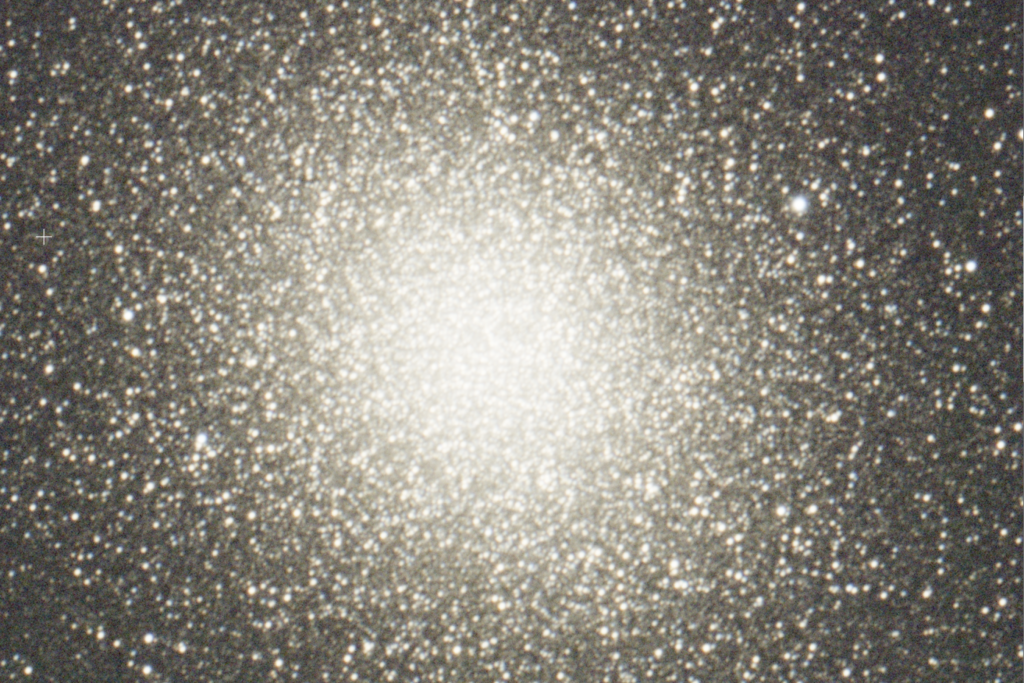
@23:20 Centaurus A 300s -20℃
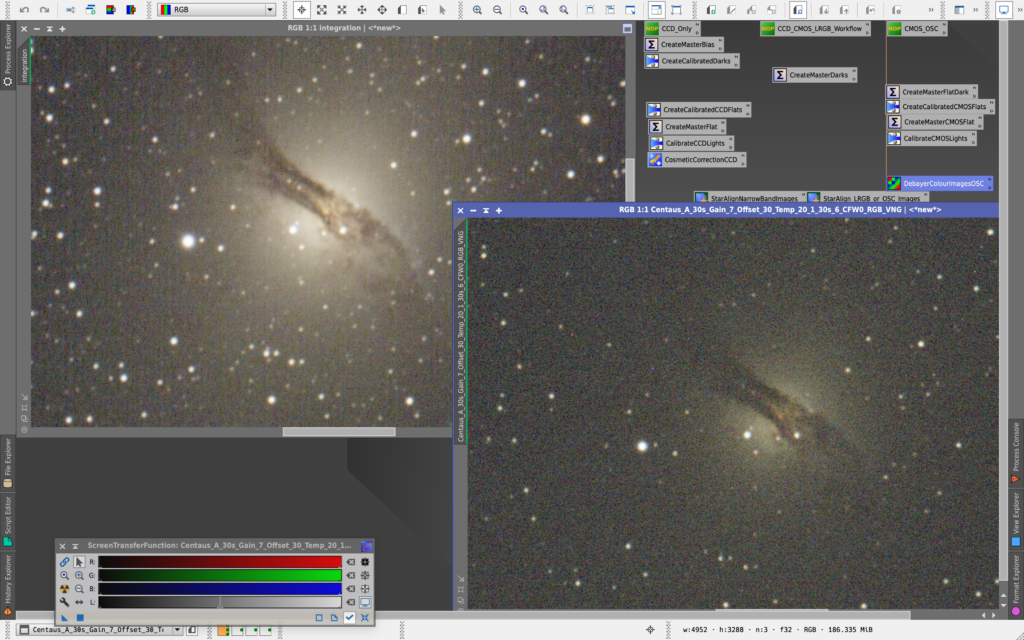
@00:09 Makemake 120s -20℃ x 10
@00:29 Haumea 120s -20℃ x 10
@01:07 M8 Lagoon 300s -20℃ x 24 (focus drifted so review later images)

@03:22 Comet C/2017 K2 PANSTARRS 120s -20℃ x 7
@03:53 M21 30s -20℃ x 90
@05:00 M20 & M21 120s x5
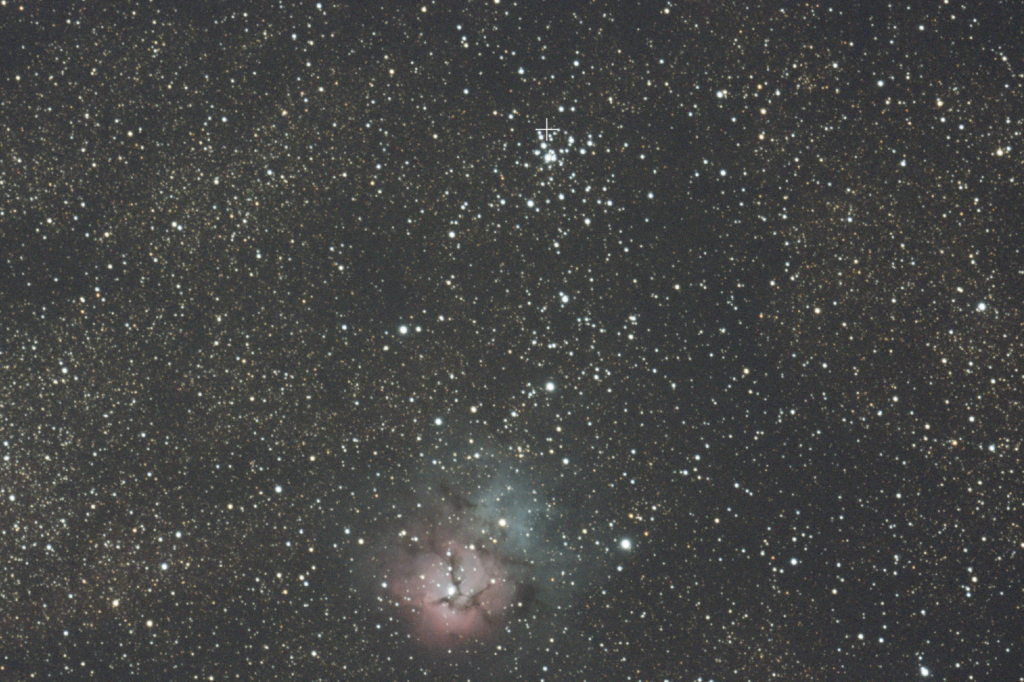
@05:45 LDN 574 300s x 9 which was a mistake
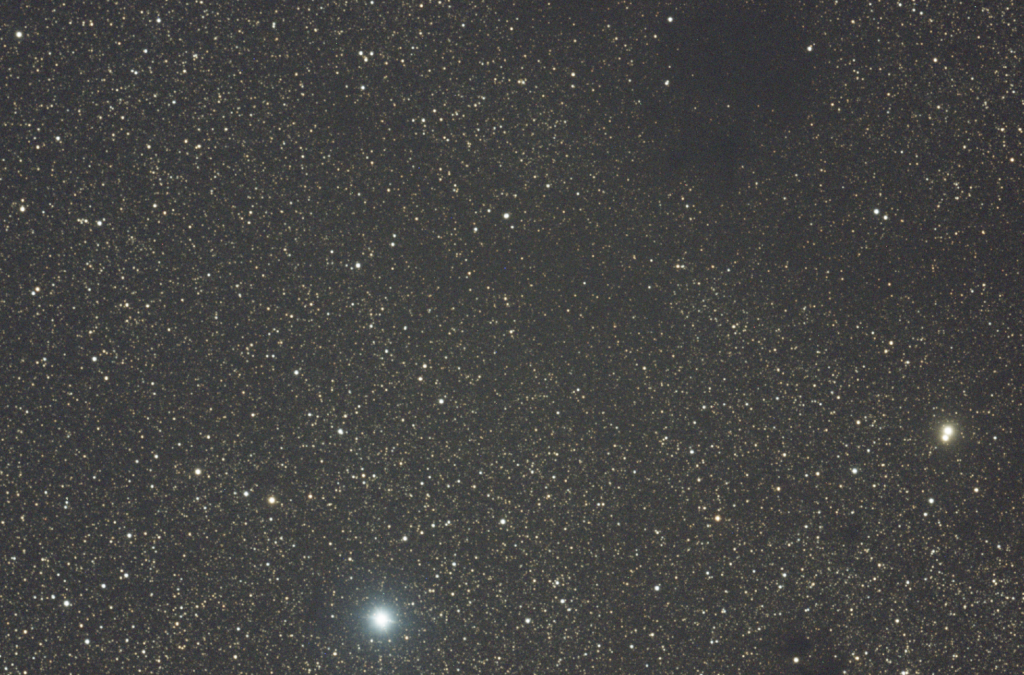
Dark Flats – 0.35s -20℃ – DONE / 0.35s – 25℃ (tomorrow)
Flats – 0.35s -20℃ – DONE
Darks 30s -20℃ – DONE / 300 -20℃ (tomorrow) / 120 -20℃ DONE
22:55 – 08:00
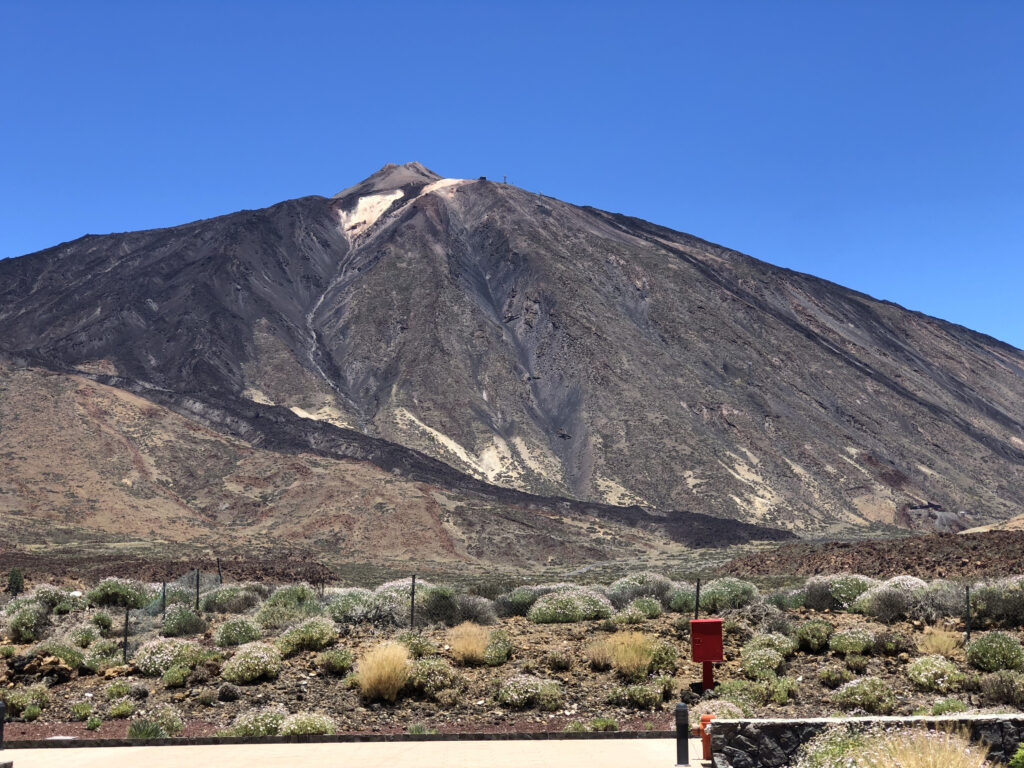
Finally got our bags today from the airport. Having arrives on the 2:05pm flight and not hearing from BA by 4pm, Lawrence and I headed off down the mountain in search of the 4 missing bags. It took just over an hour to arrive back in the Cicar car park.
Once there we headed inside to be told the the Iberia desk, which deals with lost and late baggage was only accessible the arrivals hall and so we were told to go through the exit doors and not to worry about the police. So we nervously😱 walked through and were greated with the sight of all the lost bags!

It took some 20 mins to sort through the paperwork before we were pushing the bags back to the car for the 1 hour drive back up the TF1 and TF38.
After a hearty dinner, which was absolutely delicious and filling, we headed outside around 9pm to start setting up. This took me the best part of 2 hours to put the gear together after ferrying it from upstairs and then another 60 mins to calibrate and be ready to image. First up tonight is M23.
@ 23:55 started on M23 Open Cluster, 30s -25℃ exposures so not to saturate the stars.
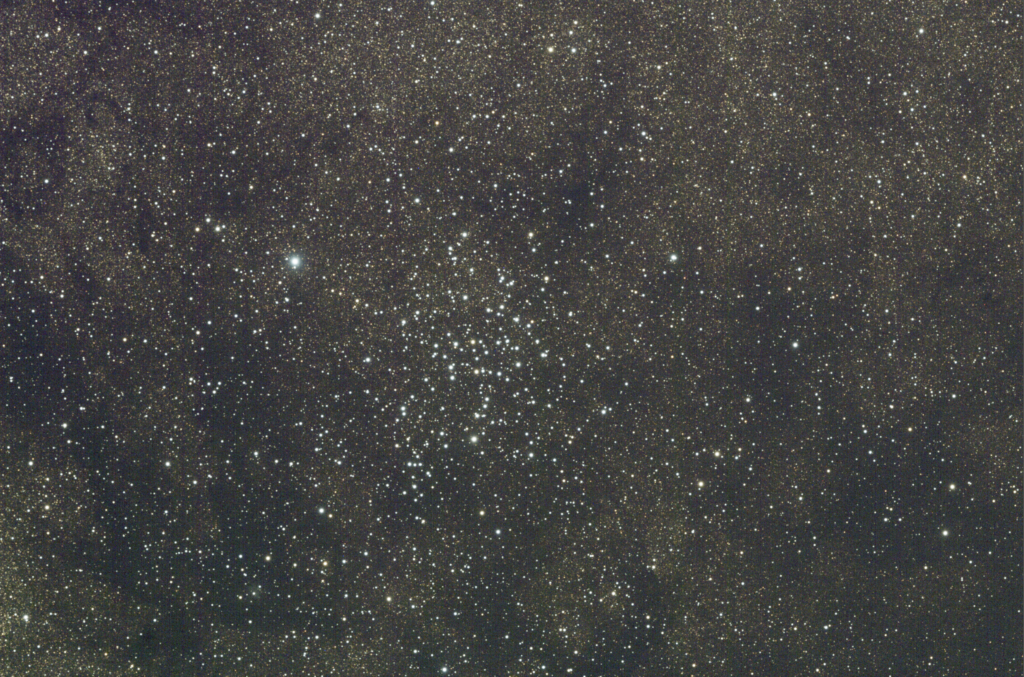
after 87 images escape hung!
@ 01:20 started on M18 Open Cluster 60s, 10 -20℃ or so images this time using TSX to image and then refocused and took 80 images in total.
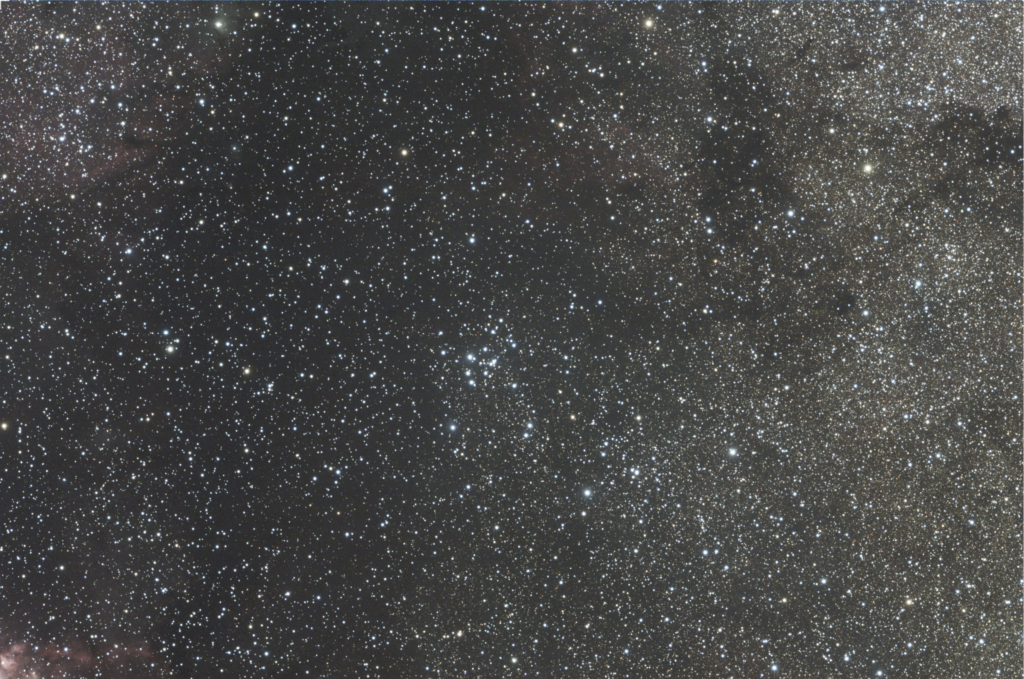
@ 3:22 started on M26 Open Cluster -20℃ took 68 at 60s
Pluto 4:41am 120s -20℃ I took 10 frames
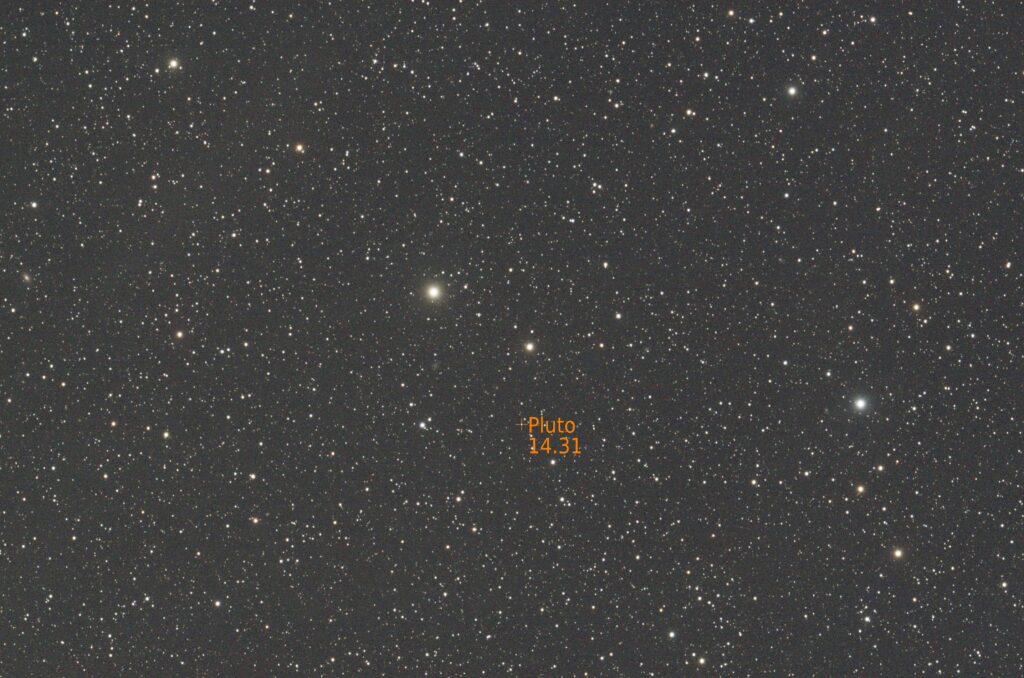
@5:21 M73 Open Cluster 60s -20℃ took 60 frames
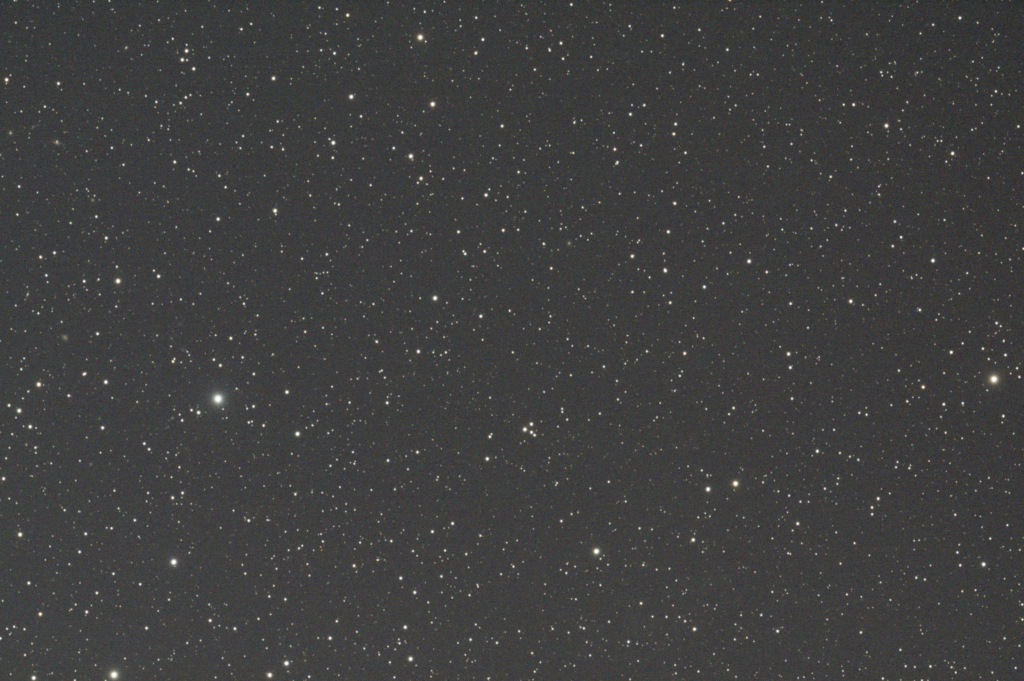
Flats 0.35s -20 & 0.35s -25℃
Darks – 30s -25℃ – Done / 60s -20℃ – Done / 120s -20℃ (tomorrow night) / Flat Darks (tomorrow night)
19:48 – 03:08
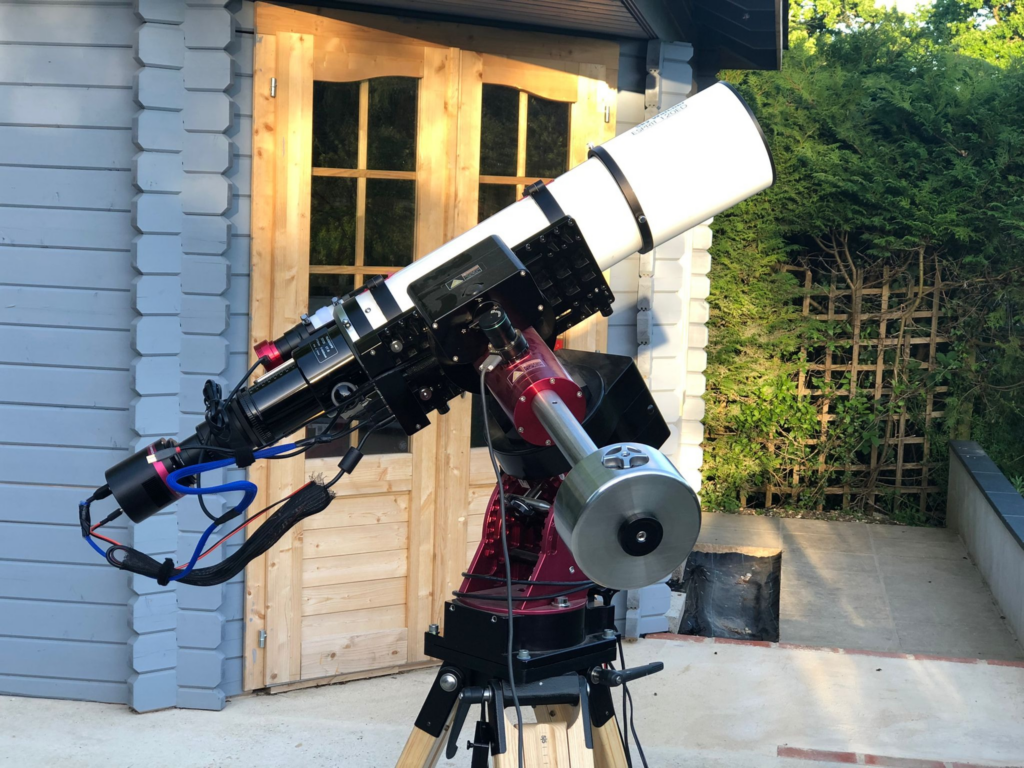
Tonight is the first night of testing the mobile rig for our 2022 Tenerife BASEG trip. I have just started to setup and am waiting for night to fall. The weather is warm and clear and I am on the IMT3b observing patio.
Tonight is about making sure I can take a set of images and guide and that everything works.
First thing to note is on firing out TSX that I need to change the settings for the mount and select usbmodem1442101 and then connect. This did not work the first time and resulted in an error, disconnecting the USB from the 2 port hub and reconnecting fixed the problem.
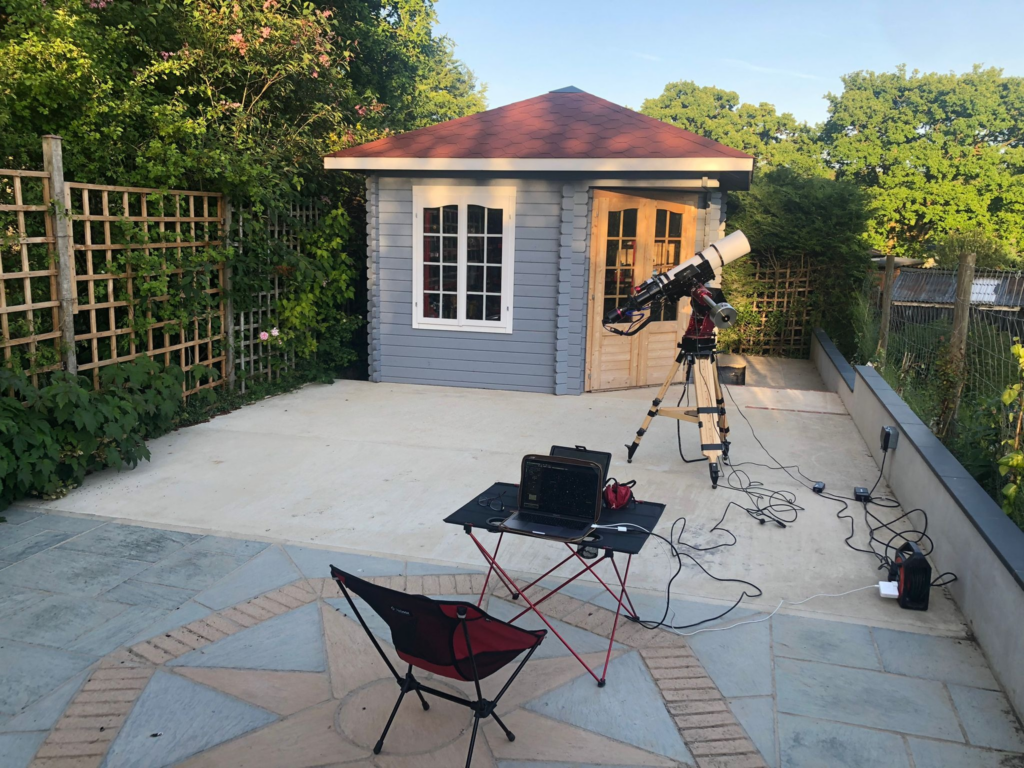
Took 44 x 300s on M101 and started to pack up at 3:08 when it was getting light which I could see on the SQM.
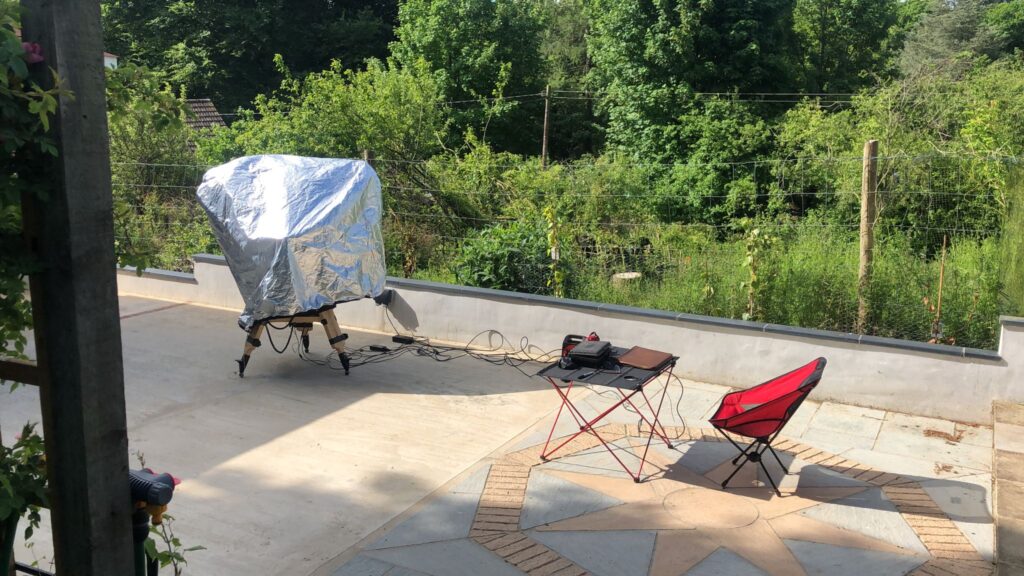

04:00 – 06:53
Comet C/2021 A1 Leonard. The last day to get this lovely little comet. Dave Boddington had captured a wonderful image yesterday through his 6″ and 4″ refractors. I was was never going to be able to do that with my 5″ refractor due to my broken foot and not being able to move it from the Warm room to the verge on the other side of the lane at the front of my property.

So instead I settled for the good old Canon 6D on a tripod. I had slowly gone up and retrieved the kit the day before in the light and now at 4am set off out the front, crutches in hand, camera on tripod strapped round my neck, in the dark at 1℃.
After getting comfortable standing on the verge, I extended the tripod legs balancing on 1 foot and set the camera on Arcturus to focus at 100mm. I had chosen the 100-300mm lens for maximum flexibility. After achieving focus by hand and by using the zoom function on the camera screen, I placed the camera roughly in the direction of where the comet should appear just below Corona Borealis in the faint constellation of Serpens. This is the shot I got.
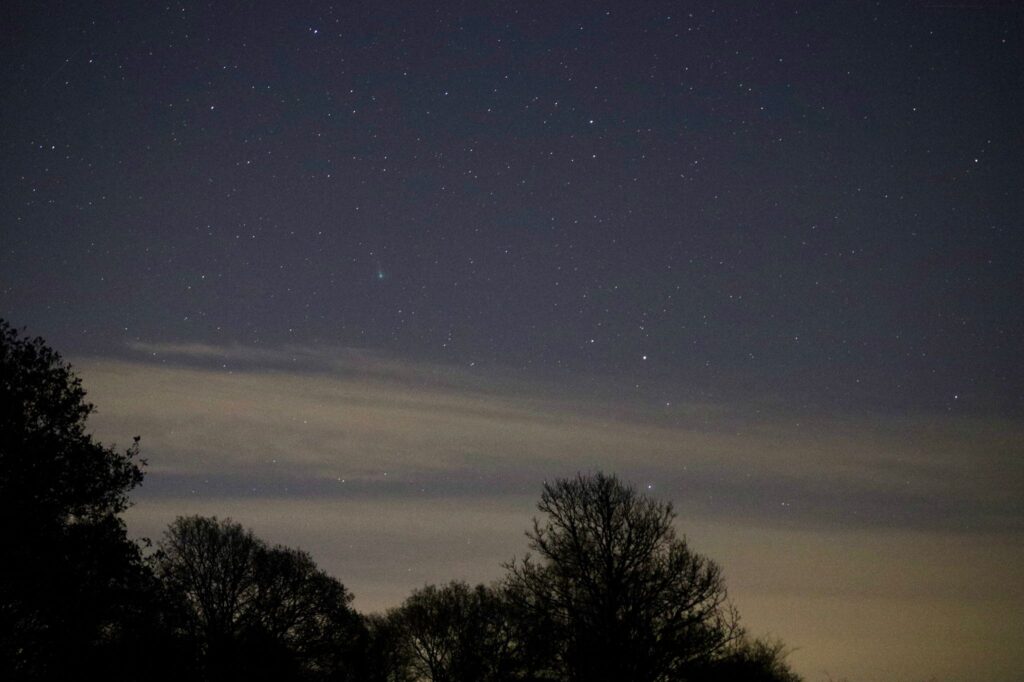
I then changed focal length going to 300mm on the zoom lens, switched back to Arcturus to focus and then, after a few attempts, actually some 20 minutes, I managed to get the comet back on the chip. Result!
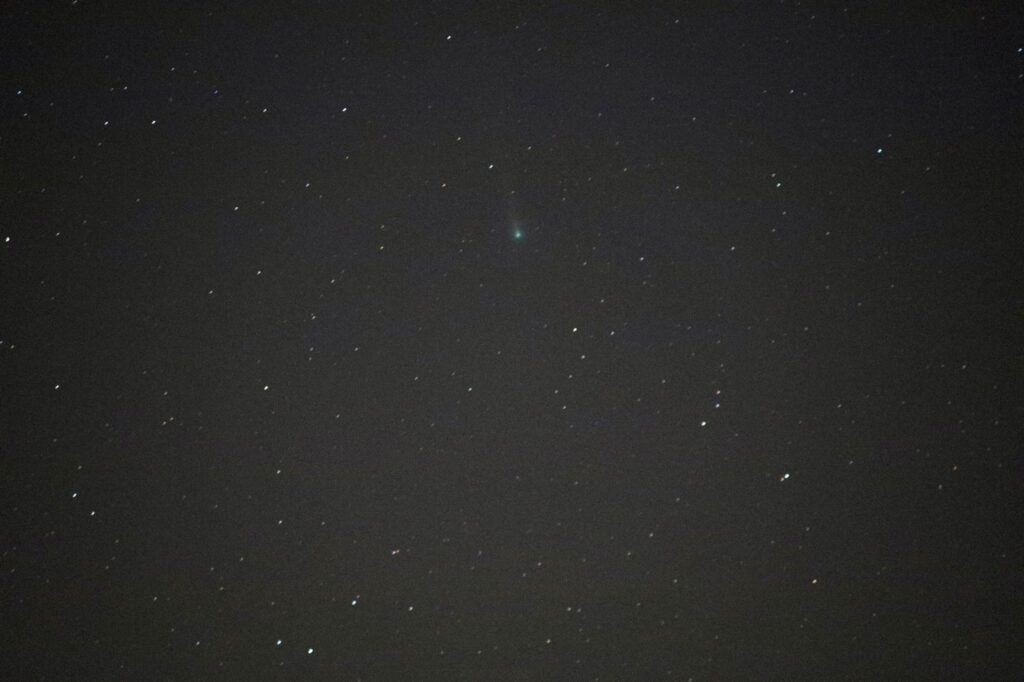
I packed up the tripod, hung it round my neck and headed slowly and gingerly across the lane and back up the drive to the house. When I had removed my one shoe, cleaned my boot and my crutches I looked at the camera lens and was not surprised to see a lens full of dew 🙄
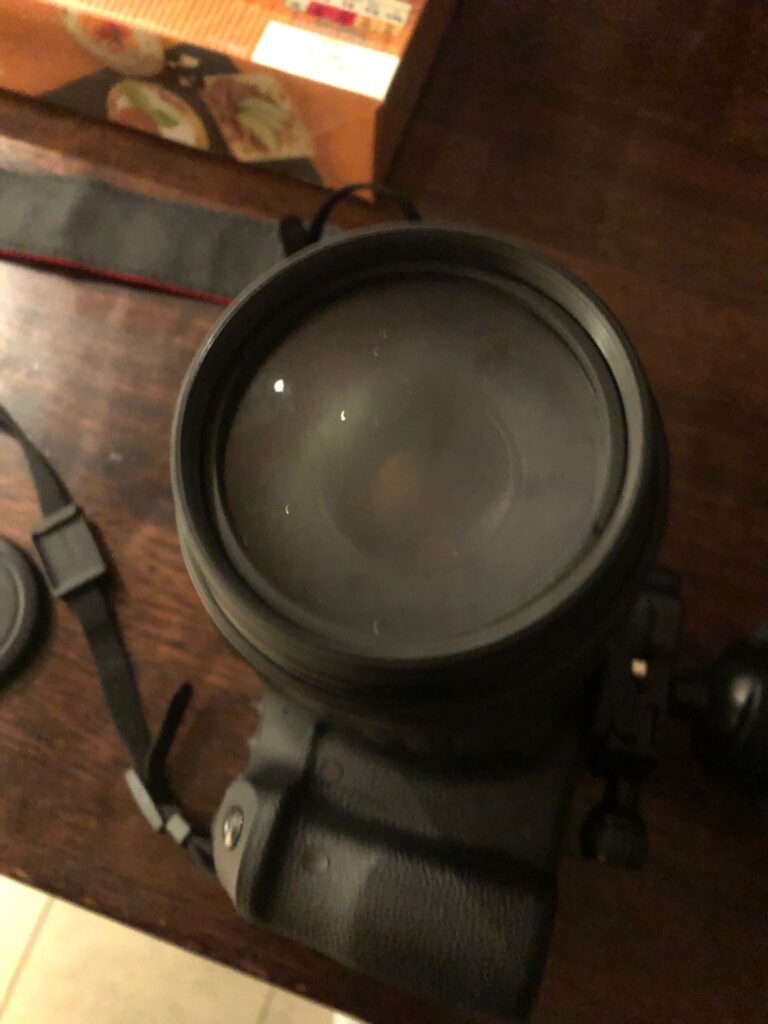
I then set about opening the dome of the observatory as the comet would have now cleared the tree line. However it would not open 😳 On closer inspection, meaning I went back out in the cold and up the garden, I found the shutter would not operate. Some time spent investigating led me to believe the battery in the shutter box was dead 🥺 so I removed and took back to the house for further investigation later today. That meant no comet photo through the 12″, however I was pleased with my results given the challenge.
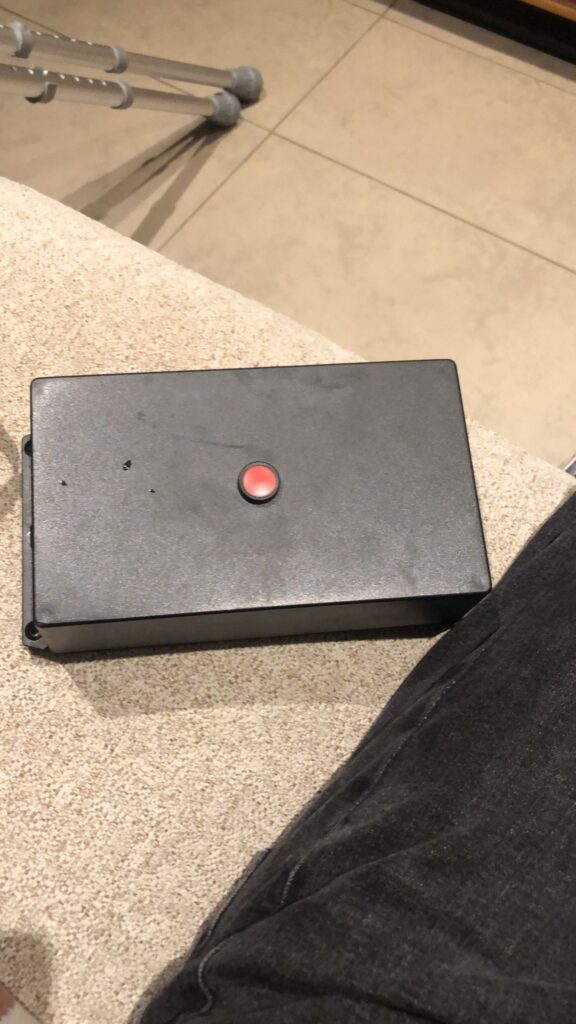
22:30 – 03:57
Tonight I am at Kelling Heath star party with Shane and Mark Radice. After a fantastic board game with Mark, Shane and Shane’s wife we then headed back to camp and I started to look through there binoculars using the NSOG (????) book as my guide. Whilst I realised I could have got away with bringing the Milkway edition, instead I brought along the Autumn/Winter version.
I had packed my 100mm Altair Astro binos so it was going to a visual night with some rudimentary drawing. I looked around and set my gaze on Pegasus and turned to the pages in the guide to set me off.
First on the list was M15. It appeared relatively close to
m15 – seen
peg 1 – seen
3 peg – seen
53 peg major seen not companion
ngc 7217 – not seen
ngc 7331 – seen with averted vision
ngc 7332 – not seen
ngc 7814 – not seen
M39 seen
M42 seen
veil eastern seen
North American seen
tried UHC filter baader from Mark in 1 eyepiece in binos abs made nebula stand out
bed at 3:52am due to fog and 9deg c
looked at M81 and M82 through Keith’s 18”
could not see horse head
M42 WOW!! and M43 both through 13m Ethos 100 deg and then 21m Ethos
23:38 – 00:18
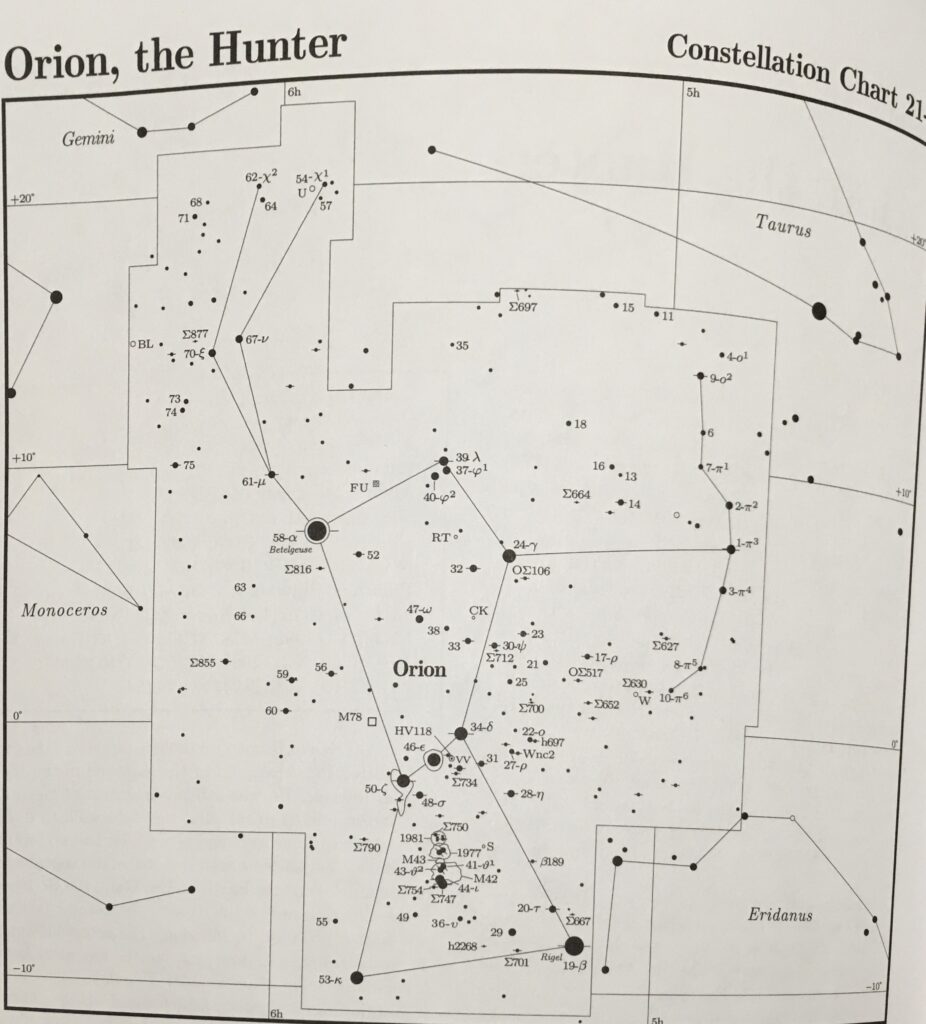
A short trip out tonight and only with the binoculars. I wanted to start my journey through Orion star hopping using the Night Sky Obervers Guide as my bible.
With the tagging of objects as follows I setup the binos and went about looking up
Sp – Showpiece
Bs – Binocular Sky
Bo – Binocular Objects
34 Delta Ori (Bo) – The first object for tonight. Given the time I started and taking Orion’s belt as a reference, the middle star called Alnilam or 46 Epsilon Orionis was at an altitude of +09 vs if I had gone out earlier at say 7pm of +37 so this was a challenge before I started.
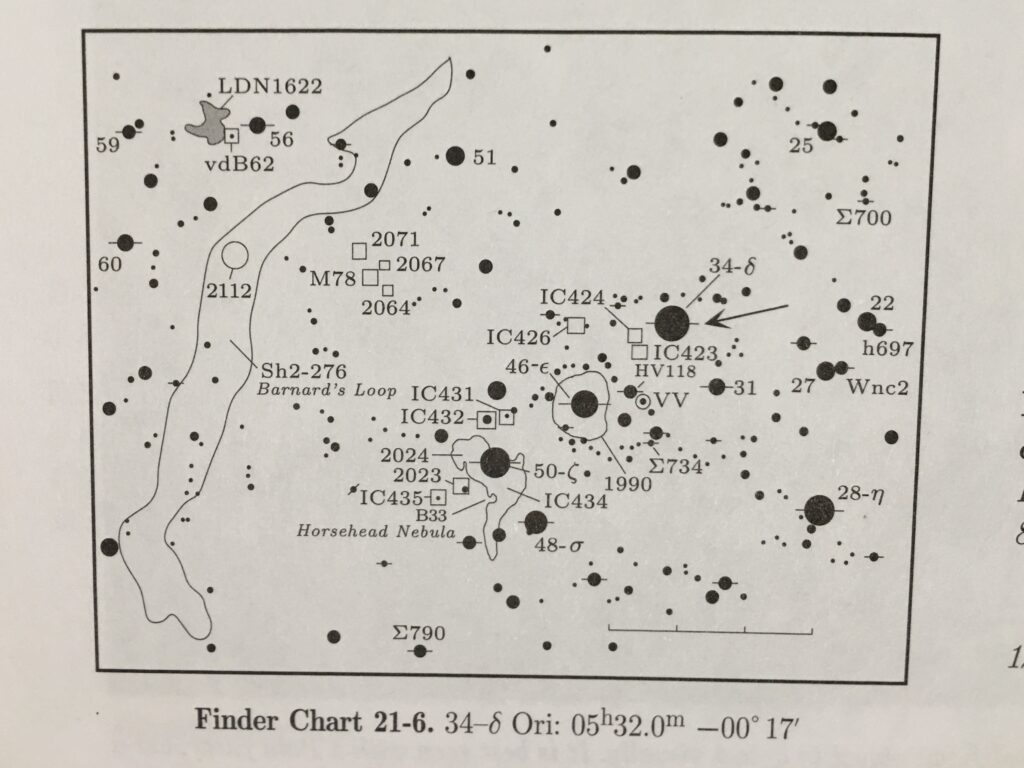
I did however see 34 Delta Ori (Mintaka) at Mag 2.2 and instantly knew it was right as I could see its double star companion around 1’oclock shining at Mag 6.8. It was a lovely sight seeing this visually tiny companion next to this larger and brighter star. Was very pleased I had started observing visually again.
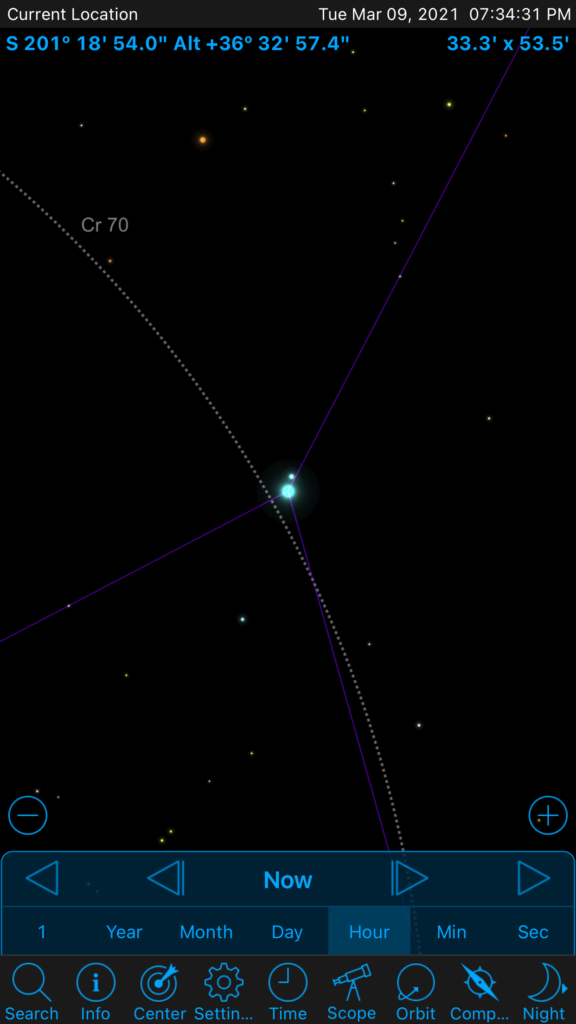
41 Theta Ori (Bo) – Not seen as set
42 Theta Ori (Bo) – Not seen as set
43 Theta Ori (Bo) – Not seen as set
41 Iota Ori (Sp) – Not seen as set
48 Sigma Ori (Bs) – Another lovely little double star, just South West of the first of the belt stars from the left, Alnitak, 48 Sigma Orionis is a Mag 3.8 star and I could clearly make out the Mag 6.7 at around 10 o’clock.
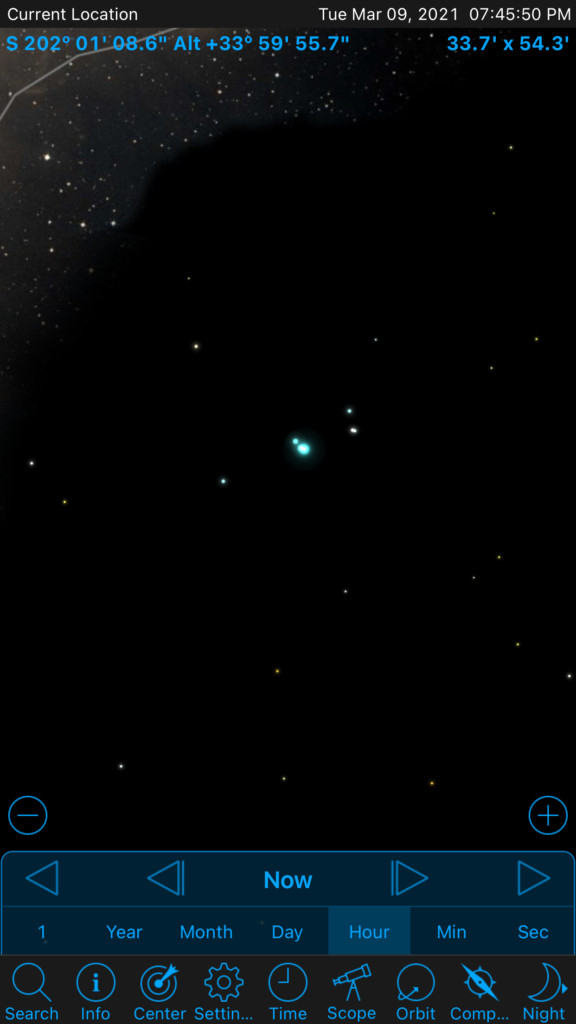
B 35 – Not seen as expected due to lack of aperture
Basel 11B – This is a really tiny open cluster of stars, I knew it was there as I star hopped from Mu Gemini that I could see clearly at Mag 2.9. I could see Chi1 Orionis and Chi2 Orionis that form the upper stars in Orion’s club but it was easier to star hop from Mu Gem.
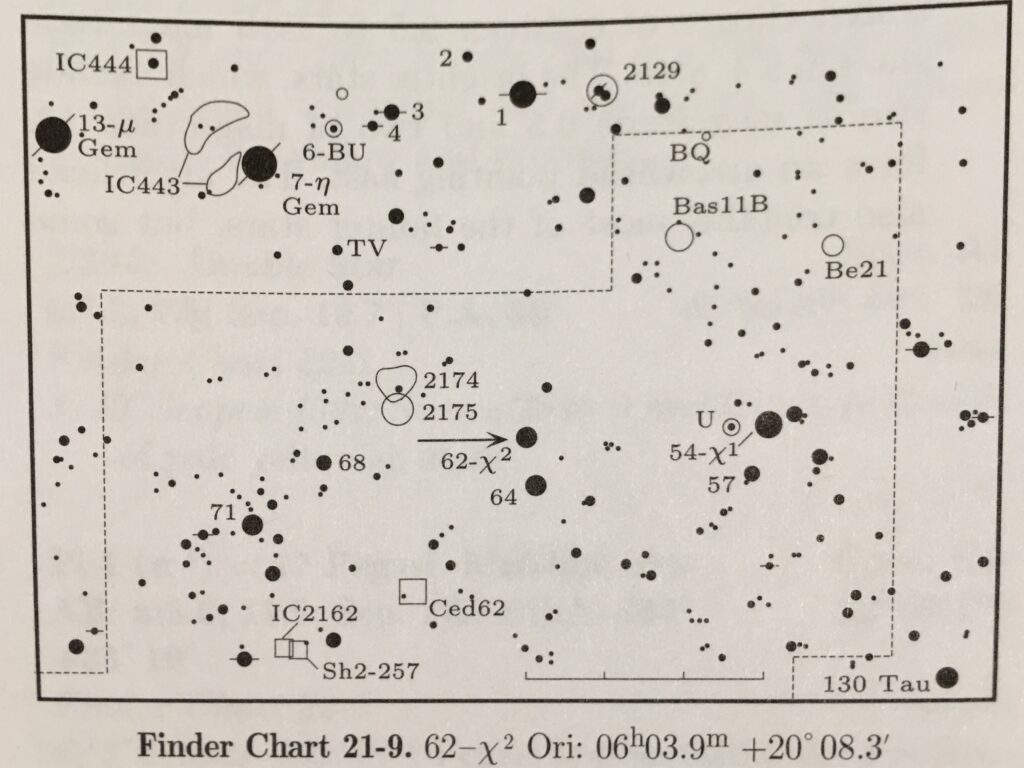
Basel 11B sits just North West of the club and reportedly has 12 stars, I could only see it with averted vision due to the aperture of the 100mm binos, however I would say 3-4 were visible, given they are Mag 10+ so pretty faint for this instrument.
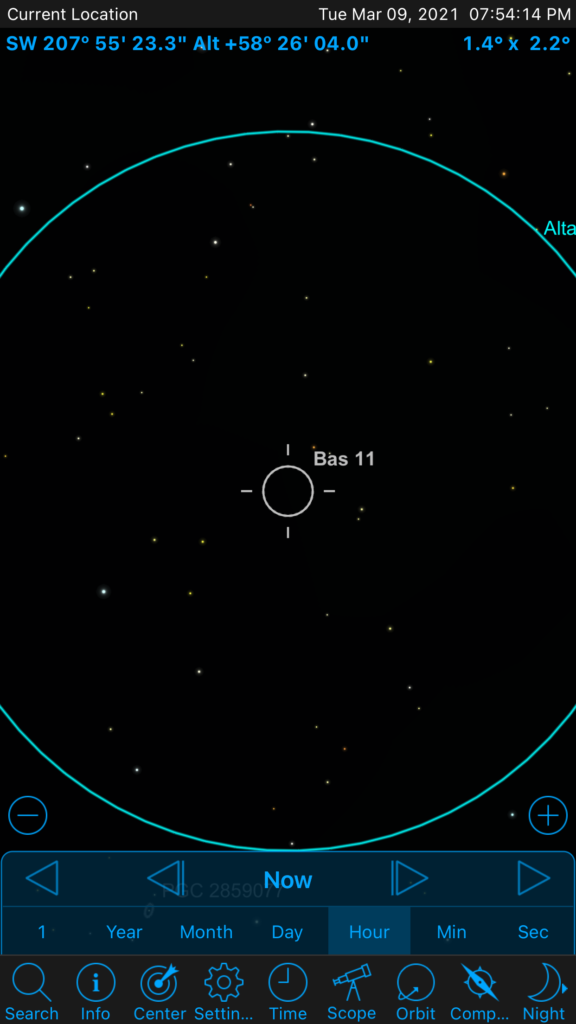
Berkeley 21 – I was really not sure if I could see this, even with averted vision. The cluster is about Mag 11 so right on the limit of my instrument. I kept going back and forth, I was in the right area as it is fairly next door to Basel 11B. I jiggled the binos about but I could not be certain. I will have another go when Orion is higher earlier in the night.
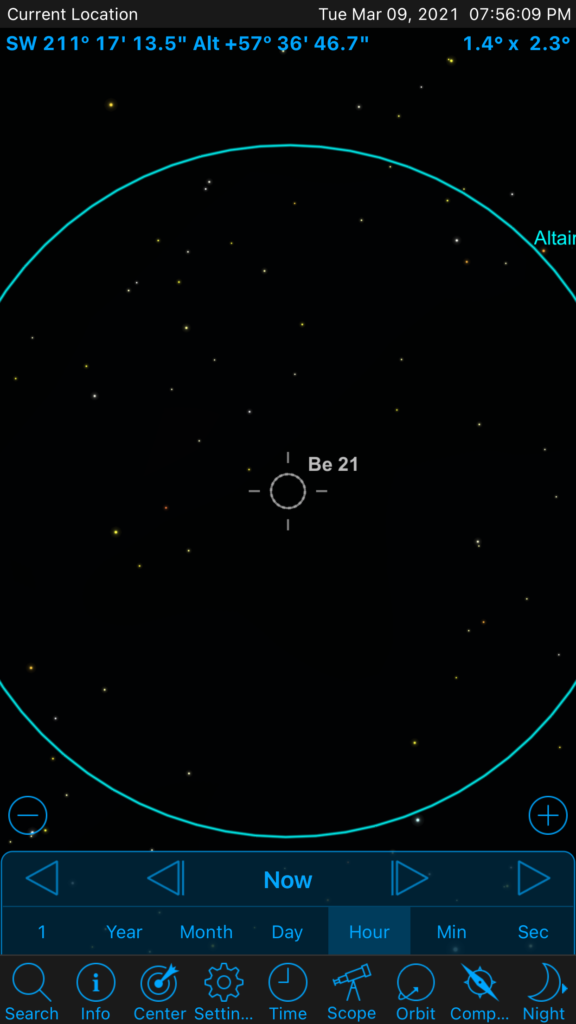
So that was it for me, Orion was setting so it was time for bed.ß
20:00 – 21:25
Out this evening to find MEV-2 and Intelsat 10-02. Whilst some of the society is providing images to DSTL (MOD) within the UK on the MEV2 satellite, I thought I would have a quick go and capturing. Unfortunately due to the small chip the FoV was not large enough to capture useful images so instead I thought I would capture a movie. Gingergeek joined me by Zoom.
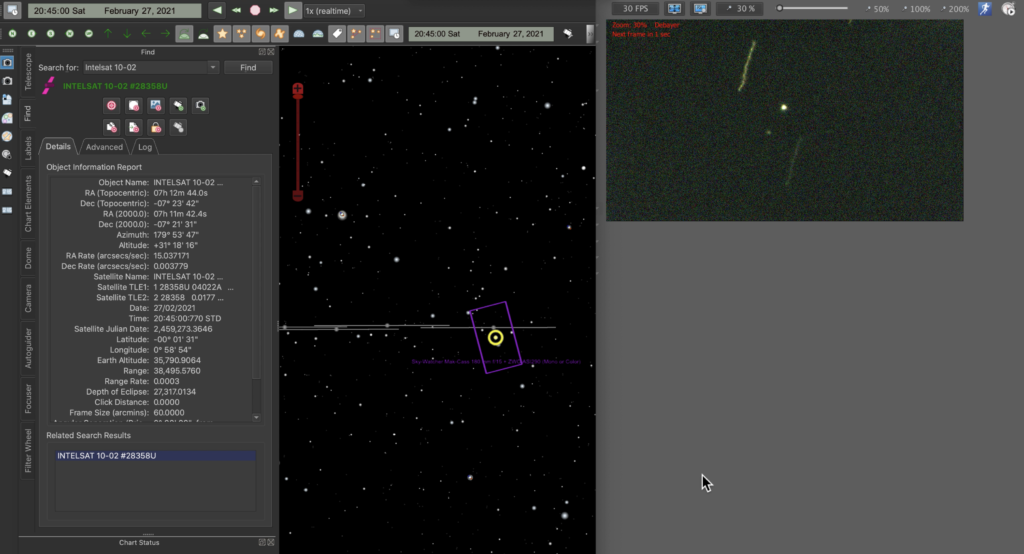
So after polar aligning I slewed to Intelsat 10-02 and with a small nudge of the mount the 2 satellites popped into view. The above image shows The Sky X I used to track the satellites on the left and on the right the capture software, firecap, of the individual frames.
I captured a fair amount and will publish a video from it shortly. Gingergeek and I then slewed to the Moon and took a leisurely stroll around the surface. It did to be fair, take us a while to work out the FoV indicator in The Sky X and set it correctly so we could then move to the areas of the Moon we wanted.
20:57 – 21:53
I pulled out the Mak180 tonight to see if I could image the Moon. After setting up I did not bother with polar alignment due to it really only being the planets which are less picky about tracking. However pointing is another matter.
I have decided I really must get a decent flip mirror. At the moment with the polar alignment not being completed and the chip on the ZWO ASI290MC being so small, I have to take the camera out to then eyeball the planet before putting the camera back in so that its light lands on the chip. Now with the Moon that is not a problem so tonight I did not have to worry.

Given the short imaging session this evening and the realisation that I had not gotten rid of all the dust from last years dust intrusion I took a single video run of a yet to be identified piece of the Moon.
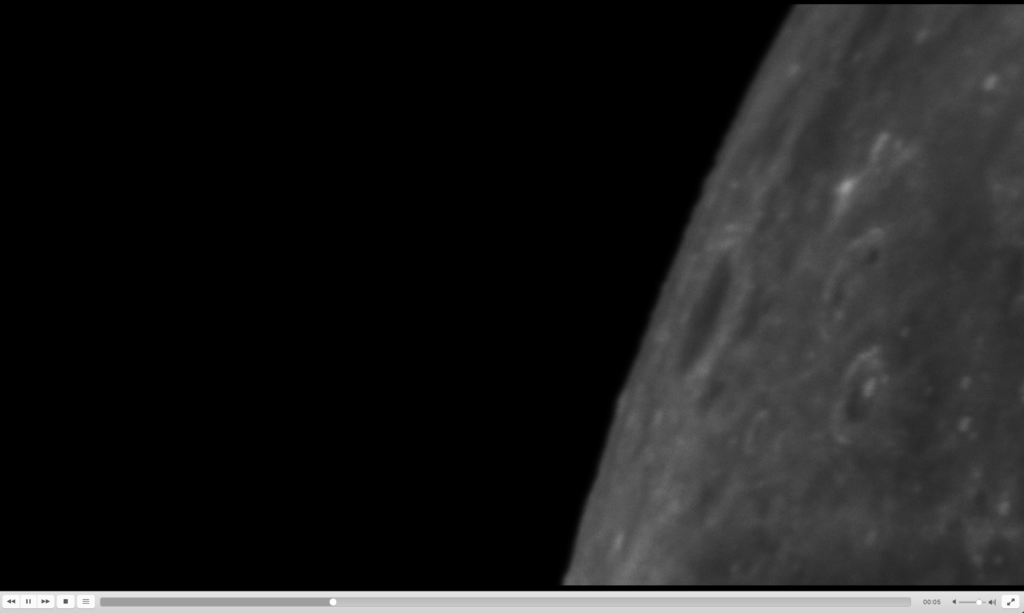
I then moved decided to take some video footage of various parts of the Moon to also discover how much dust I had and how much of a problem it was going to be. Also I just like roving around the surface of the Moon.
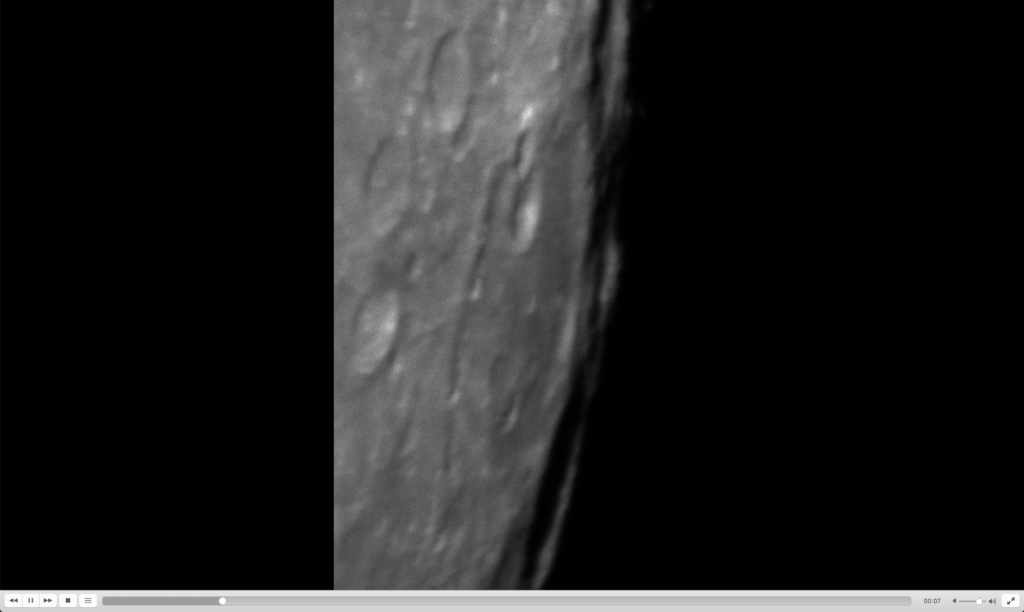
I must also buy another ASI290MC as the one I have had its chip cover fall off and I have been unable to remove the dust from Coombe Gibit, so for guiding this is not an issue but for Moon and planets it is. Given I currently take the camera off the Skywatcher Esprit setup where it is used as a guider I might as well have another and then I won’t ever get dust in the new one which I would use on the Mak. As I’ve said before and will say again, Brendan would say it is cheaper to burn £50 notes than get into astronomy! How true indeed.
18:45 – 00:32
Holiday time! Well at least a week off work. It’s been a cold and cloudy Winter so far. So a night where I can get out the travel telescope and setup in the vegetable patch, the construction site of IMT3b is a good thing. The challenge I have is my ribs still hurt somewhat from being broken after an unfortunate accident 4 weeks ago. So I will go careful.
Earlier in the day I had Luke help me setup the equipment in the garden. First the binos to have a good look round.

Then we setup the Skywatcher Esprit 120 ED on the Paramount MyT.
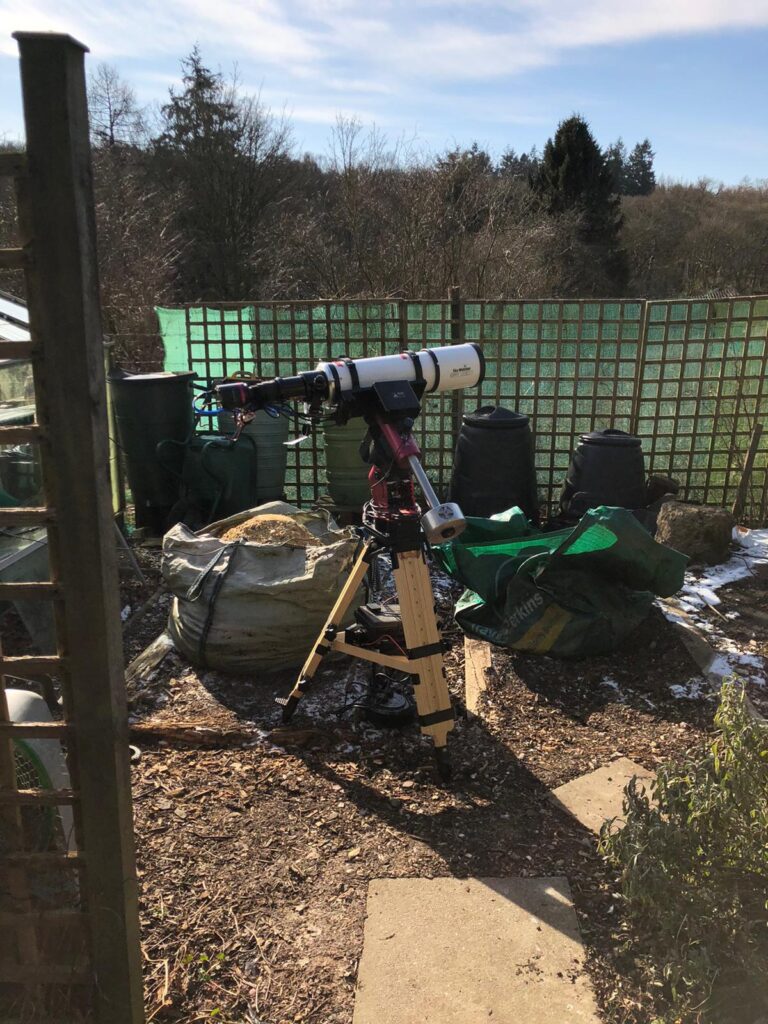
Lastly we setup a “warm room” temporary in nature and fairly cold I would later find out 🥶 in the greenhouse.
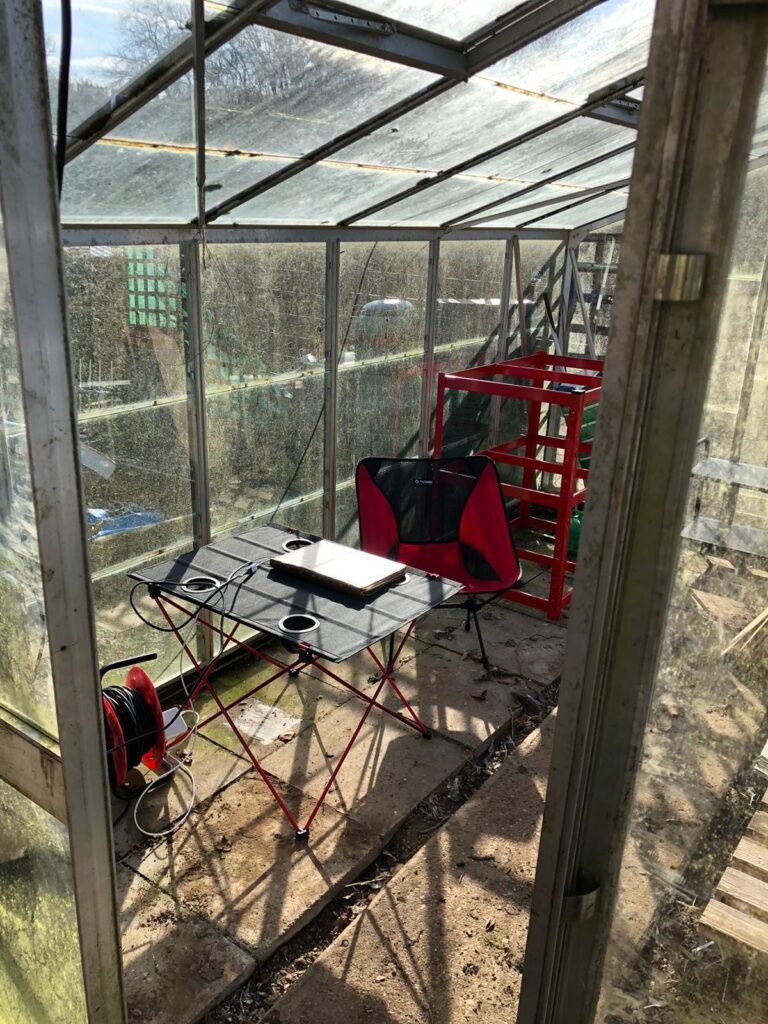
So the night came and after Pizza with my wife I set off out to the garden to start imaging.
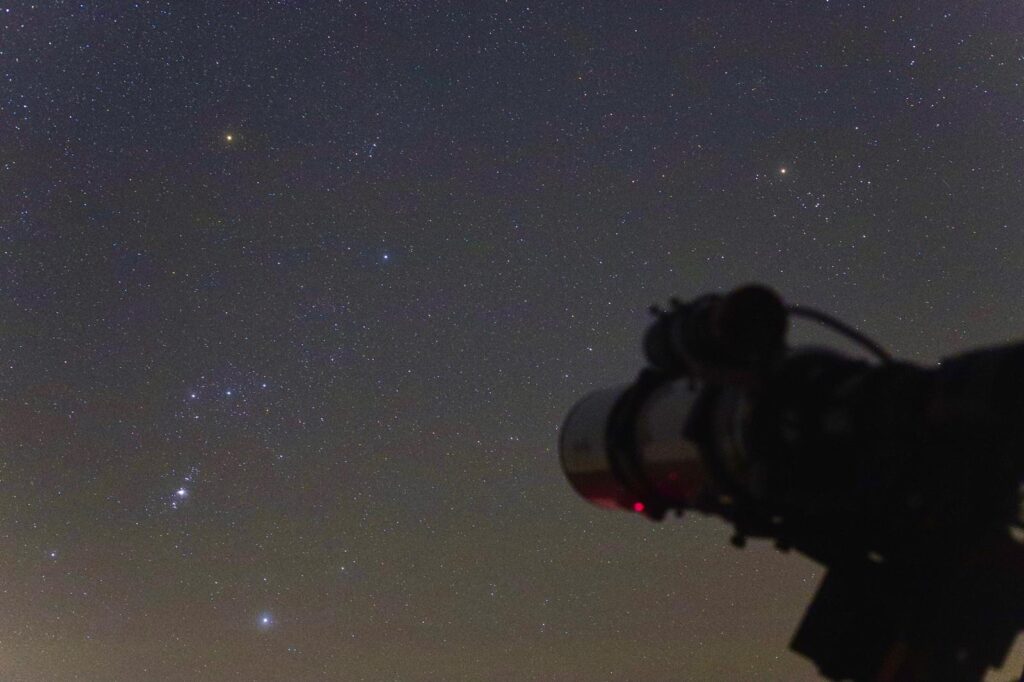
I connected the Polestar camera first to see what my alignment was like after placing the tripod down in a fashion I though condusive to being polar aligned.
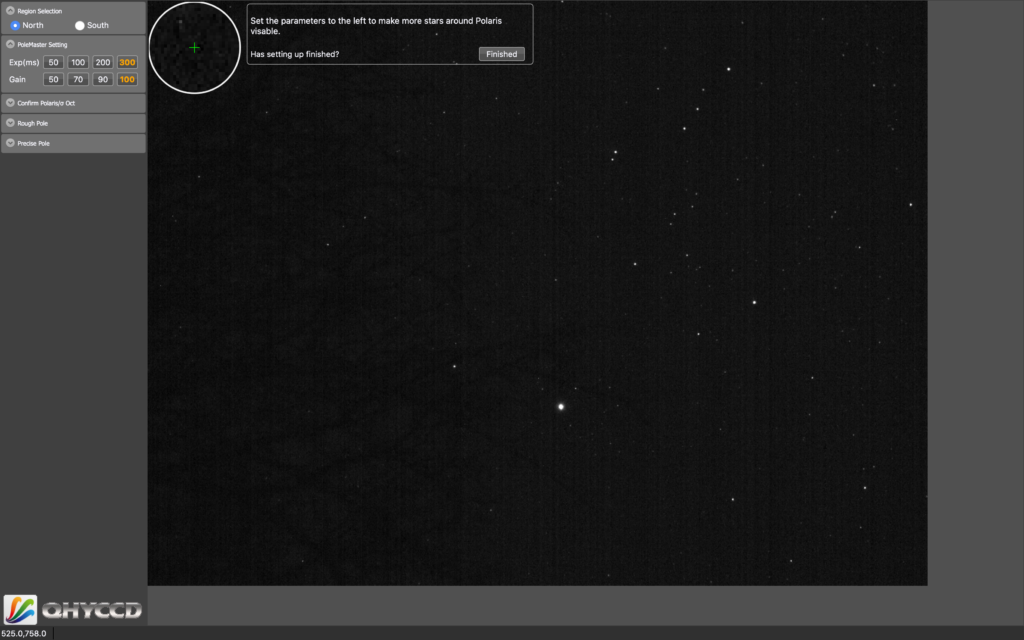
I then set about measuring the difference in Polaris to determine how much I would need to move the scope to align it.
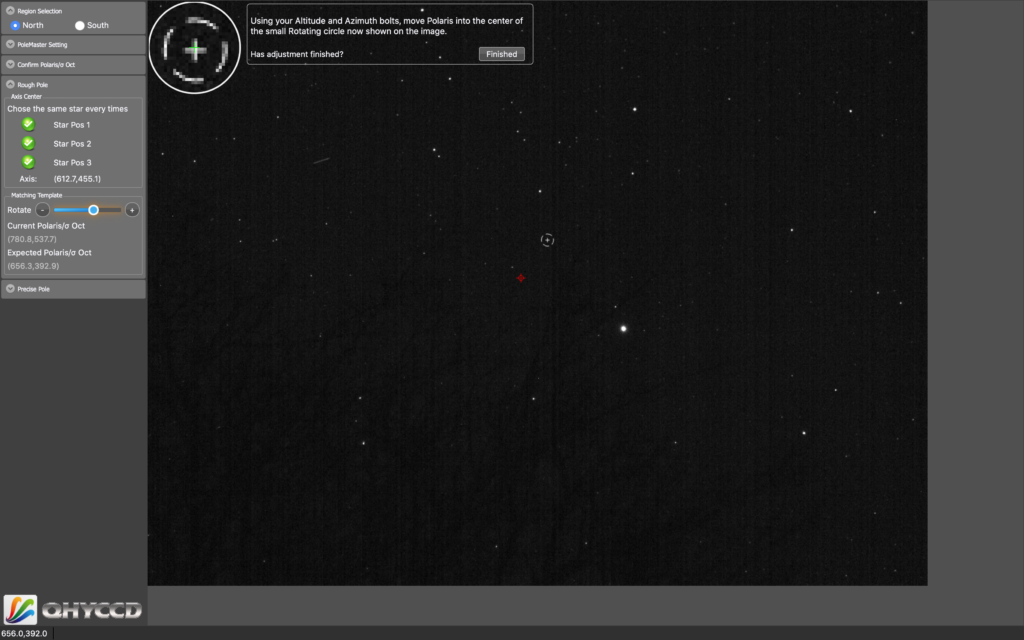
I then fiddled with the altitude and azimuth knobs to align the scope.
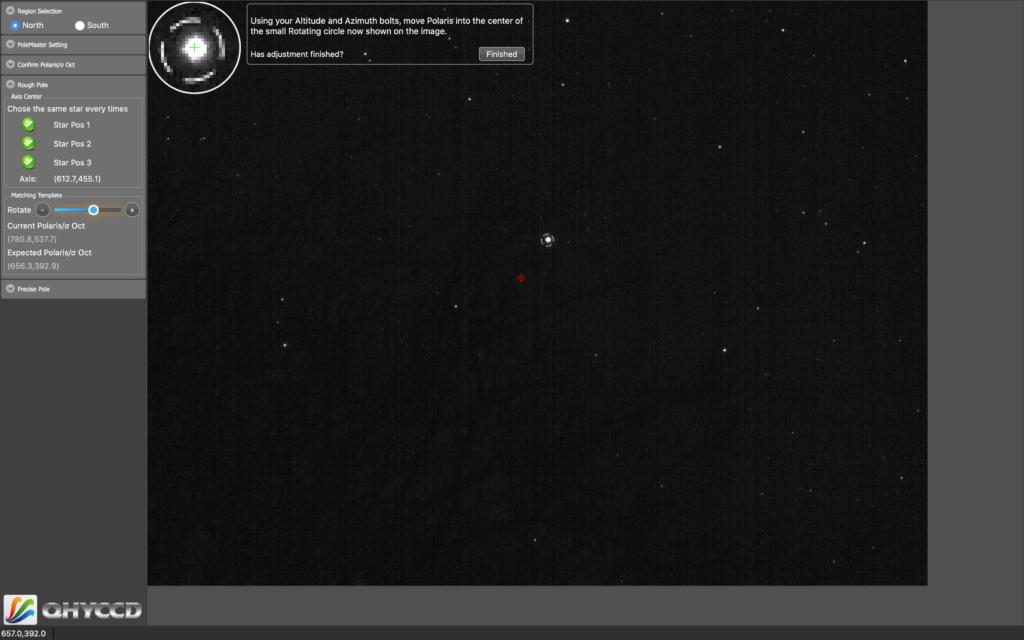
Next I slewed to the first object for the evening which was M45, the Pleiades, the Seven Sisters. I started EZCap and look at the focus which was not far off from the last time I was out a few weeks and it is good enough.
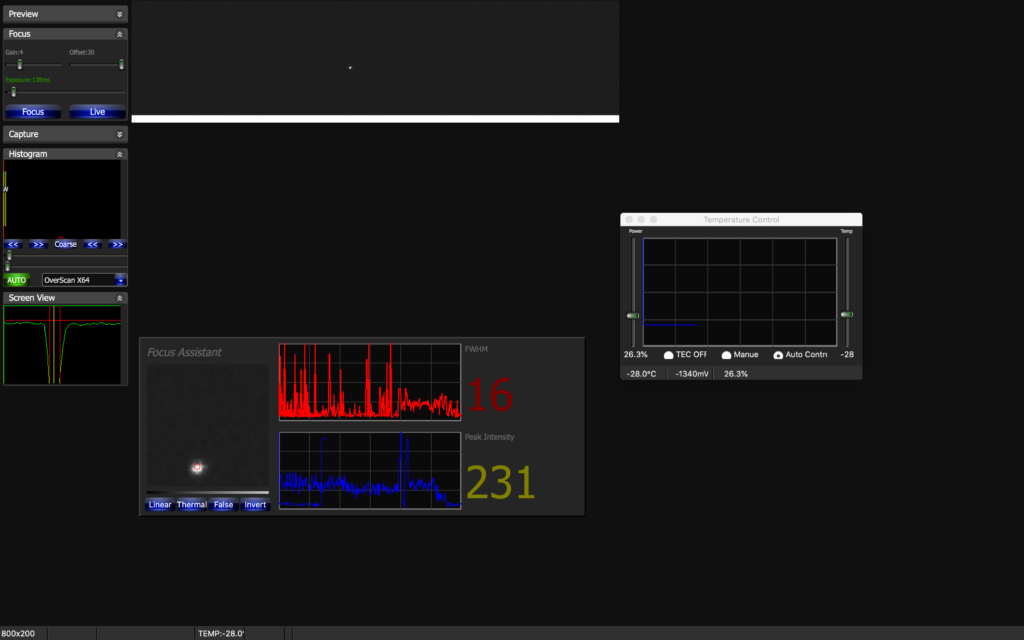
I then took an image of M45 to make sure it was in the field of view. I also setup the Planner in EZCap to with the sequence for capturing the data. I set the camera to Gain 7 and Offset 20 with a temperature of -30℃.
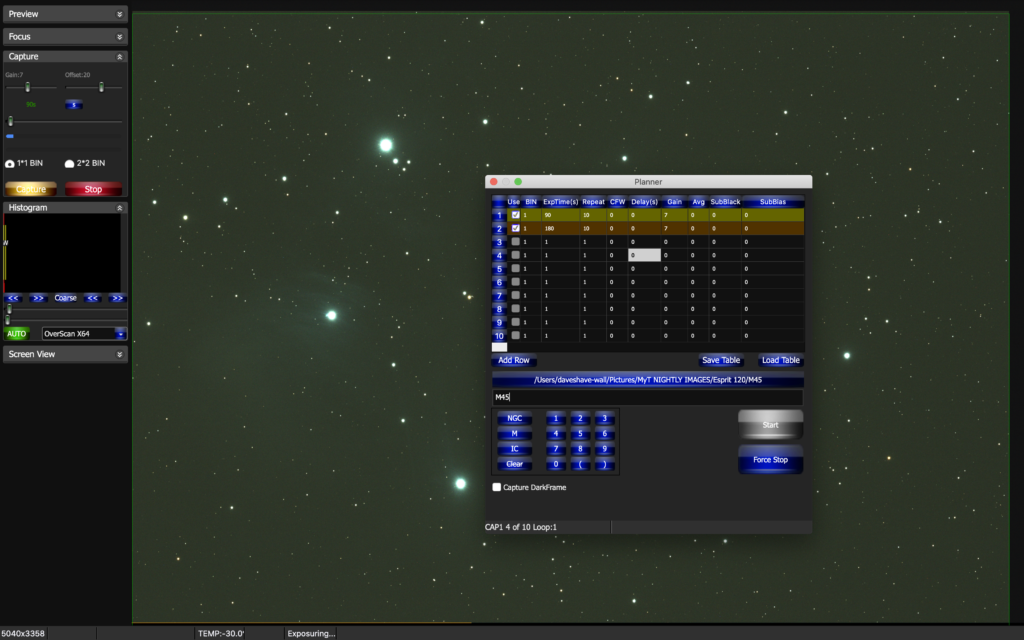
I set PHD running and that was when I hit a problem. To cut a long story short, I had forgotten to plug in the ST4 guider cable into the ZWOASI290 camera and then into the Versa plate of the Paramount MyT. Without this there is no successful calibration within PHD. It took me 1 hour to work out I needed a cable and a further 45mins to find it since the move of house. Your IQ really does drop when it is dark and cold!
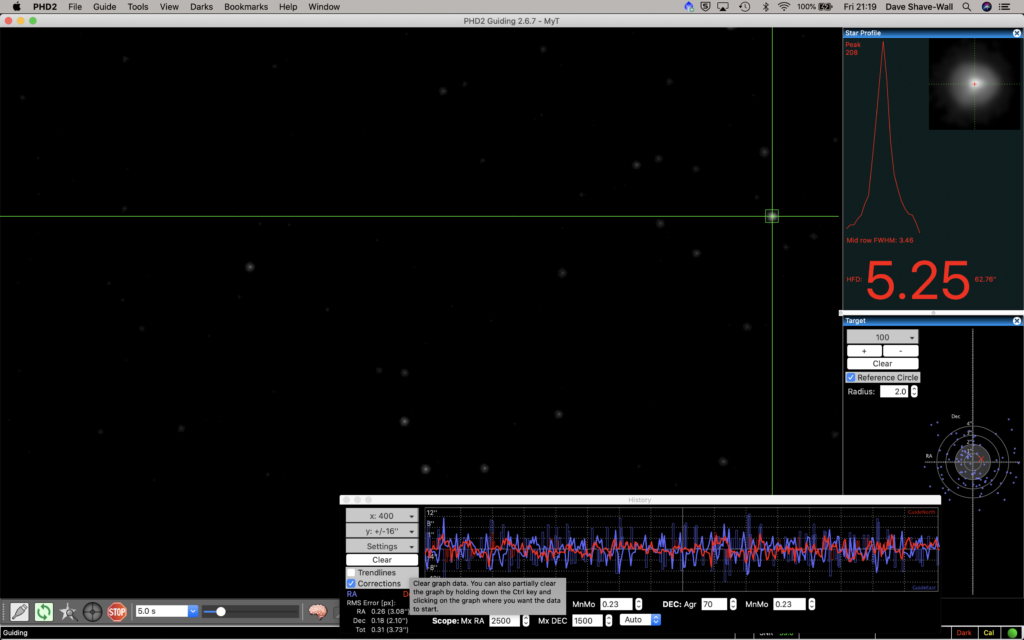
Eventually the calibration completed once the cable was fitted and I could start to see the gusts of wind in the data. I set a sequence running for M45 and was impressed with the results. I took 10 x 90s and 10 x 180s.
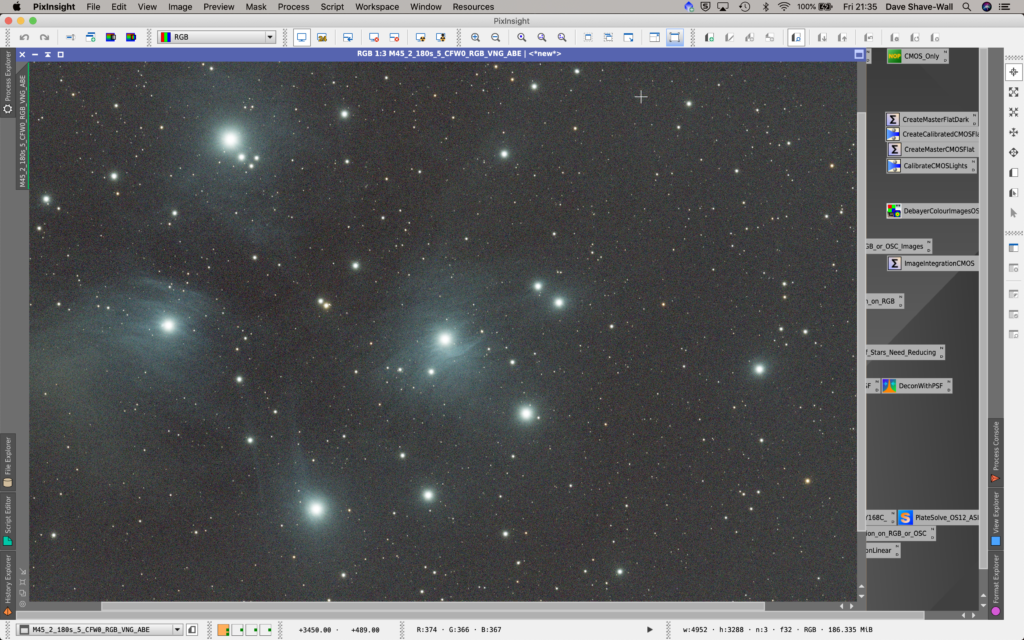
I then switched targets and headed over to M42 and M43 along with the Running Man nebula, also known as SH2-279 and NGC 1977. I took 30 x 60s, 30 x 30s and 10 x 180s.
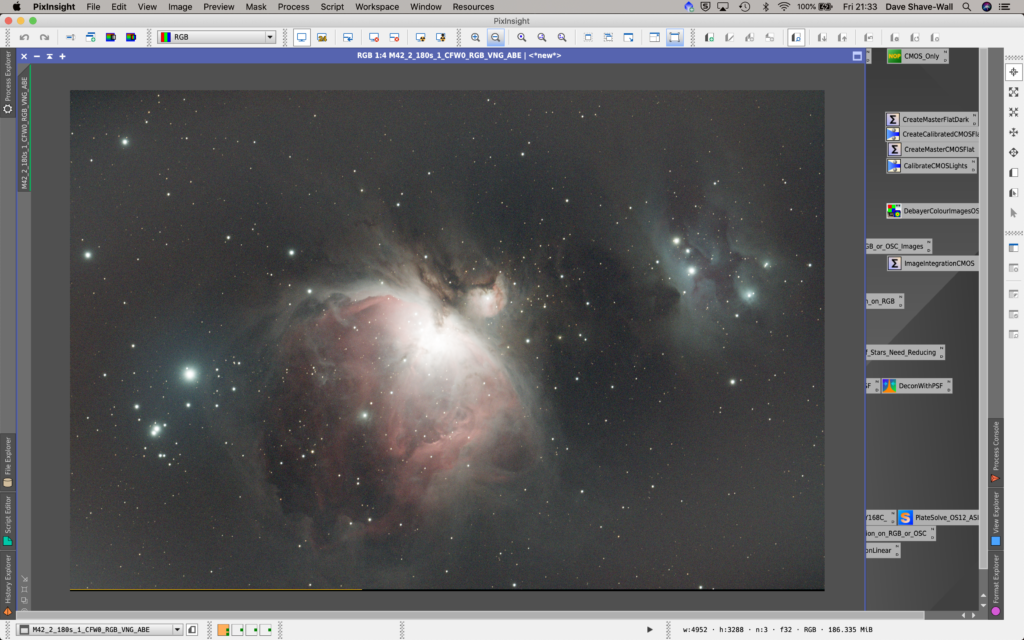
Next and what would be last on my list tonight was M35 along with NGC 2158. I took 10 x 90s and 10 x 60s starting around 23:45.
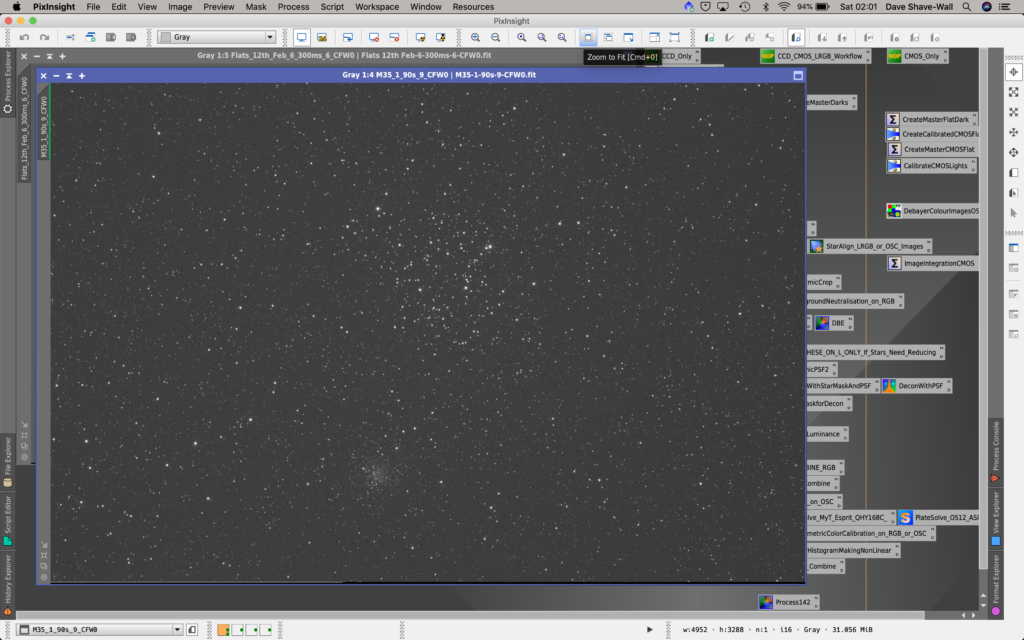
Now the clouds at a high level started to roll in. So I decided to take some Flats and then take the darks tomorrow morning.

So I packed up and had one last look up at the night sky.
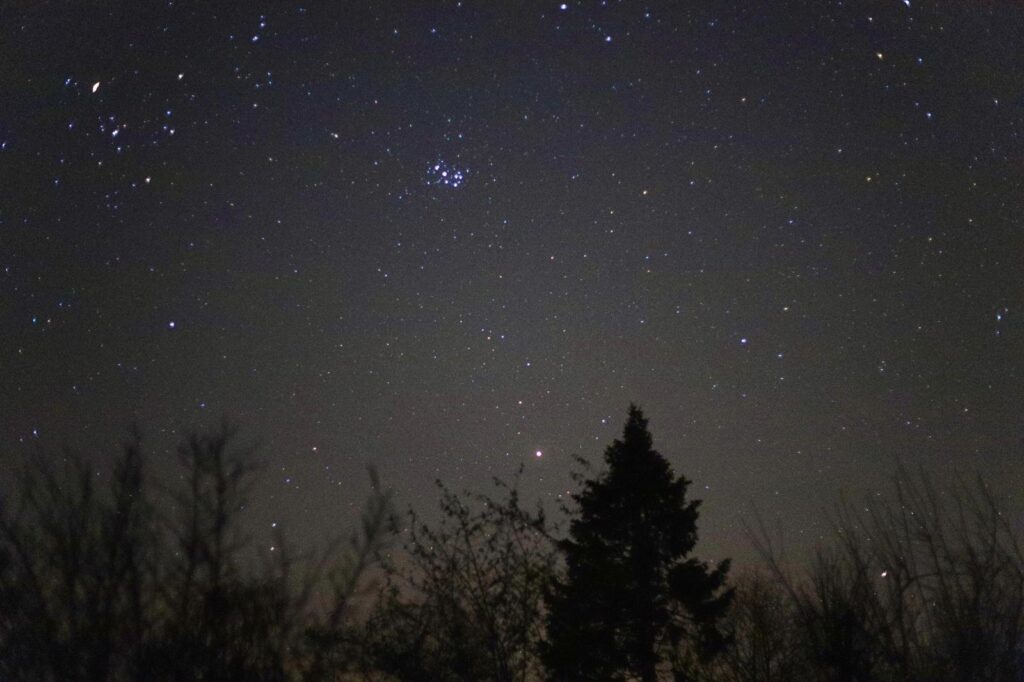
The most funny thing about moving to a new house is assuming you have understood your horizons correctly, well at least I found it funny when I got it wrong. After several attempts to catch the conjunction, traveling out to a nearby field with low horizons, Christmas Eve was no difference. I had set off, this time with the Esprit 120 and QHY168C and on arriving at the location realising that the weather was too cloudy to grab the conjunction.
So off I went back home. I decided to wonder up the garden to see if the weather had cleared when I returned, to find that not only was there a gap on the clouds, but also I could see Jupiter !!! This meant only one thing, that my South West horizon was not +15 degrees but actually +4 degrees! Wow that is good and lucky.
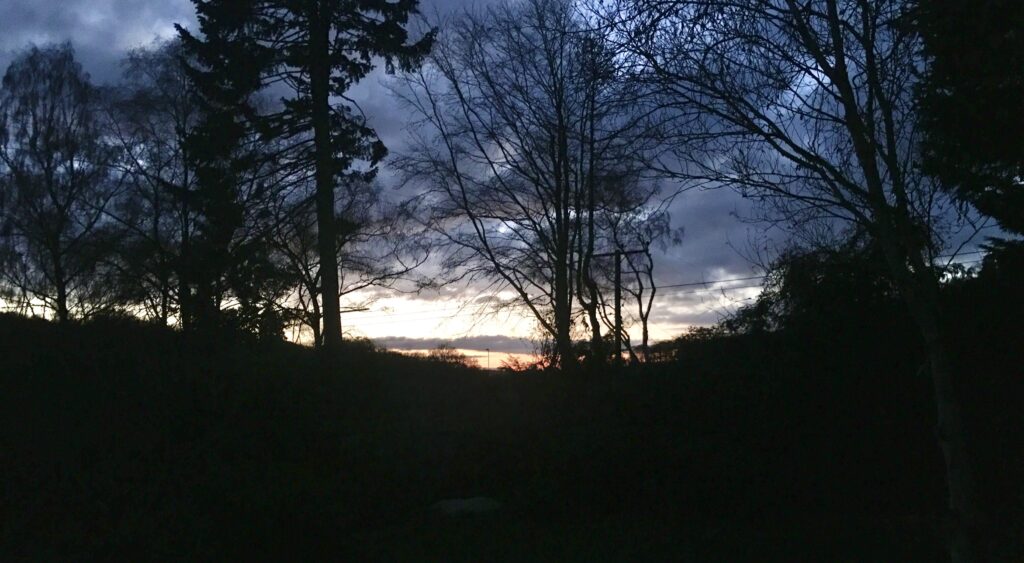
I ran back to the car and started hauling the travel scope to the building site of IMT3b which is currently a vegetable patch, this is around 200 feet away from the car part way down the garden. It took 5 trips to move all the equipment, good for my Apple watch exercise rings, not so good for the setting of the conjunction of Jupiter and Saturn. By the time I setup and slewed the telescope round the pair were setting behind the ancient forest in the distance but I managed to snap a single image! Perfect.
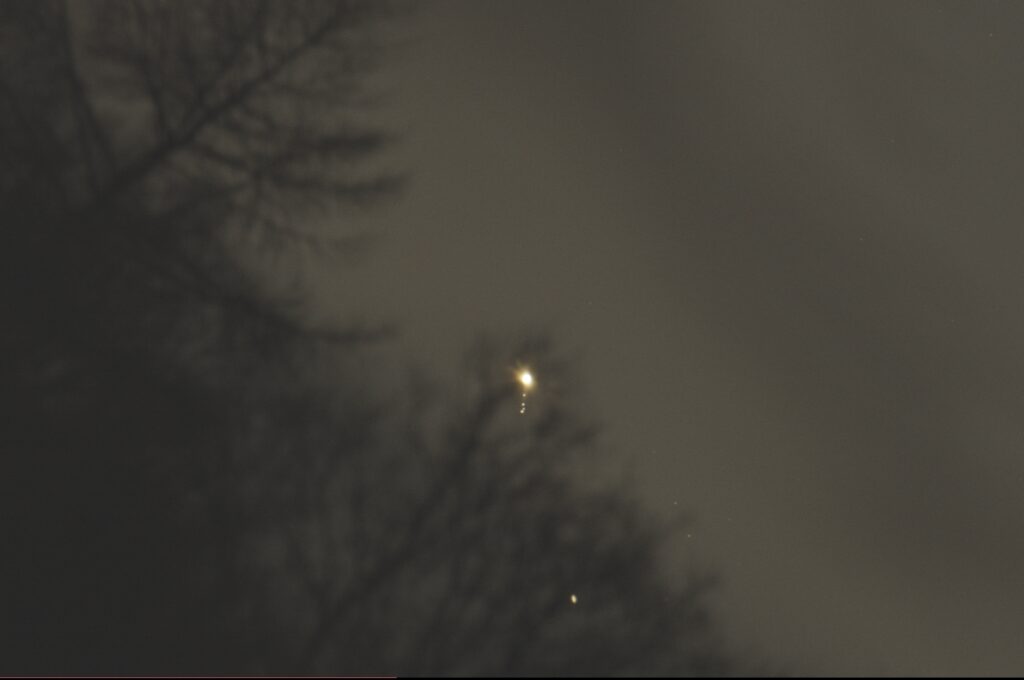
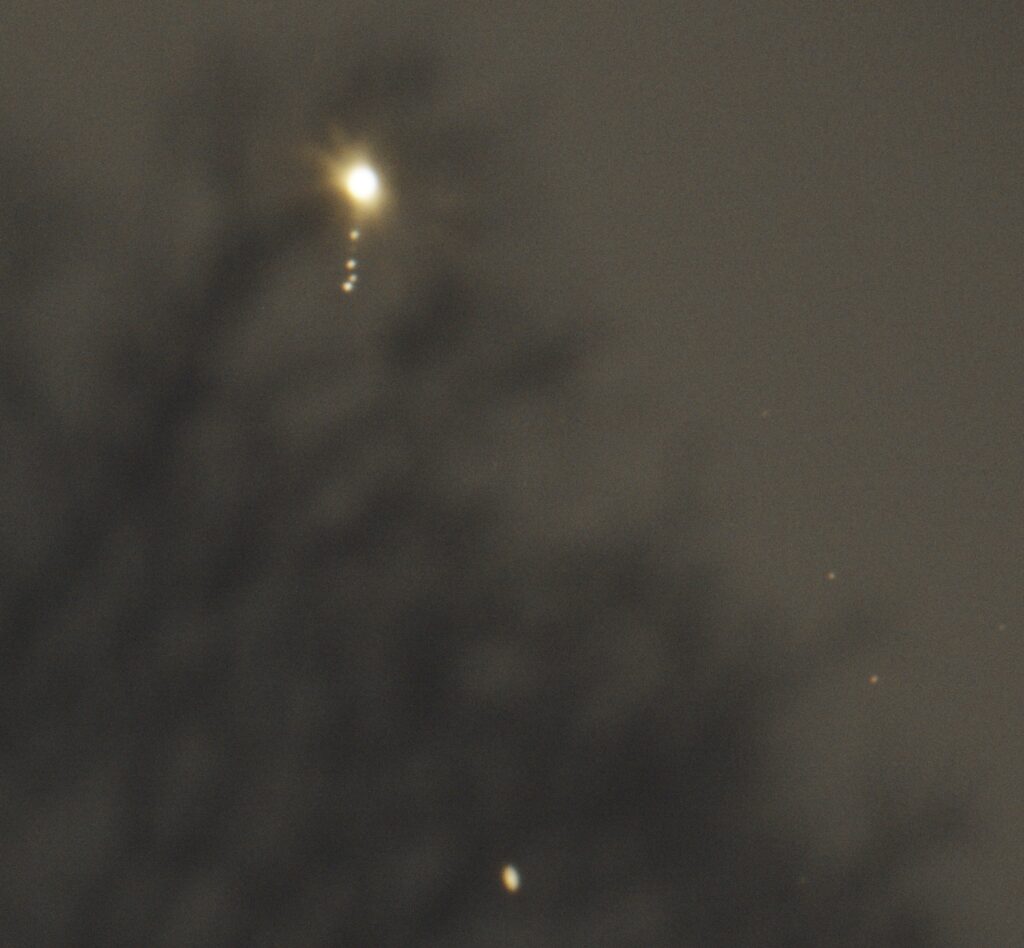
The weather forecast suggested that this was the only clear night for some time and the planets were low in the sky. So GeekGirl and I wondered if Jupiter/Saturn were visible from the front of the house to the South-West or if we were going to have to traipse over to the muddy farm fields to view the conjunction.
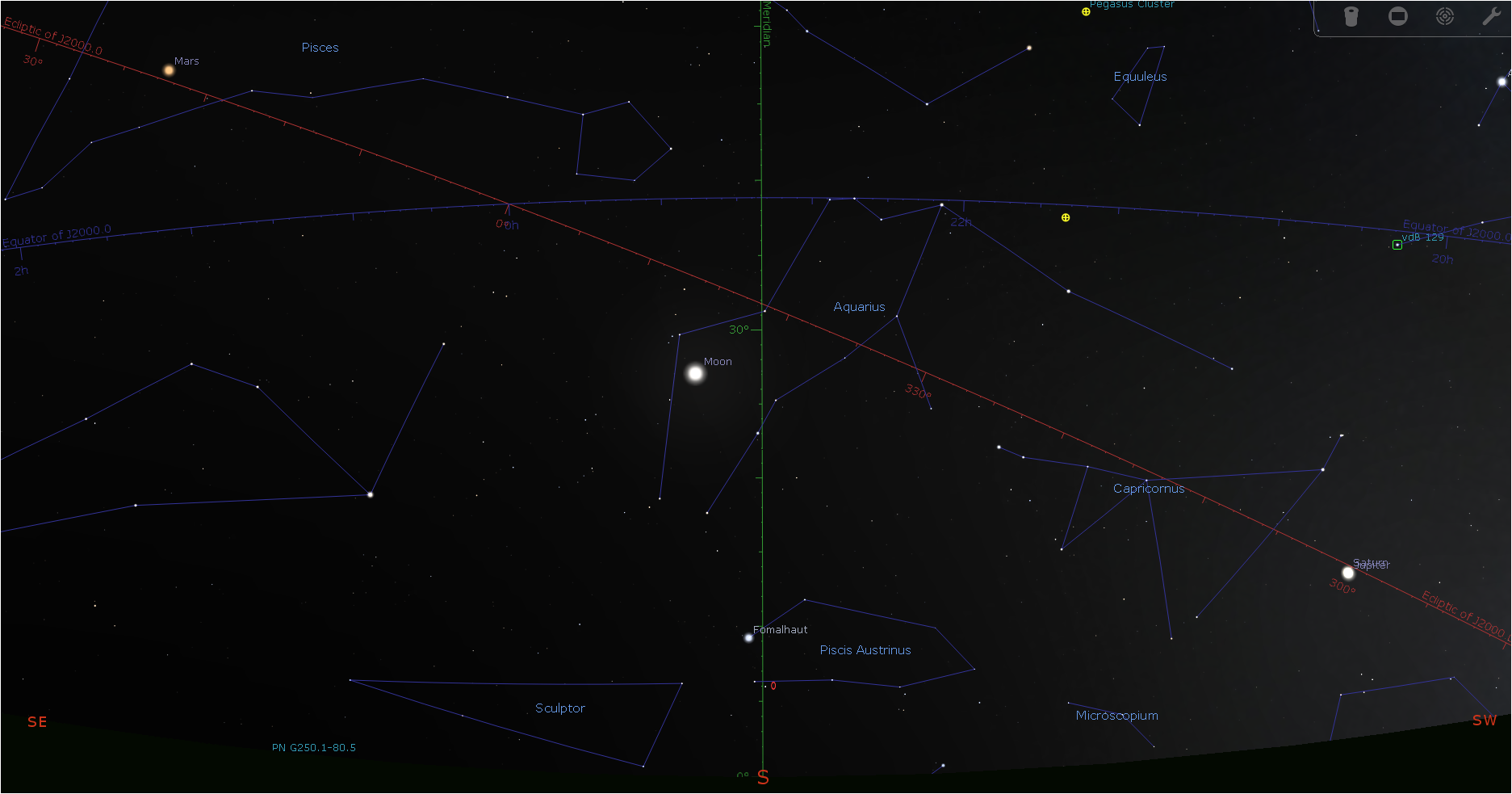
Luckily for us even though they were less than 10º altitude we could see them both between two houses from the front drive. We quickly got some warm gear on and setup the binoculars and the kiddy scope (Sky-Watcher Heritage 150P Dobsonian) on a camping table.
We quickly got Jupiter/Saturn in GeekGirl’s binoculars (Celestron 20×80 SkyMaster). The pairing although not as close as they would be on the 21st still looked nice. The rings of Saturn were discernible and the four Galilean moons were visible in this modest setup and I’m sure the view would be have been better in Dave’s monster binoculars due to the aperature.
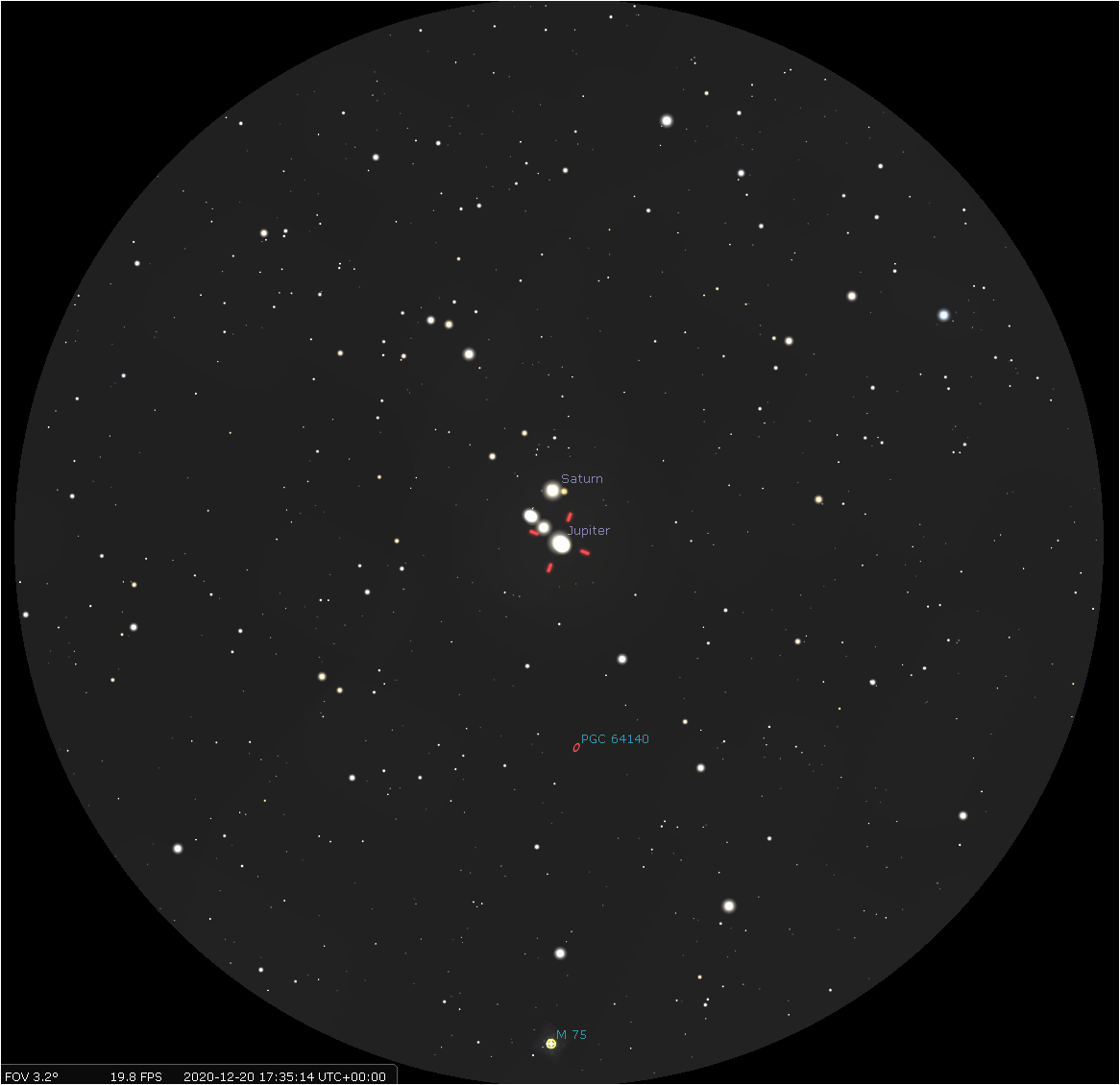
In order to get the focus for the planets I used the Heritage 150P on the near half Moon (47%). The views of the craters on the terminator along with the shadows were amazing, we could see the centre peaks of many of the craters.
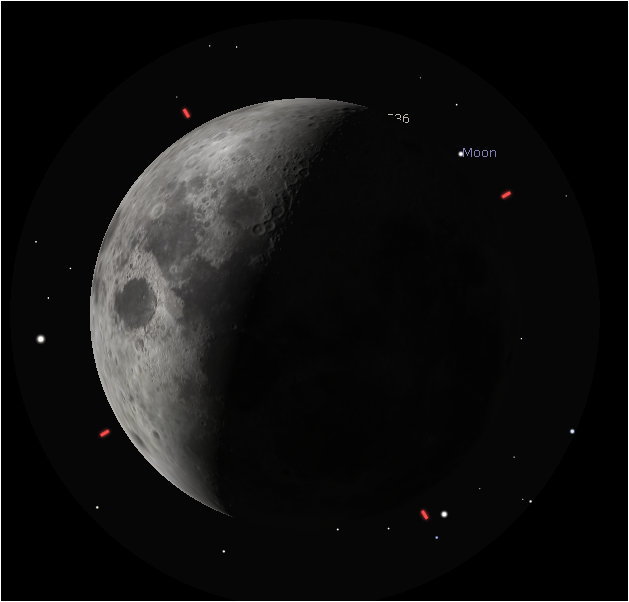
I wonder what they looked like in Dave’s Sky-Watcher SkyMax 180 Pro ?
Our next-door neighbour popped out and we invited him to view the planets and the Moon. I think he was impressed but everyone reacts differently to the experience.
Once we had both wondered over the Moon, checking out the mountain ranges and the changing shades of grey for the Mares we turned to viewing the conjunction in the 150P using the standard eyepieces (SW Super25 & Super10) that came with the scope.
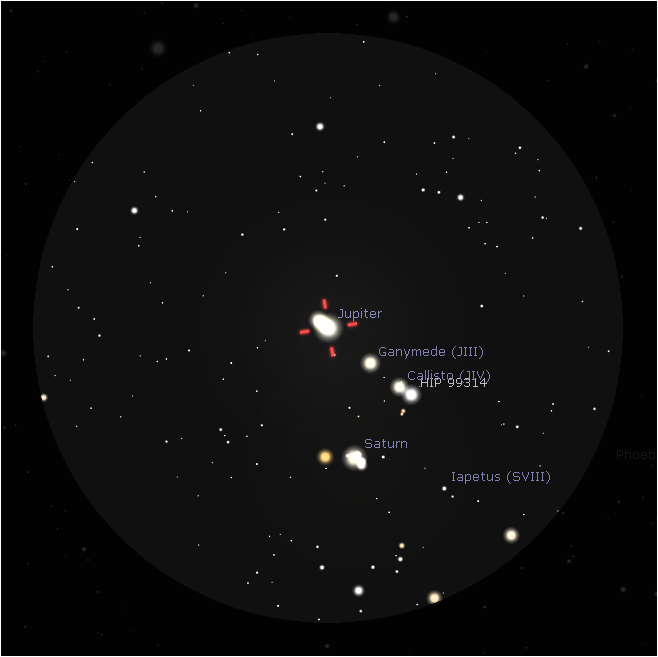
We could see all four Galilean moons with Io being placed close to Jupiter’s limb. The division in Saturn rings was visible and GeekGirl could glimpse Titan so she was happy. All in all a pleasant experience, which is rare in the current human malware situation. I finished off the evening with a Brewdog IPA ….. bliss !
Start time 3pm – End time 6pm
After deciding that I could not get the conjunction of Saturn and Jupiter at the new house, I spent the best part of 40 minutes packing up the travel scope to travel locally to view the conjunction. I set off to view about 1 mile away across a field with allow horizon. I took my Mak180 without the Barlow and the ZWO290MC on the Paramount MyT with the Berlebach tripod. On arriving at the side of the road on the narrow country lane in North Hampshire, I was just about to setup when I realised not only had I forgot the travel car battery, but also the laptop. After a few expletives and a good old English, “I cannot possibly believe I did this, oh well carry on”, I jumped back on the Landrover and set off back home to retrieve the important parts. On arriving back home I ran up the garden to the shed for the battery, grabbed the laptop and jumped back in the car as time was against me for capturing the pairing before they set below the local horizon about 6pm. It was not 4pm.
I arrived back at the field and quickly set about fitting together the mobile setup for the 2nd time!
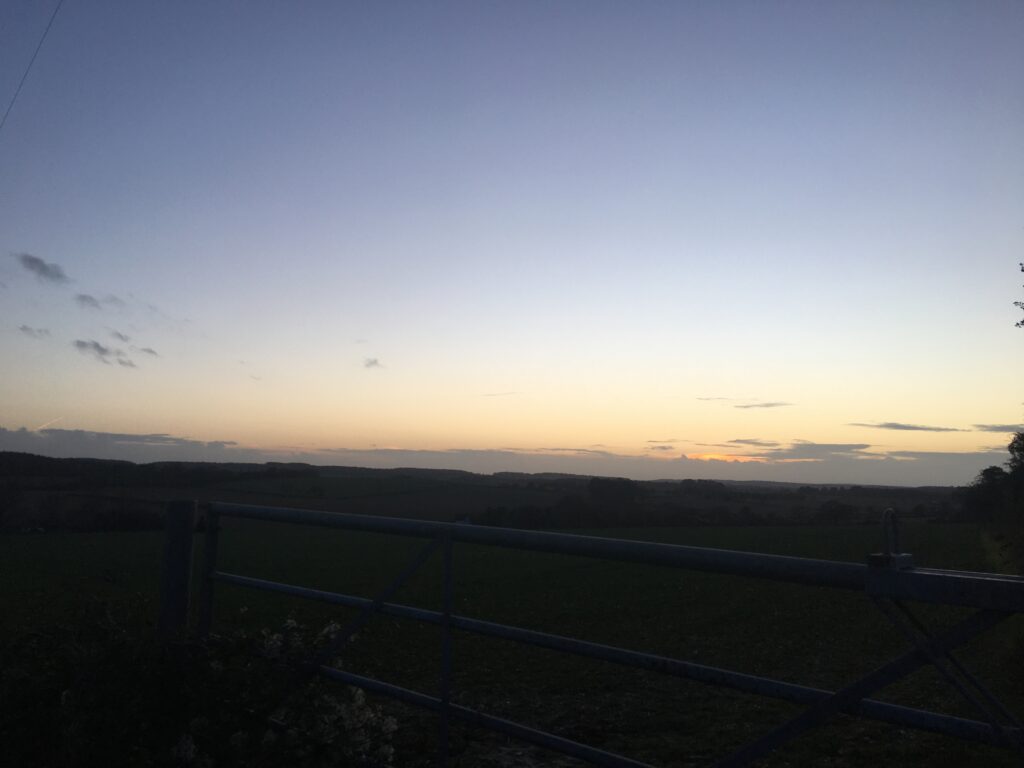
This time I settled the tripod and mount up in quick time, slide the Mak180 with its imaging train into the Losmandy Versa plate and connected the Mac. I manually aligned on Jupiter which by this time I could see with my naked eye, synced the scope and started the imaging software. After a few back fourths I found Jupiter, however Saturn was nowhere to be seen. It soon became apparent that my field of view FoV indicator on Sky Safari 4 was not accurate and indeed both planes on this particular day would not fit in! So rather than waste the occasion I shot some view of Jupiter and then slewed to Saturn for the same.
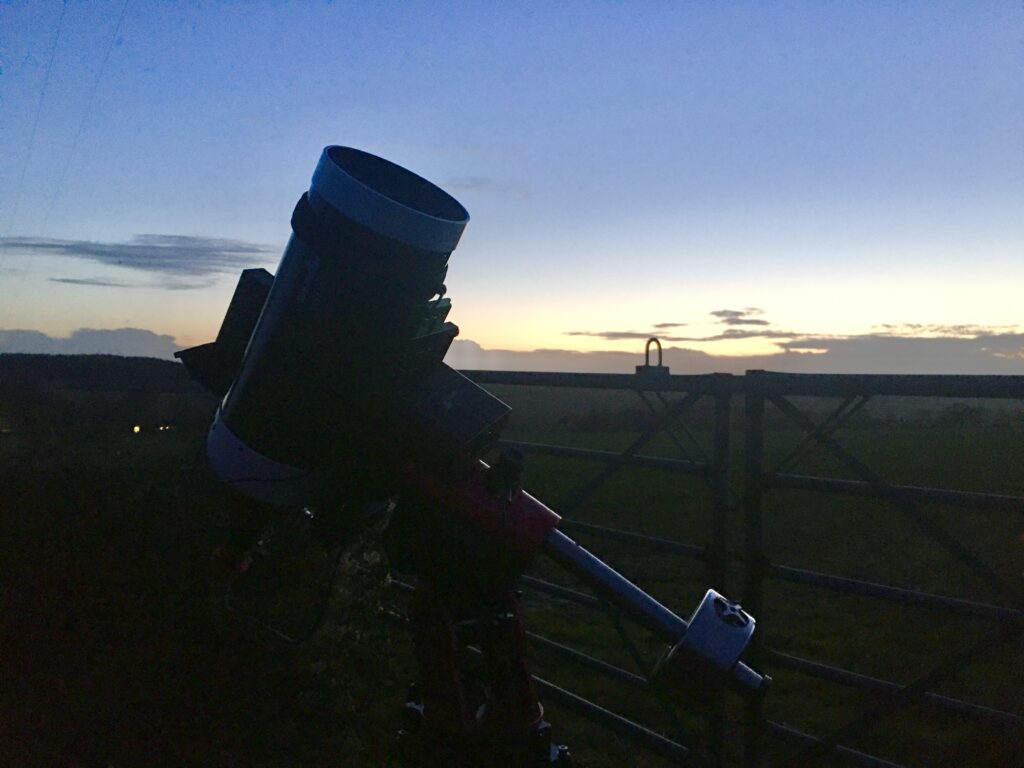
I then packed the setup away, but before heading off grabbed the Canon 6D with the 100-300mm lens and grabbed a few exposures. My first attempts were not good, having not used the camera for some time and forgetting how to set the correct exposure. After a while I grabbed a single good frame, over exposed to see the Galilean satellites.
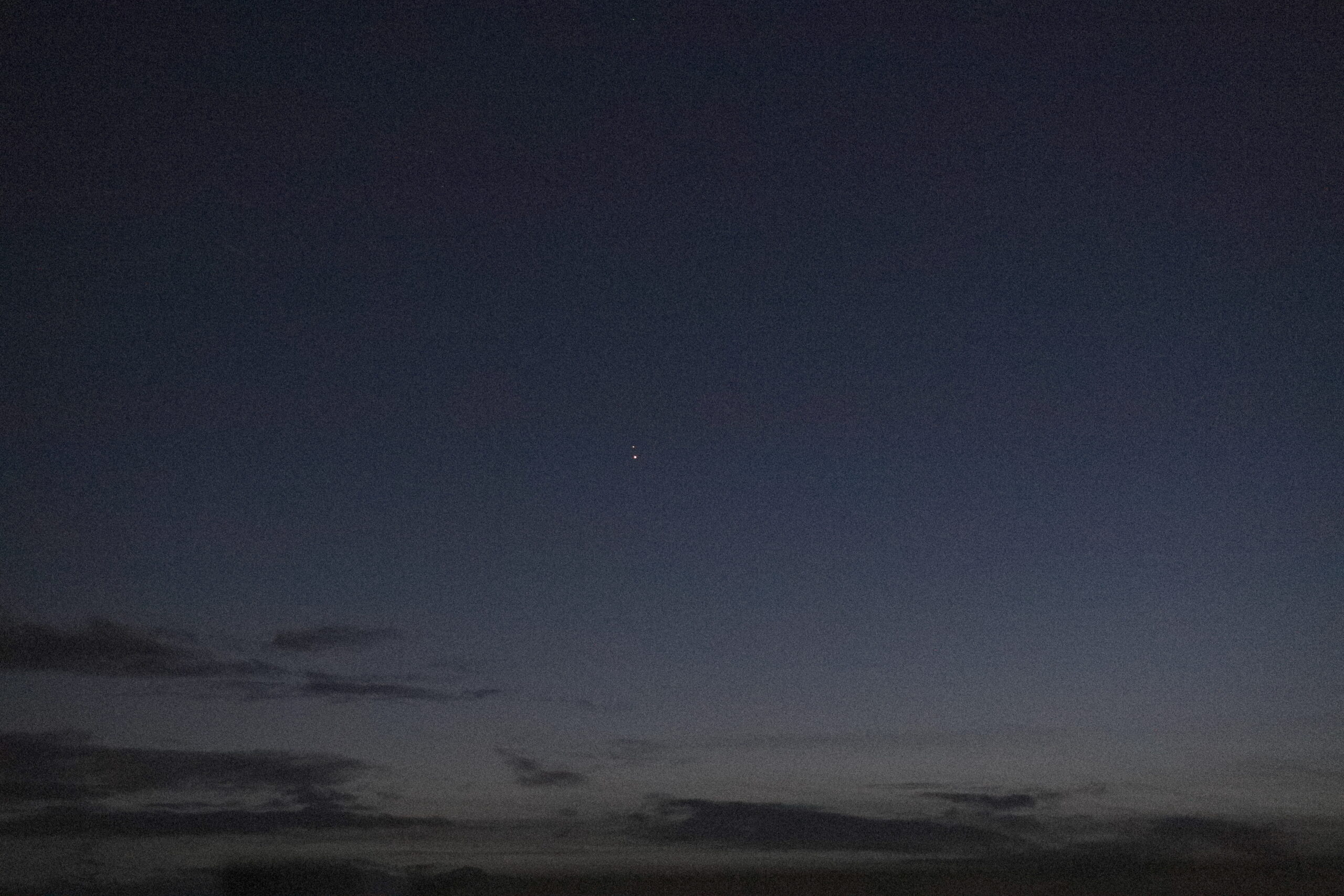
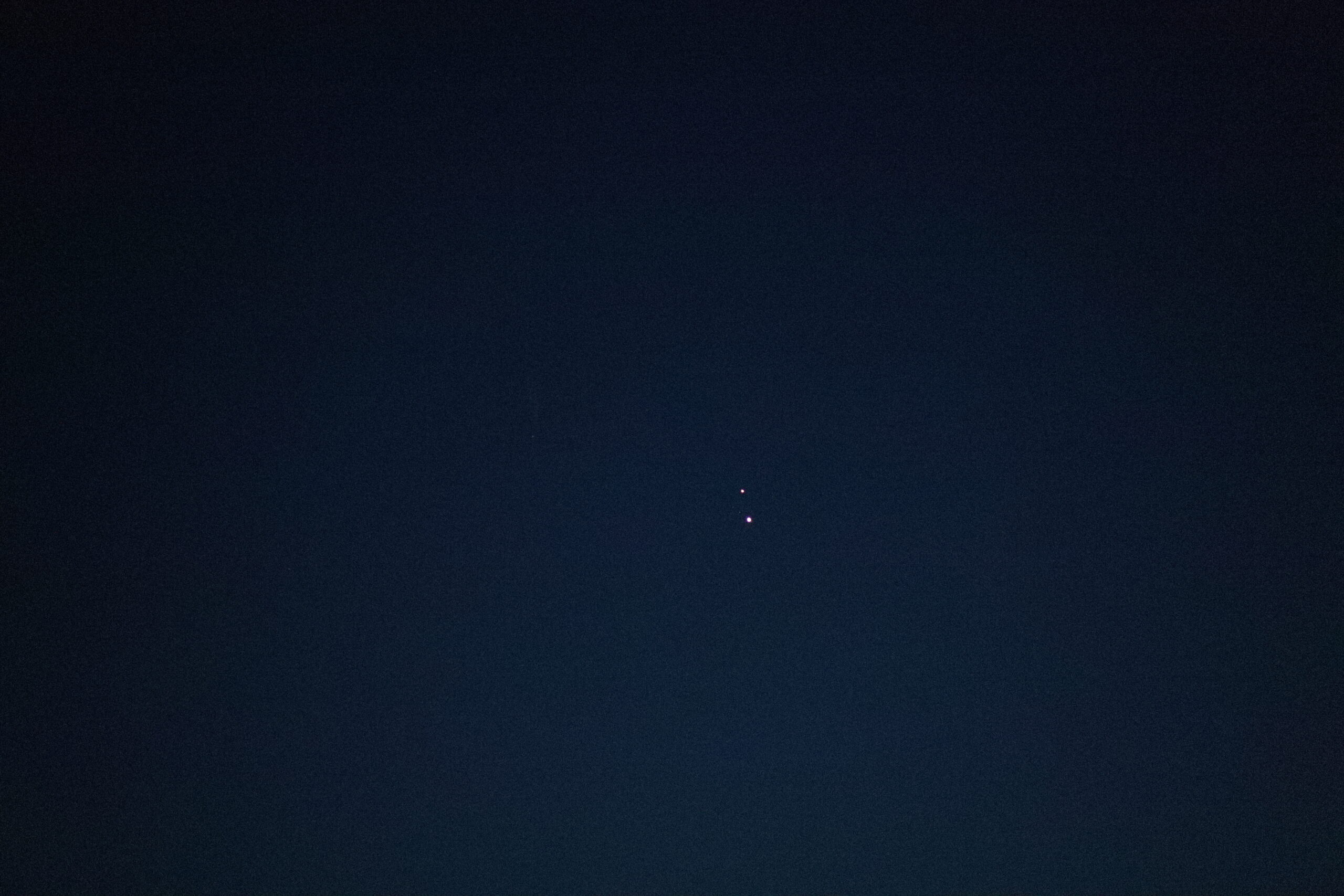
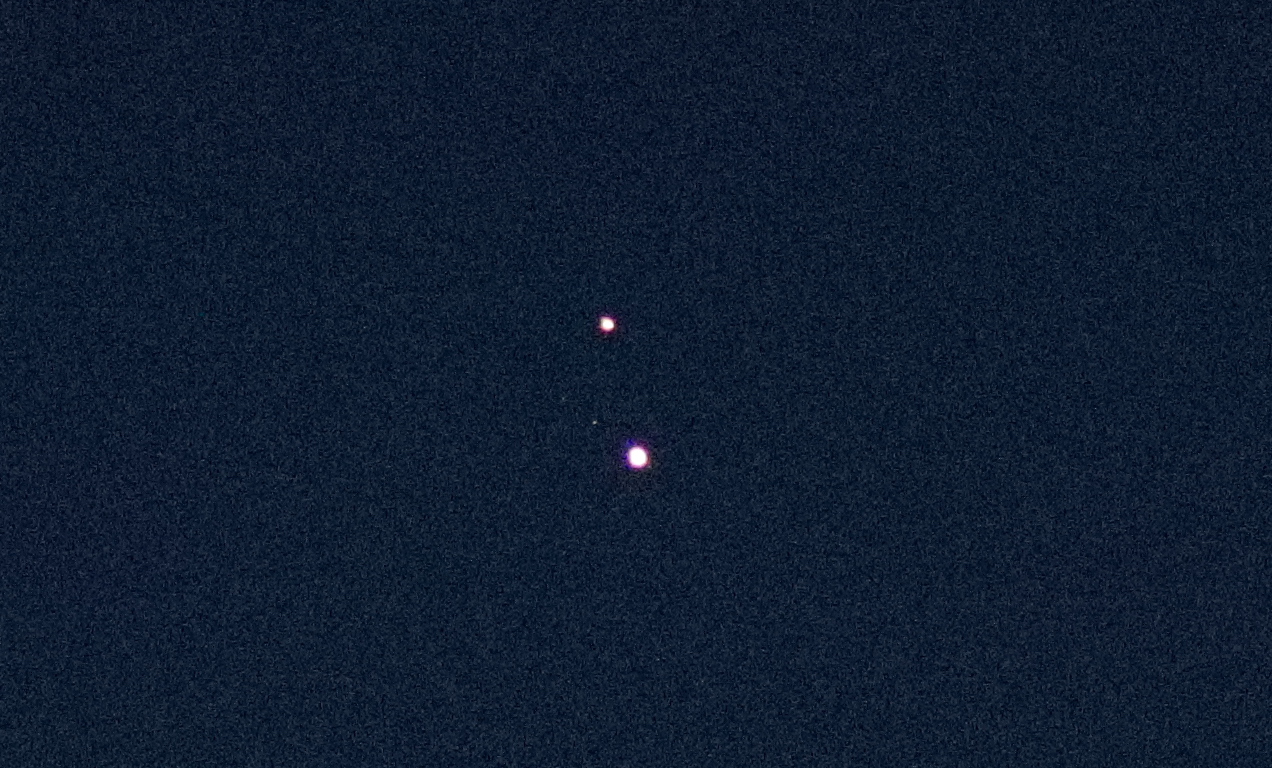
I would attempt another go with the larger FoV Esprit 120 a few nights later.
19:30 – 03:48
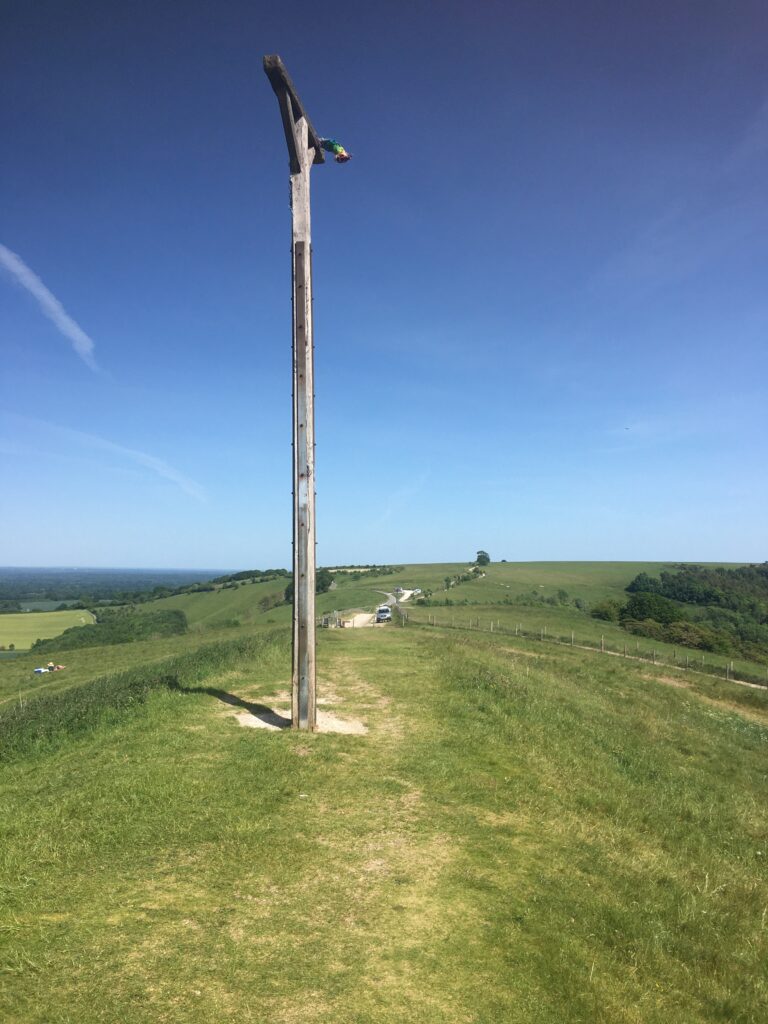
Another visit to Combe Gibbet tonight with another astronomer, GingerGeek. After forcing him to leave the comfort and safety of his own home, where his girlfriend gives him tea, coffee and beer and with the luxury of mains electricity, he joined me at the very dark, very blustery sight near 1,000 ft up in the North Downs of Berkshire, formally Hampshire, they moved the line!
We left at 7:30pm and after the 50min trip arrived at the long road up to and past the Gibbet, which is really not much of a road at all.
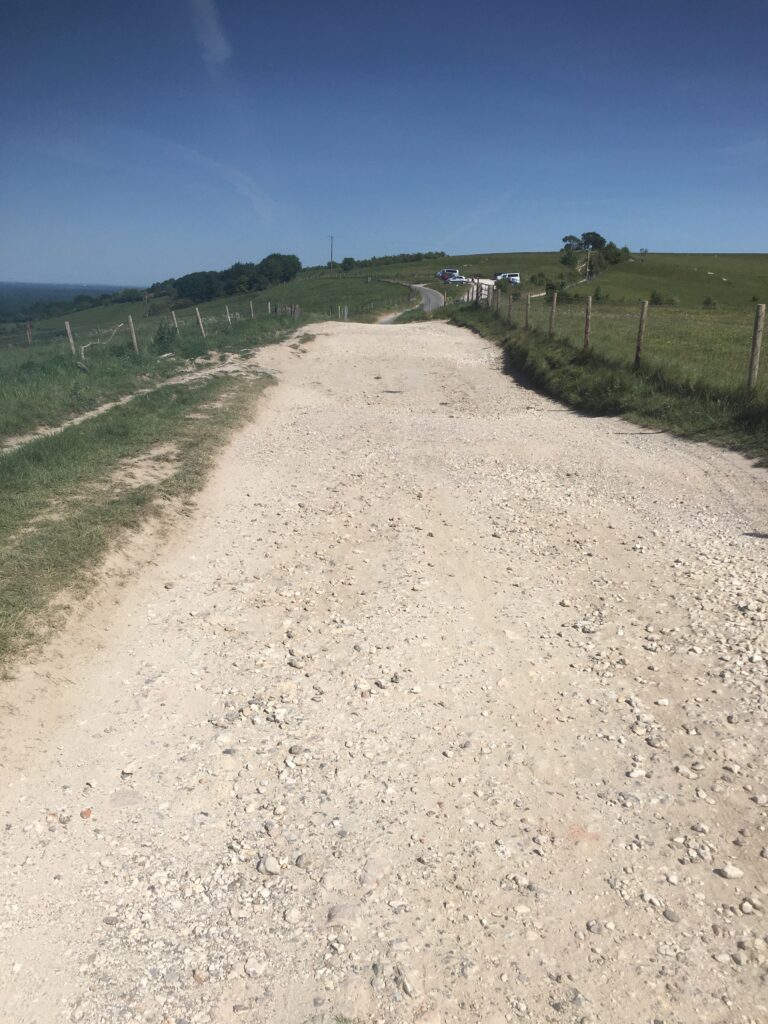
We drove carefully to the top, both parked our cars and set about setting up for the evening. GingerGeek had his Tak FSQ85 on his CEM 60 iOptron mount whilst I setup my usual array of large 4″ binoculars and at first the Mak 180 on the Paramount MyT. Later I would swap to the Esprit 120ED. To celebrate the outing, little geek had brought some beer 🙂
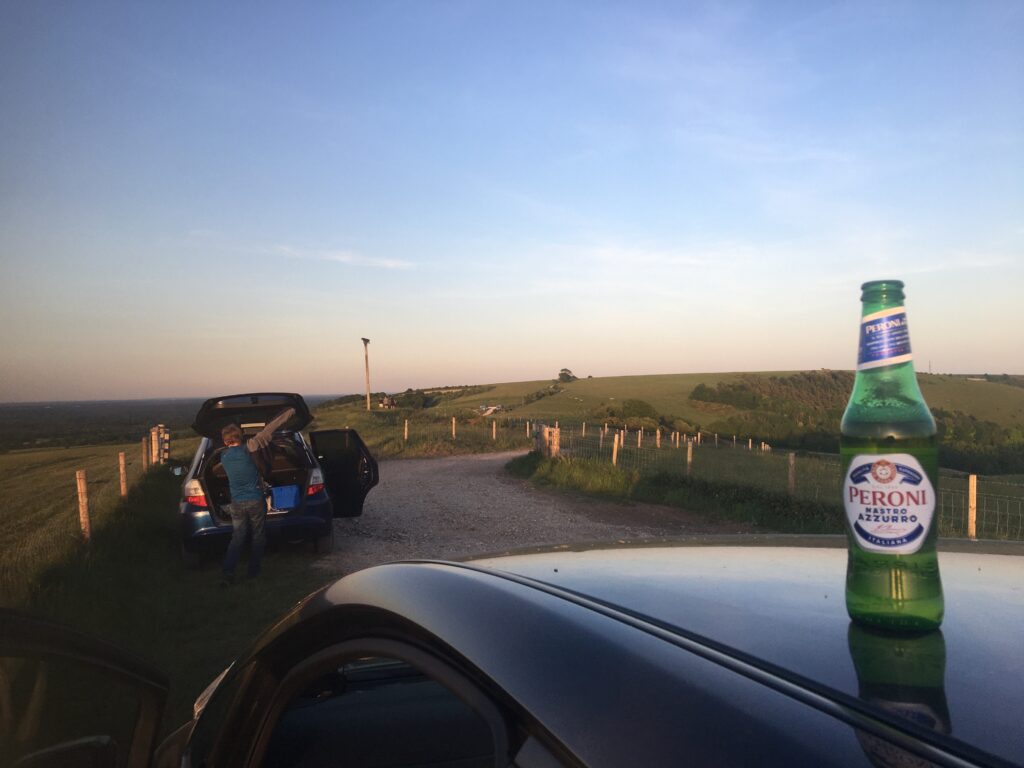
The Sun soon started to set, the day trippers hung around to watch the sunset and then were gone. I started looking at the Moon through the Altair Astro binoculars which is just a wonderful sight. A Camera cannot capture the experience of seeing the Moon with its Earthshine and in full as the FoV is 1 degree in the binoculars was a wonderful framing.
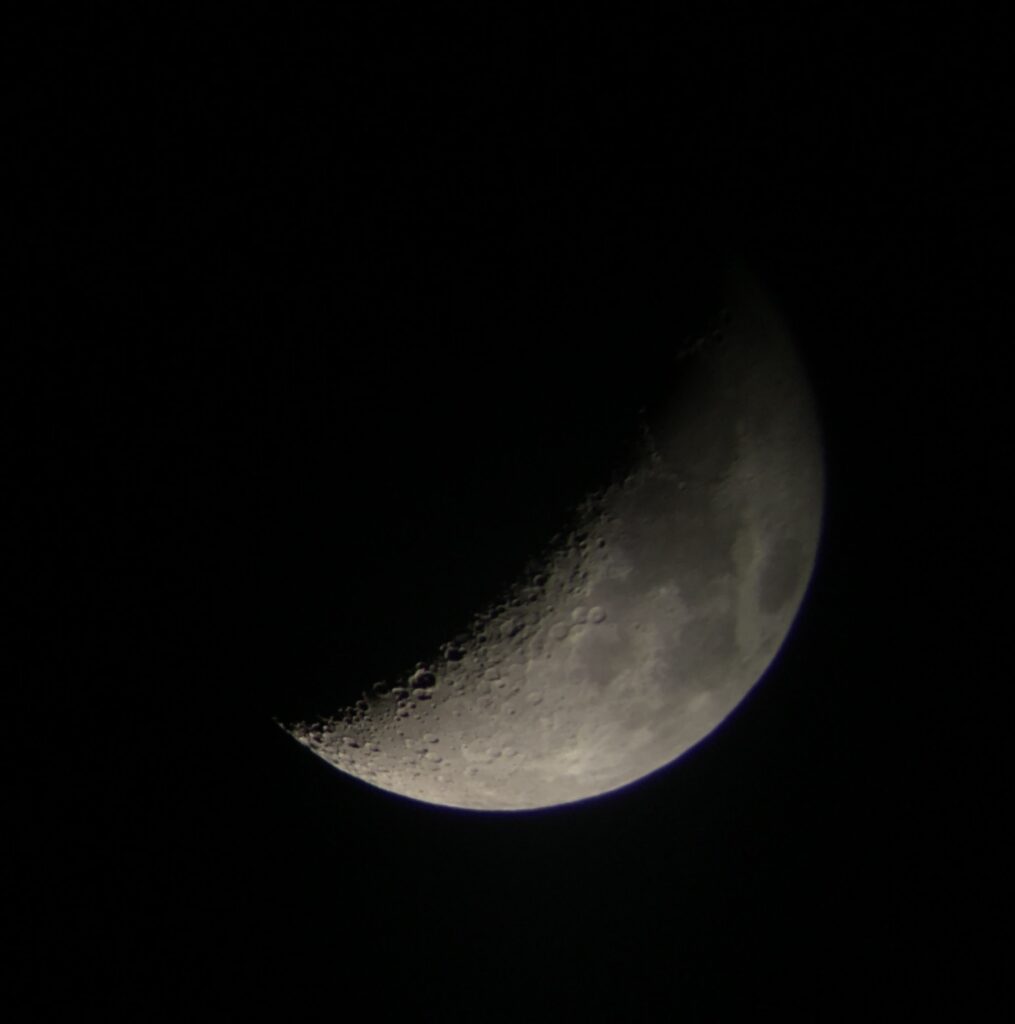
Next up was Venus before it sets, it is amazing just how bright it still is given its phase. I found in the binoculars eventually as it was hidden behind that cloud band in the distance. I then tried to get it in the Mak180, when a few new things happened. Firstly I could not slew to it as I had yet to polar align, so I had to place the scope in the right place. At the focal length of the Mak180, some 2.7m it is difficult to find something faint behind cloud just by pointing. I eventually gave up. I then noticed my laptop power had diminished by nearly 30% over about 20-25 minutes, this was due to Firecapture just hogging the USB bus capturing 100’s fps. So I was going to start the night short on juice! So I turned Firecapture off whilst I went to find Mercury in the binoculars.
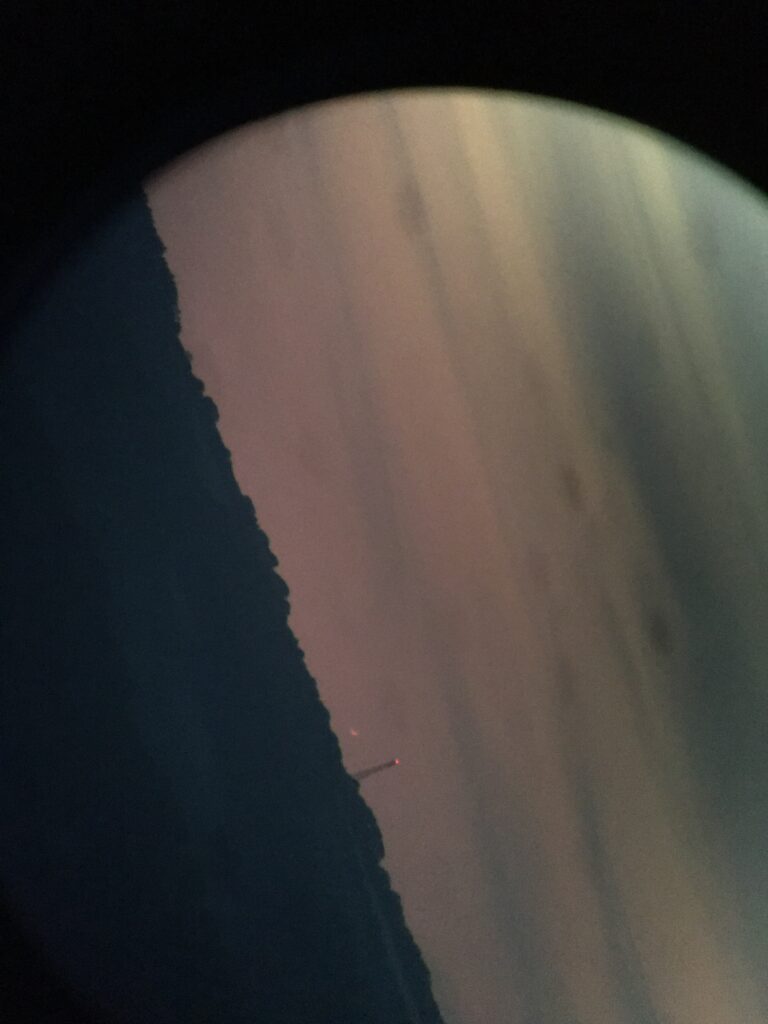
Mercury was a challenge, so much so I could not find it, I put that down to that not well placed cloud band. Meanwhile I pointed the Mak180 at the Moon to have a look, but by the time I had finished I the laptop was done to 53% !!!! Not so good.
So it was time to chat to GingerGeek (GG) before I put the Esprit 120 on the mount. GG was having lots of problems setting up. Firstly he had swapped the rings on the mount for the Tak that day and was struggling to balance the scope. It was so bad the scope kept dropping nose first then camera first and then either way depending on its orientation. Eventually, after much cursing, actually a lot of cursing, GG settled for the imbalance and continued to setup, unfortunately not before he knocked his beer over in his boot of the car ? fortunately I did not laugh too much ??
I went back to my setup, placed the Esprit on the mount and then set about getting focus with Ezcap, the software that comes with the ZWO camera. I do find the software very straight forwards and does what it says on the tin as it were. I then slewed to one of the open clusters I wanted to image and realised it resided in the North and that the twilight was still very much apparent so not suitable for imaging. Instead I settled for M51 high up as to the West was the Moon.
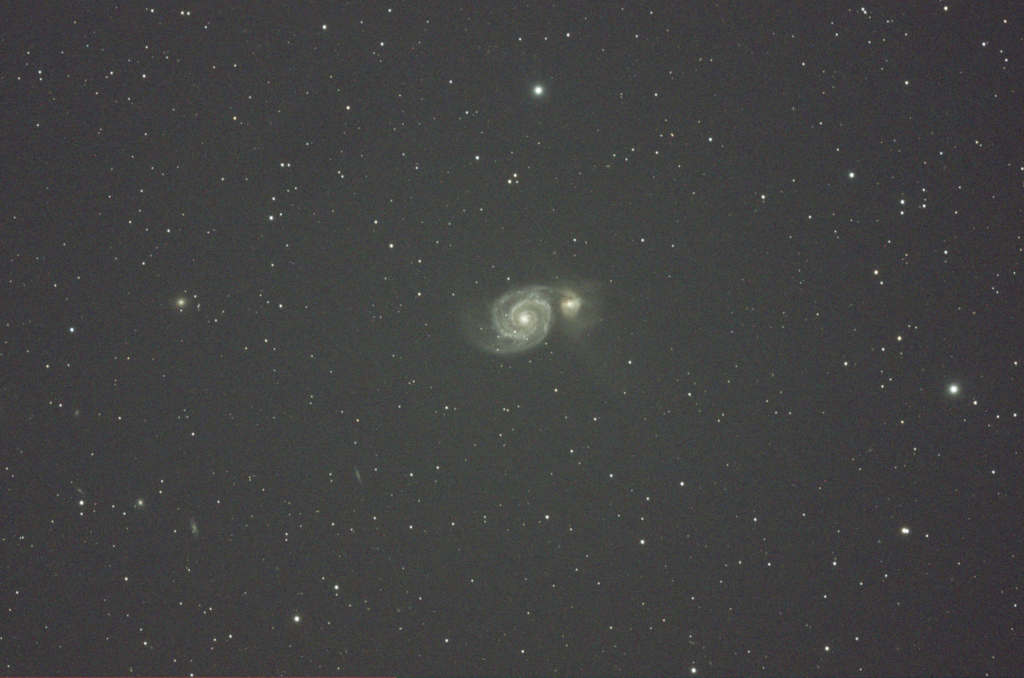
It is a lovely image at 5 minutes, I could see instantly at least 4 other galaxies and the colour of the main Messier galaxy was very pleasing. I look forward to processing the resulting subs. I set the timer for 1 hour (12x300secs) and went back off for veggie soup, cheese rolls, brownies and coffee that GG had kindly brought along.
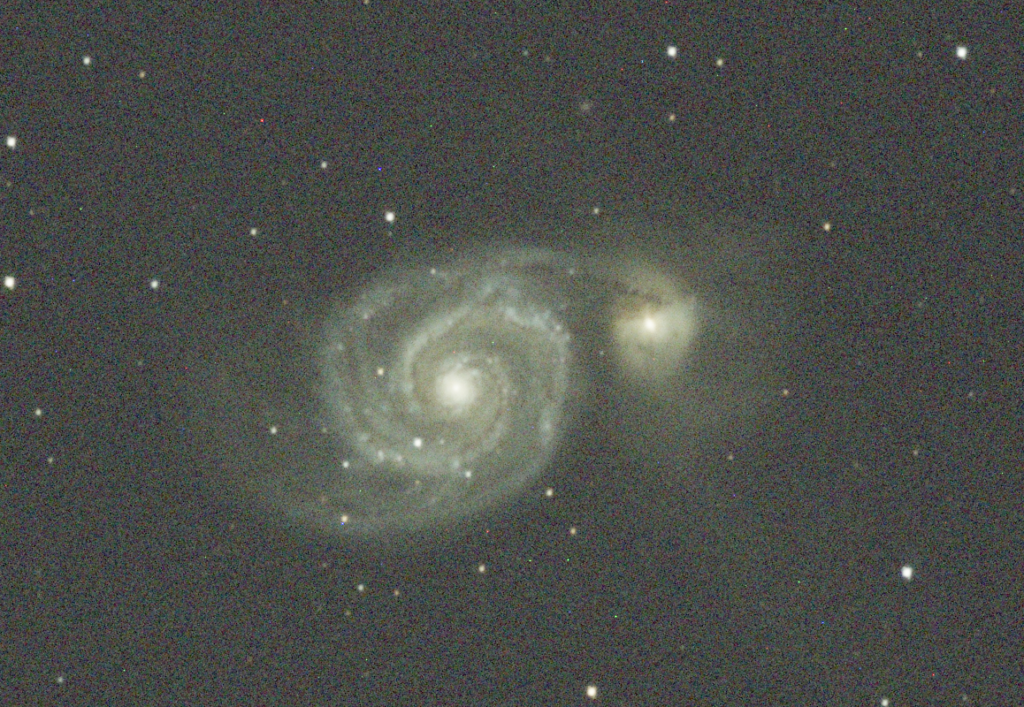
GG at this point was having issues focusing for his 5 minutes shot of the Pelican in Ha, he had made some other changes to the software before heading up the hill too which was confounding him. After some more time he finally had focus and started to image. However whilst a few of the images were okay, the resulting imbalance and gusts of wind made it difficult to keep pin sharp images. It should also be notes at this point that GG and I were running from the same car battery, although GG was only running the camera from it, the mount was running from his Lithium battery.
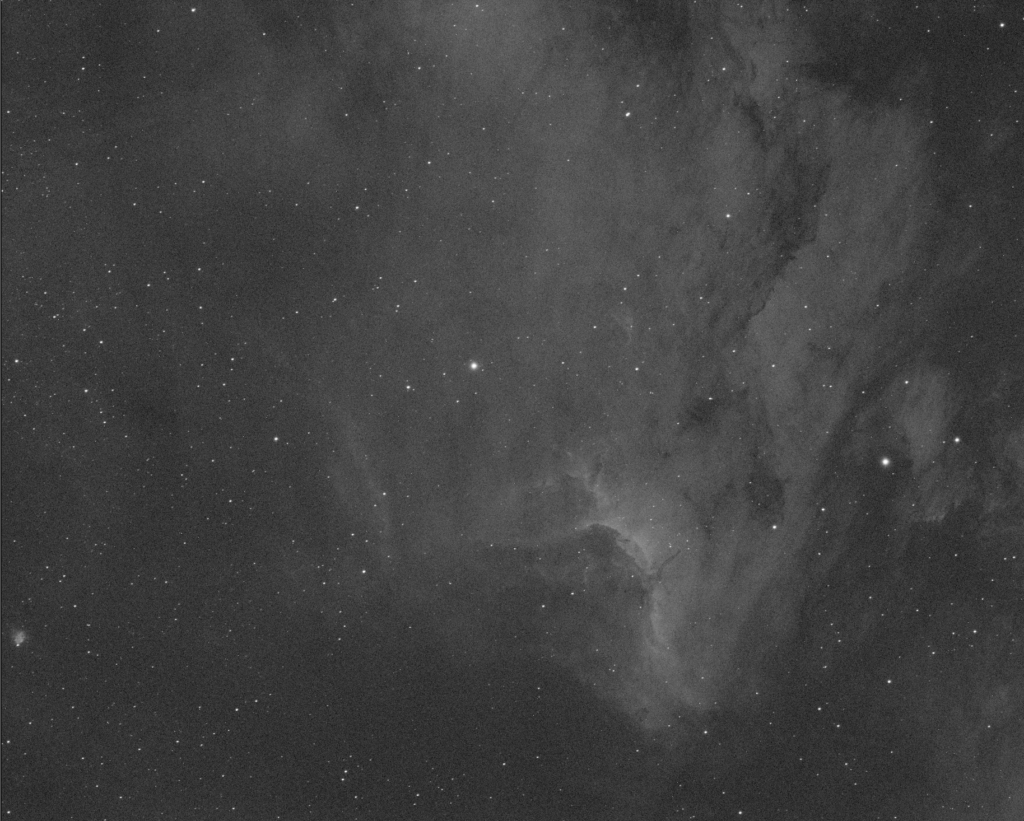
At just before 1am the inverter connected to the spare car battery turned off due to loading and power. Everything stopped for both of us ??? however GGs mount kept running due to the Lithium battery. I closed down my setup and allowed GG to reset his camera and reconnect, he then went on to start imaging, however the resulting image had moved significantly and GG decided to give up. So we spend the next 40 minutes packing up. Whilst this was going on we looked at Saturn and Jupiter through the binoculars which was a wonderful sight. Now for the 50 minute drive home to unload the car just before dawn, although by 2am it was clearly getting lighter.
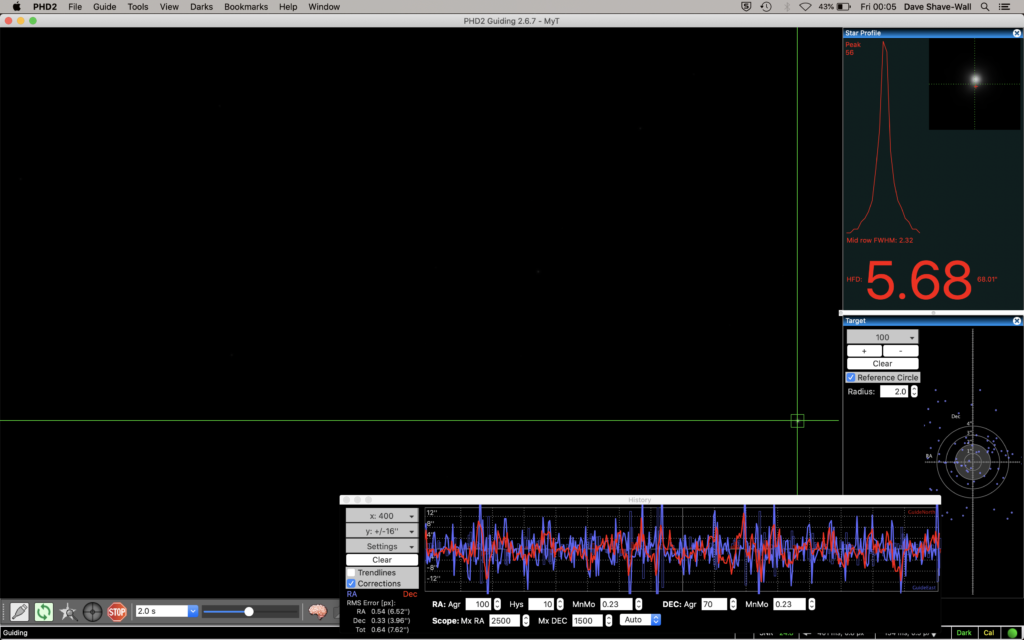
The SQM for the site last night was 20.91 although the Moon was very bright. The site is also very dusty, and my laptop was covered in the morning. Another incident was that I inadvertently unscrewed the cover from the guider as I transferred from one scope to another and the glass cover fell out, I now have dust and dirt on the sensor to clean. It is not a great design by ZWO for the ASI290MC as it really needs a locking grub screw to top that happening or a reverse thread.
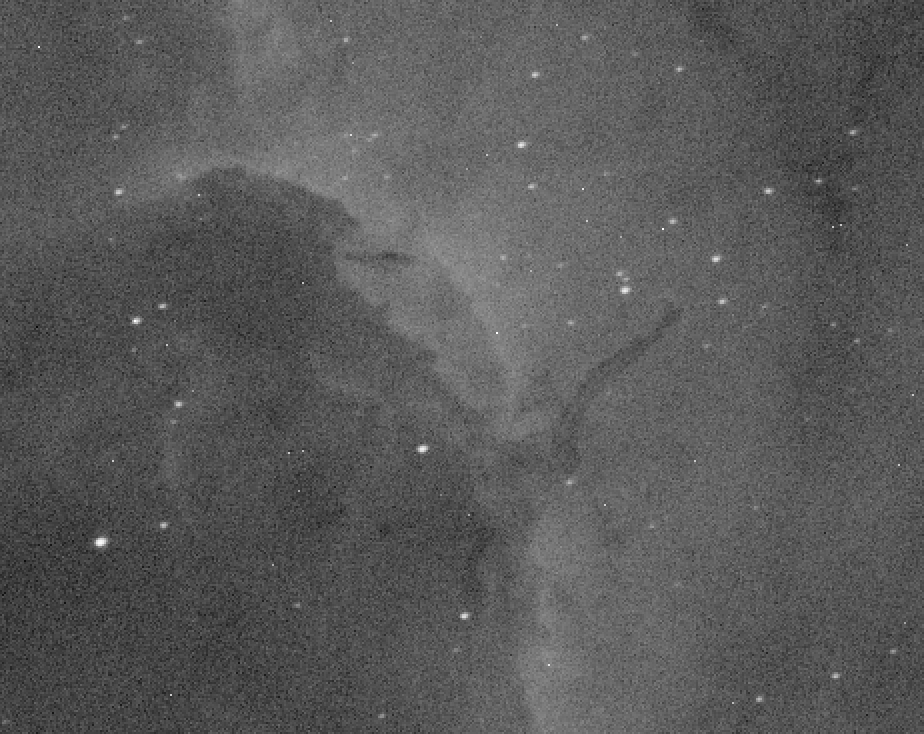
GGs image has set us on a little project to image the HH 555 bipolar jet at the end of the major turn of gas in the Pelican Nebula. We will attempt over the next few nights to get an image from both the Esprit 120 ED Pro from the IMT3 dome in Ha and also from the OS 12″ to see what it looks like compared to the Tak FSQ85. Another good social distancing astronomy session ? goodnight.

19:00 – 05:00

So back off to Combe Gibbet again tonight for hopefully a full night until dawn and with a coat. I met with my friend Alan for once again some social distancing astronomy. Again Alan had a much better 4×4 car to get up to the gibbet than my little electric Nissan Leaf, however once again I managed to make it there.

After setting up, it quickly became apparent that I forgot the guide camera as it was still attached to the Mak180 that I thought I would leave at home tonight ?
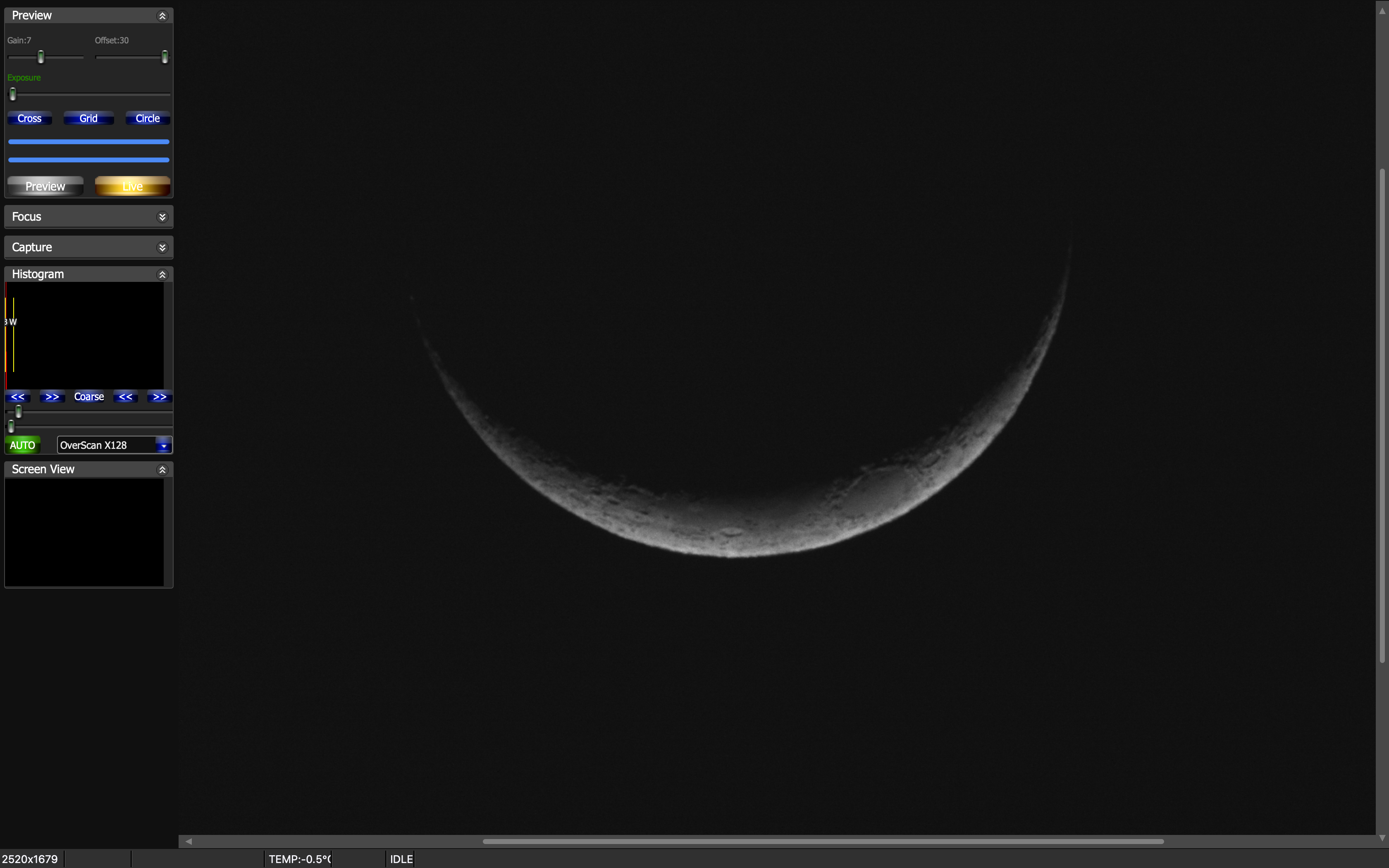
So despite the slight setback I polar aligned on the uneven ground and managed to get the scope pointing in the right direction. It took me a while to work out why it was not pointing at the objects when slewing with a perfect alignment, then I realised I had the location set incorrectly. A quick look at my GPS on my phone and I input the coordinates into The SkyX and the target was nearly spot on. I adjusted, performed a sync and then was able to slew continuously thought the night with the object in the FoV.
As I was challenged with no guider I could only take 2 minute images and if in the West low down then 1min. So I stetted for those 2 exposures along with 30 seconds for one particular object.
Below are the lost of targets I went after and imaged. I tried to get 15-20 minutes in total for each. We had some early night high cloud, the wind had again dyed down after sunset and although cold, we were both wrapped up warm, although later in the night Alan became cold so wrapped himself up in the dog blanket from the car ?
First up was M44 Beehive Open Cluster, which filled the view nicely so I took 20 x 60 seconds, careful not to saturate the stars. The QHY168C camera was set to Gain 7 and Offset 30 with a temperature of -20℃.
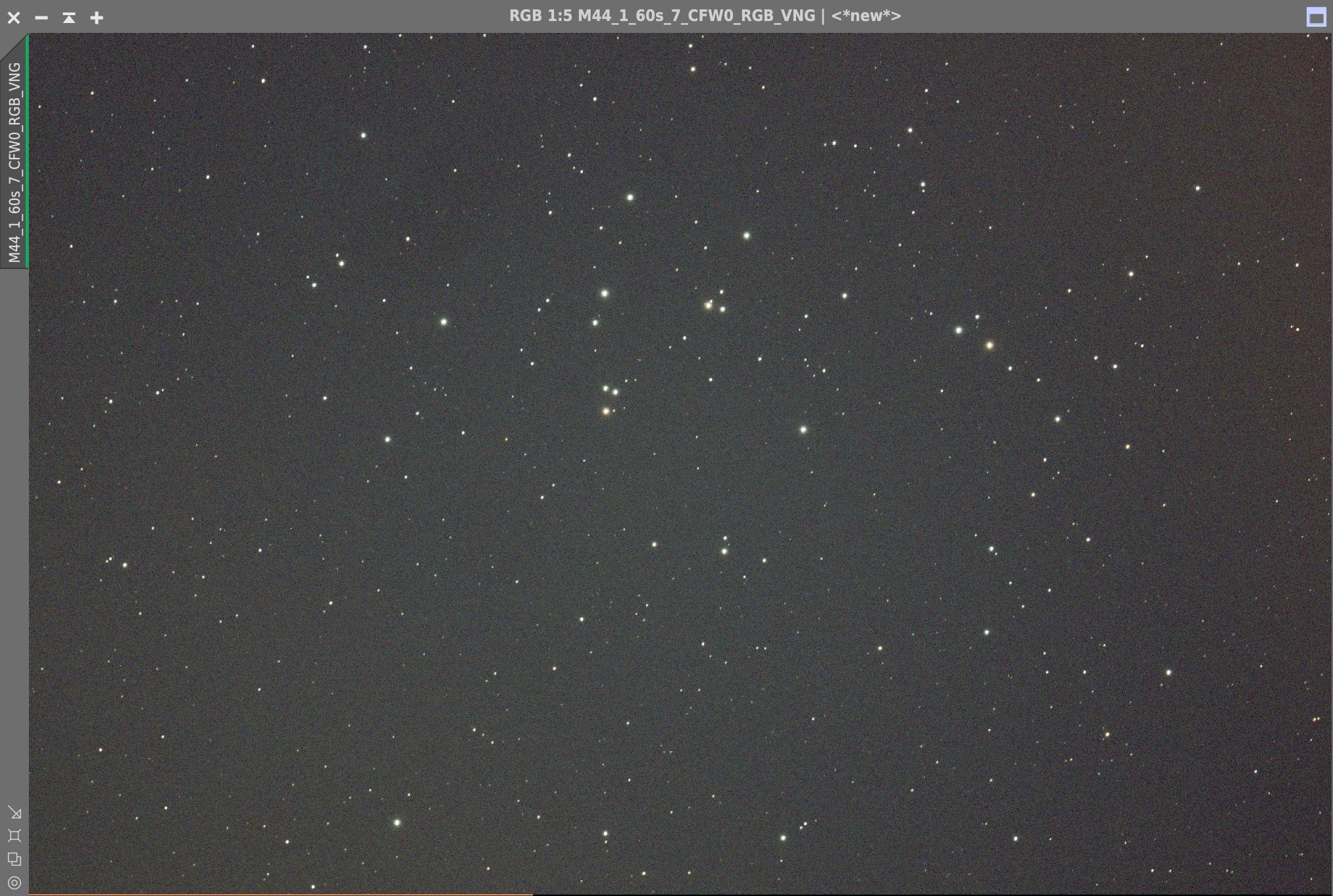
I then tried SH2-129 emission nebula but no luck, it was not registering at all at such short an exposure. I had a similar issue with SH2-155 Cave nebula. Both of these I will try again when I have my guider.
I then slewed to NGC 6888 Crescent nebula and took 20 subs of 120 seconds.
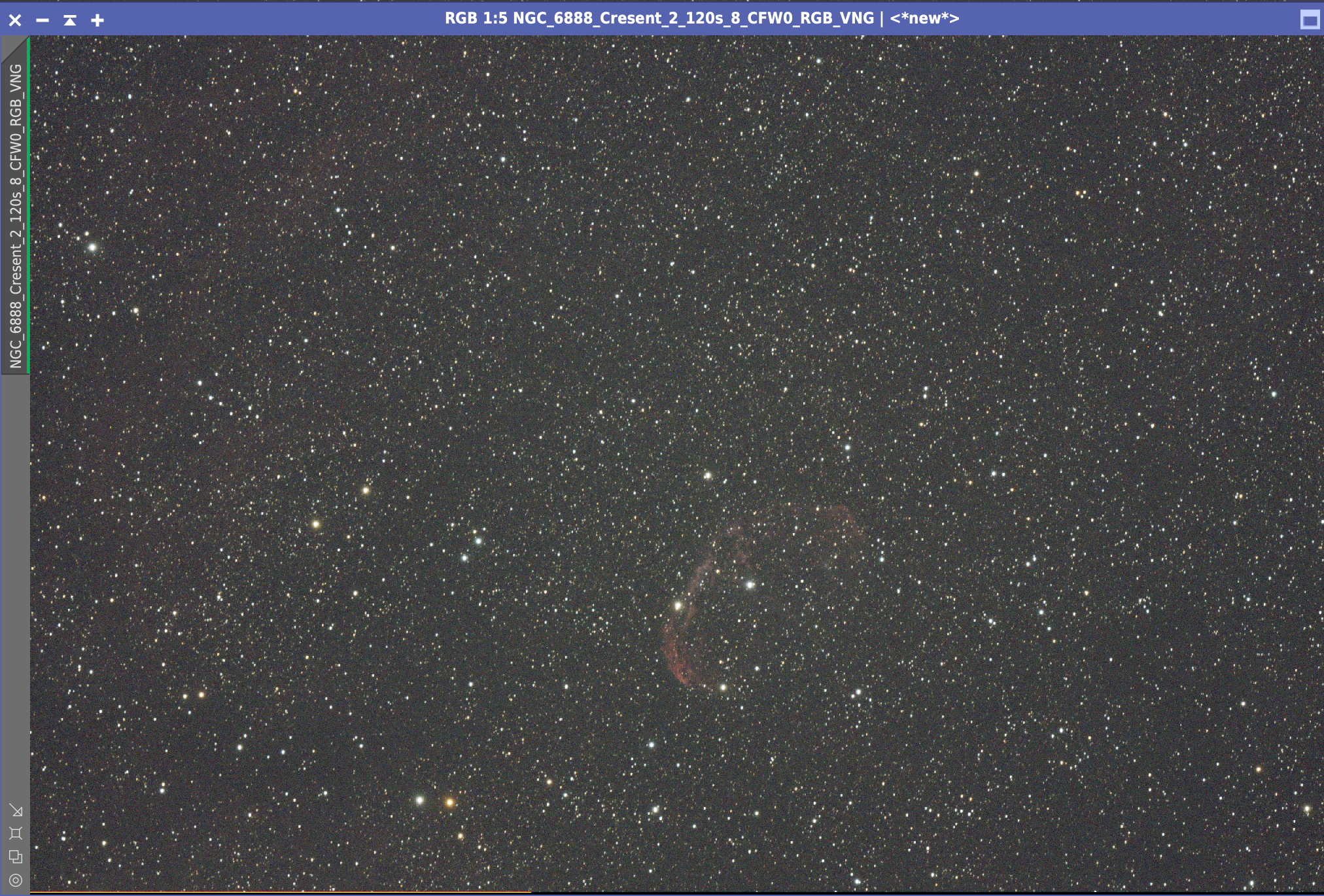
Next tried to image Trio in Leo M65, M66 and the NGC but I realised I had already imaged, although not processed and the image trailed at 1 minute due to its westerly location. So instead I headed for NGC 7243, a lovely Open Cluster in Lacerta and part of the Herschel 400 at 60 second exposure.
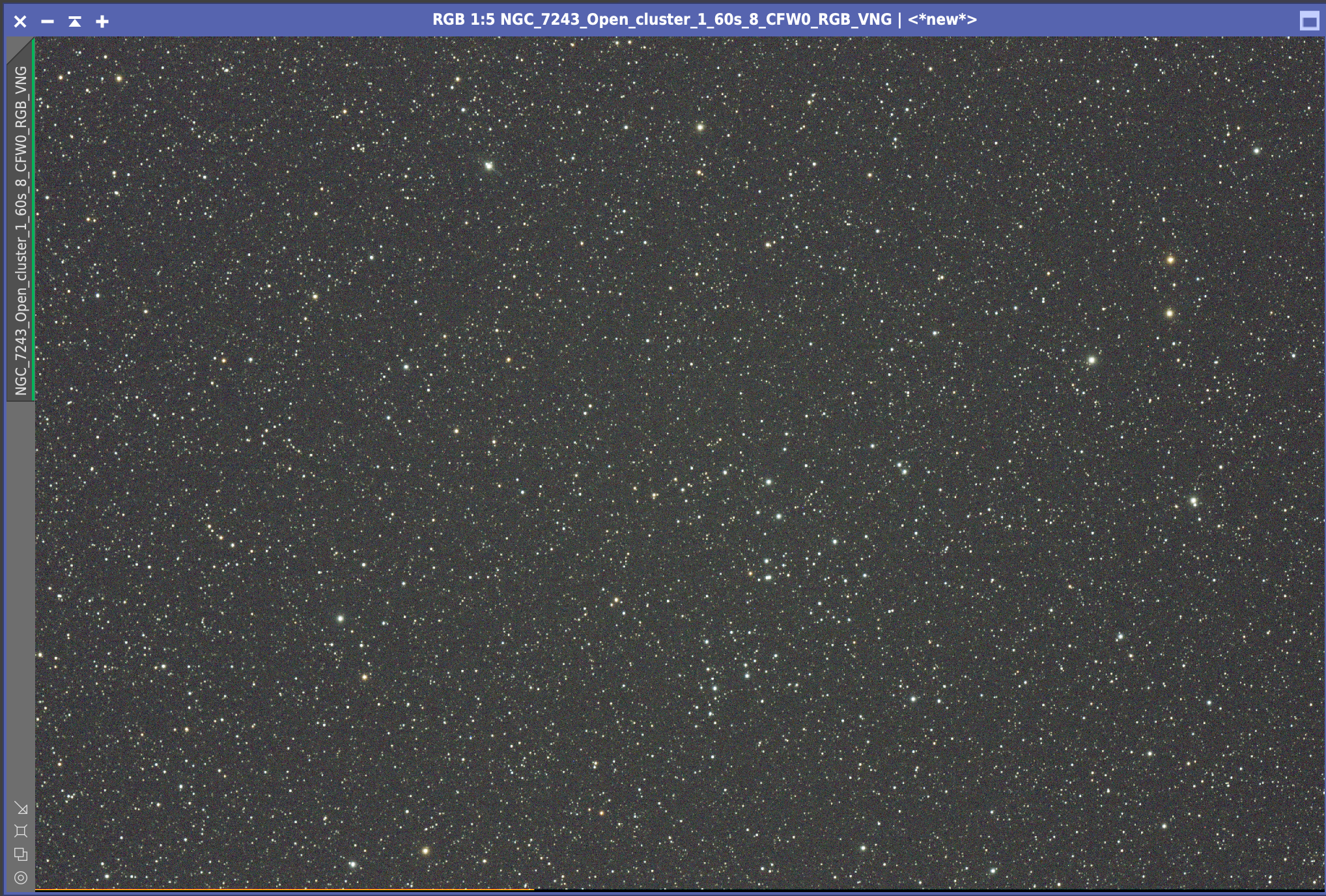
Next I looked at the double cluster in Perseus and decided to quickly take a few images with the Esprit 120 ED even though it was not on my original target list. Due to its bright stars I took 40 x 30 seconds.
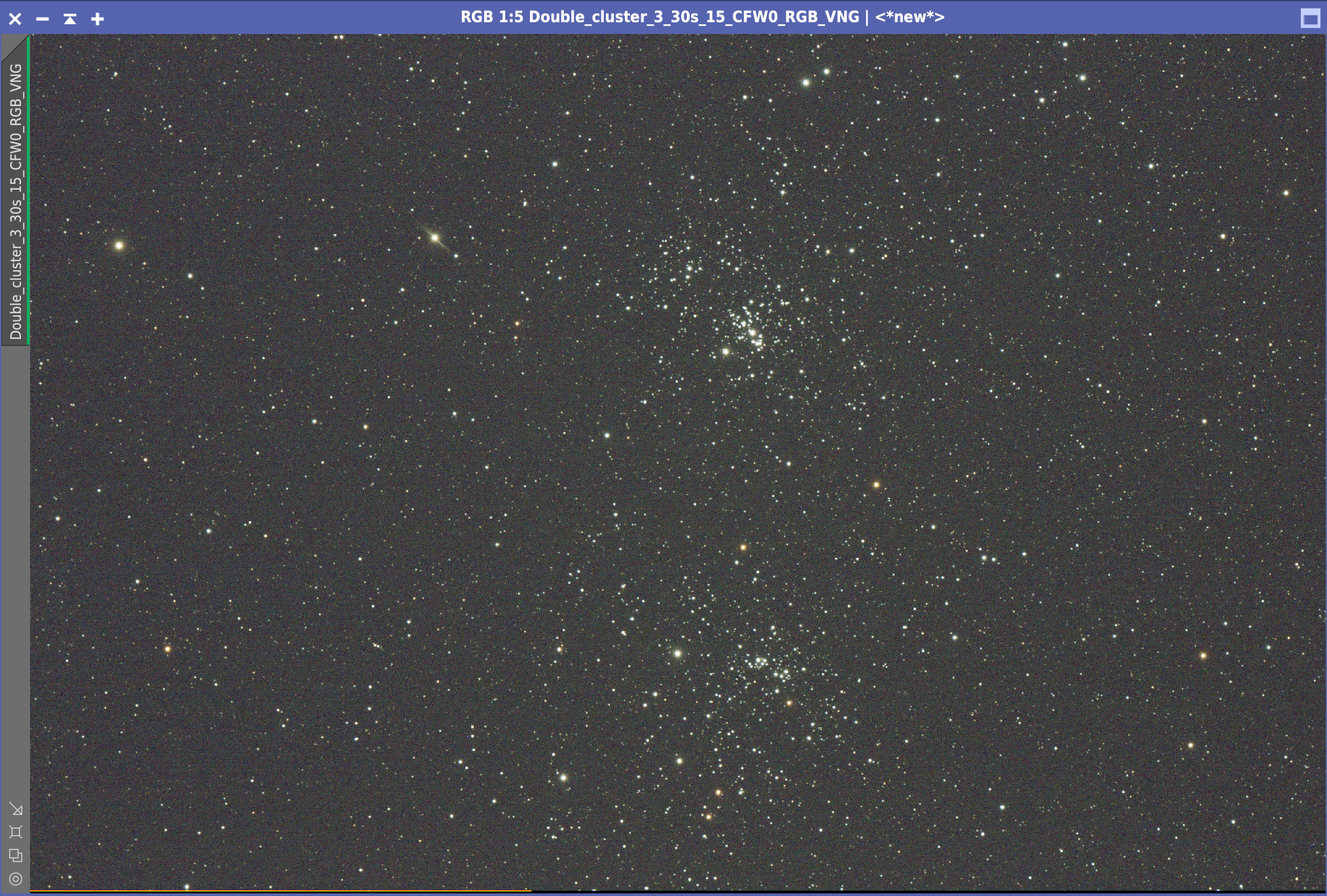
Now it was time to grab an image of Comet c/2017 T2 PANSTARRS which was located near a galaxy called the Coddington Nebula. I purposely got the comet at the very edge of the frame to get the galaxy in, although I noticed the tail was pointing in the opposite direction than shown on Sky Safari.
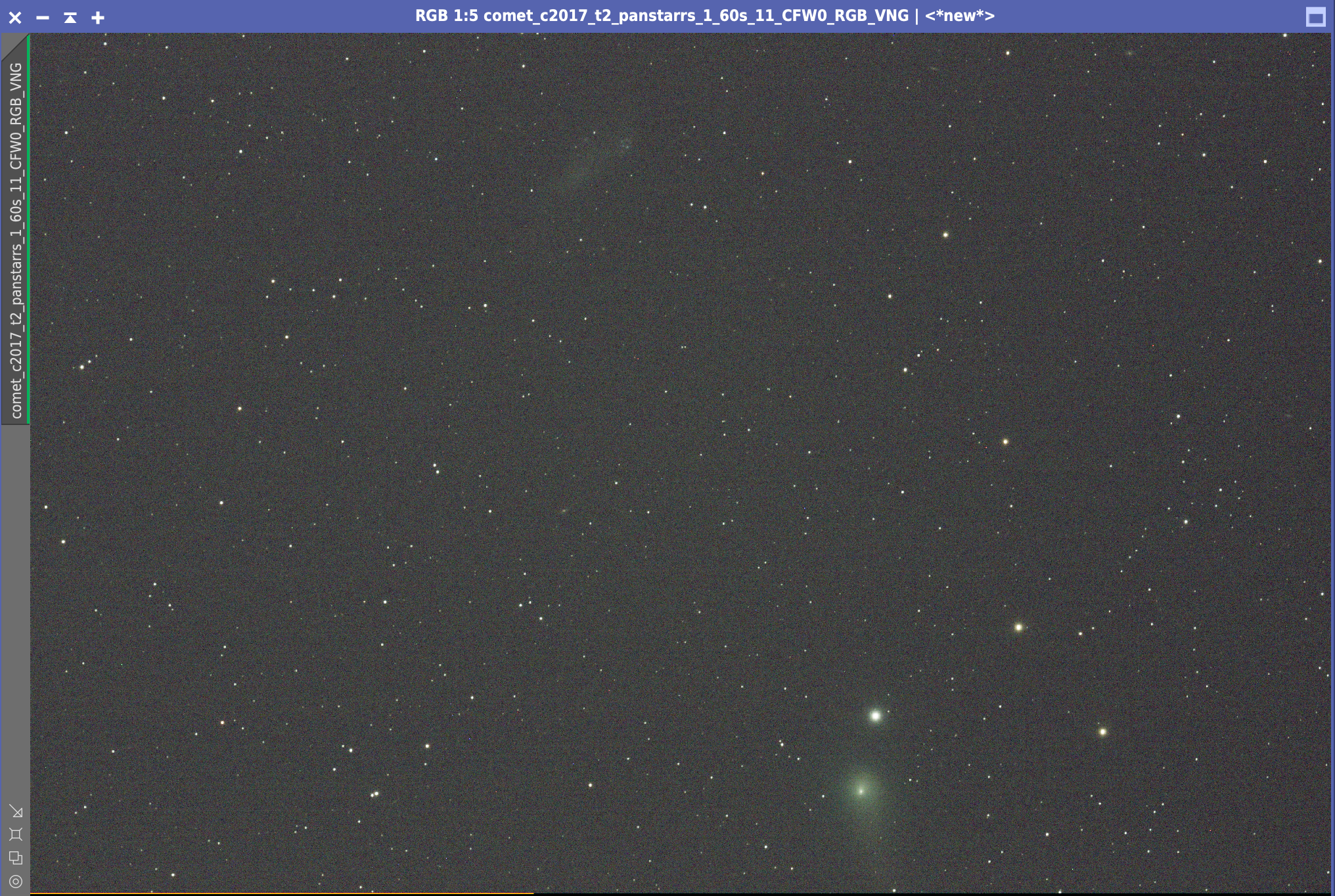
The night wass really dark, even though it is not true astronomical darkness, the location really helps. The image quality is also much better. I slewed to NGC 7000 the North American nebula that Alan was also imaging. Again 60 seconds was probably not long enough so I need to come back to this object when I get my guide camera fitted.
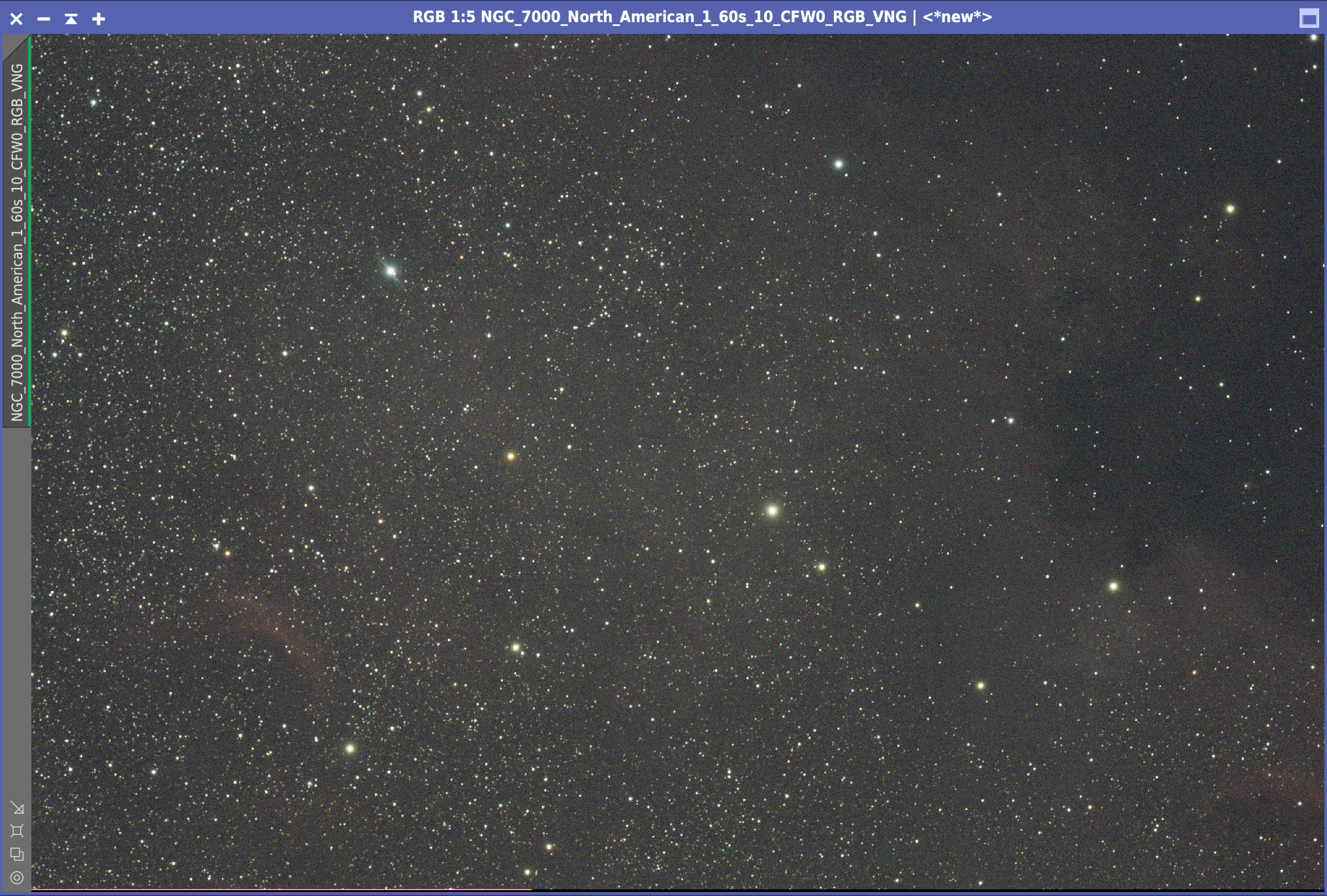
Finally just as dawn was approaching and the light was clearly increasing, I took a few images of Comet C/2020 F8 SWAN to see if I could see it. Was was apparent was it was super faint even at 60 seconds !
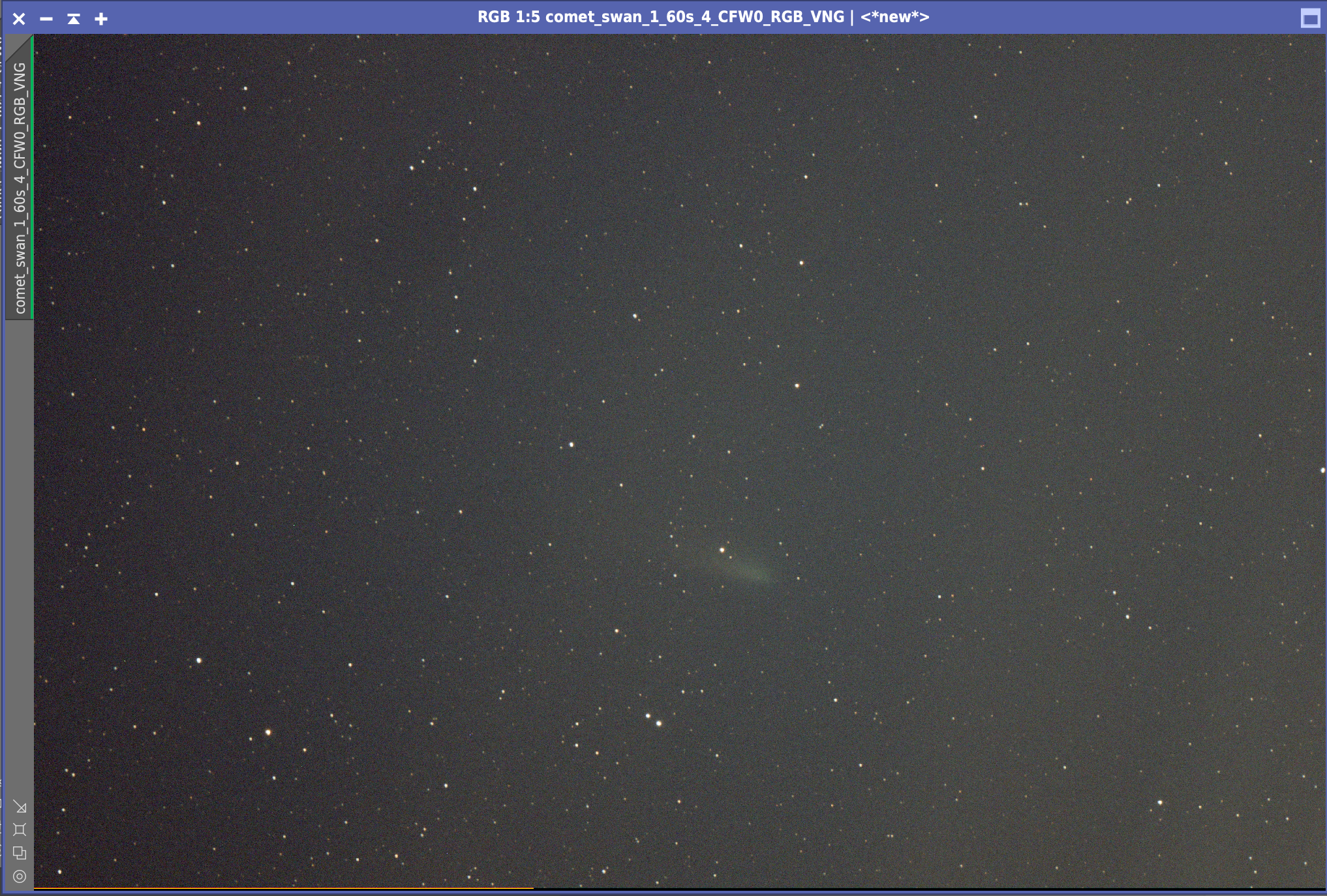
So as dawn approached, Alan and I took flats, darks and flat darks.
During the night we viewed through the 4″ binoculars the Moon, Venus, Mercury, Double cluster, M39 Open cluster, M57 Ring Nebula, Alberio, M56 Globular Cluster, Saturn and Jupiter. Unfortunately I packed up the binoculars before I remembered Mars was up ! So packed up the car, ands drove very tired 50 minutes home.
19:00 – 01:12

Tonight I traveled 50mins and 26 miles to Combe Gibbet, a high point for us in the South of England called the North Downs in Berkshire, which at 940ft above sea level places it in the wind, so it is cold but affords a distance from many towns, so it is dark. The is indeed a Gibbet at the top if one should want to take a hanged man or woman and display them for all the surrounding villages to see ? very barbaric, but part of our history.
The car was packed with various astronomy gear, the Mak180 for Lunar and planets.
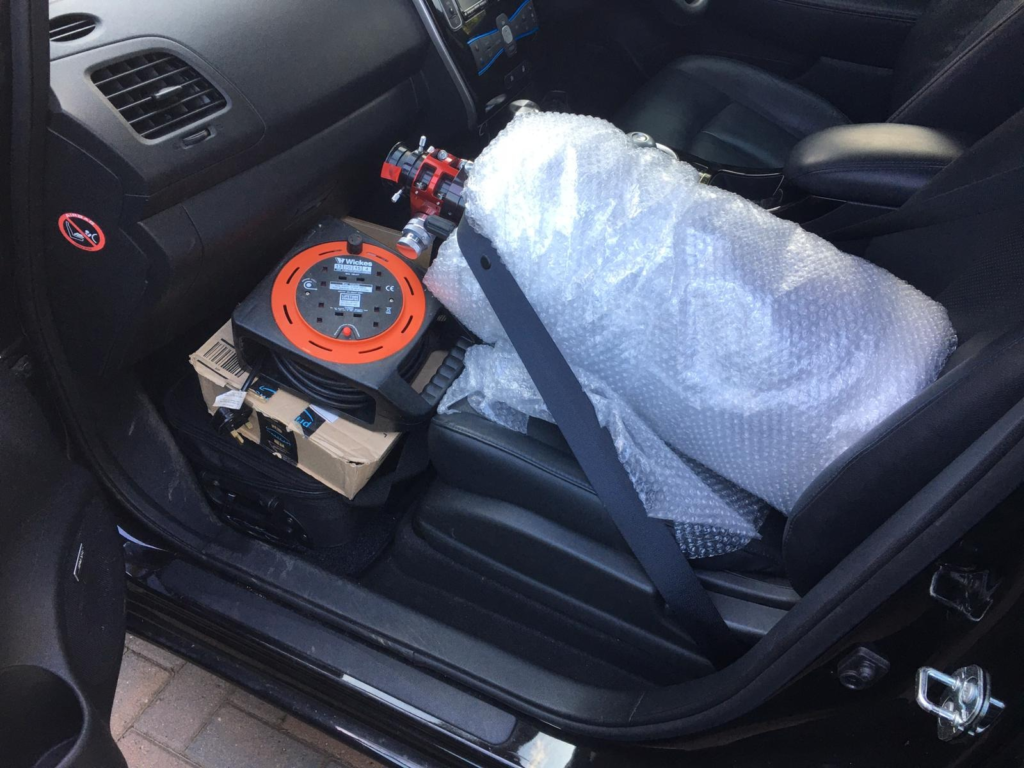
The Esprit 120 ED Pro.
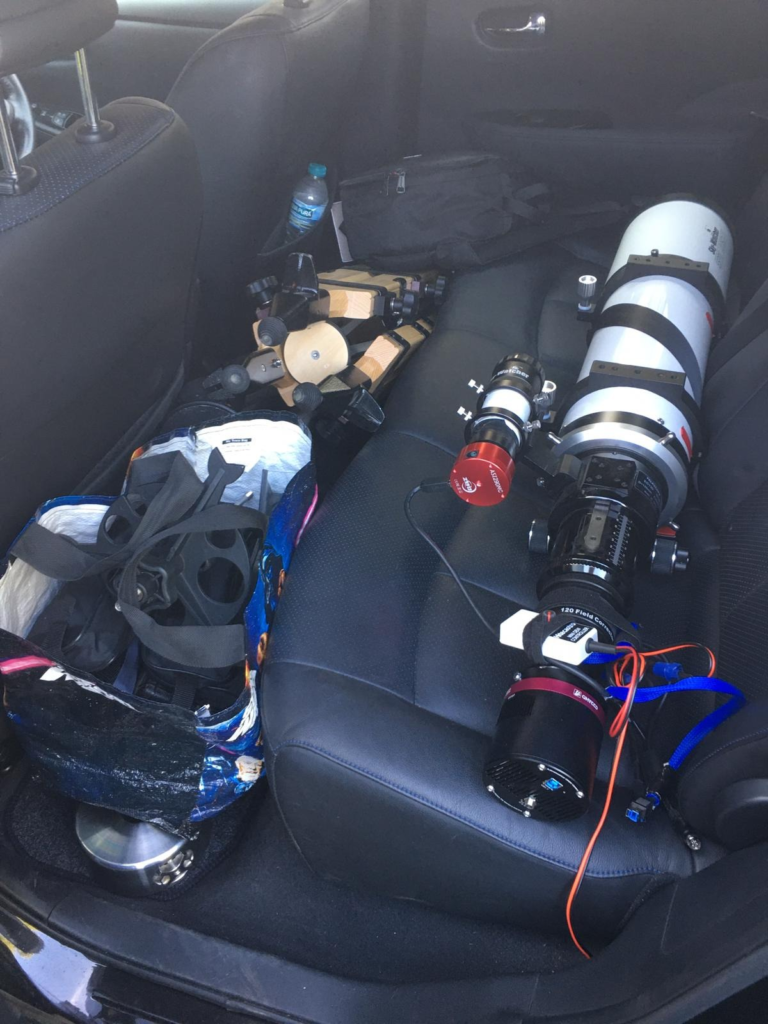
And of course the Altair Astro 4″ binoculars with my Paramount MyT mount.
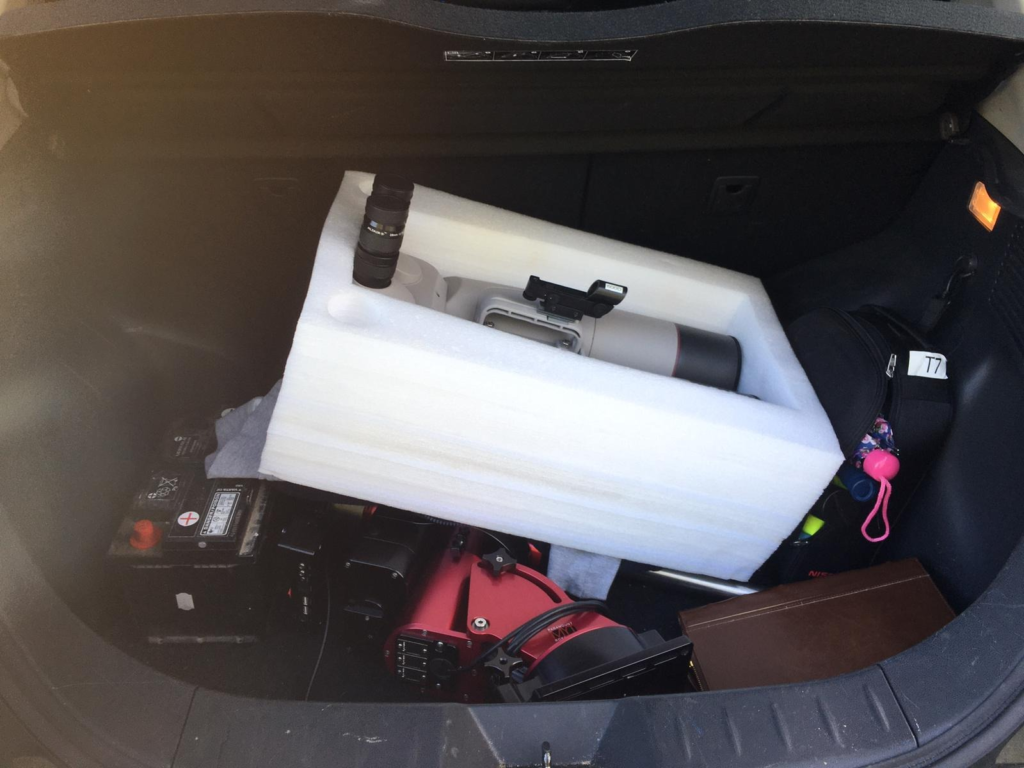
I met a a social distance my friend Lawrence who was in a much better car than myself more suitable for the off-road terrain of getting to and just past the gibbet. Lawrence brought his trusty binoculars and his deck chair. Meanwhile I setup the 4″ Altair binoculars, the Mak180 OTA on the Paramount MyT and my Canon 6D on a tripod.

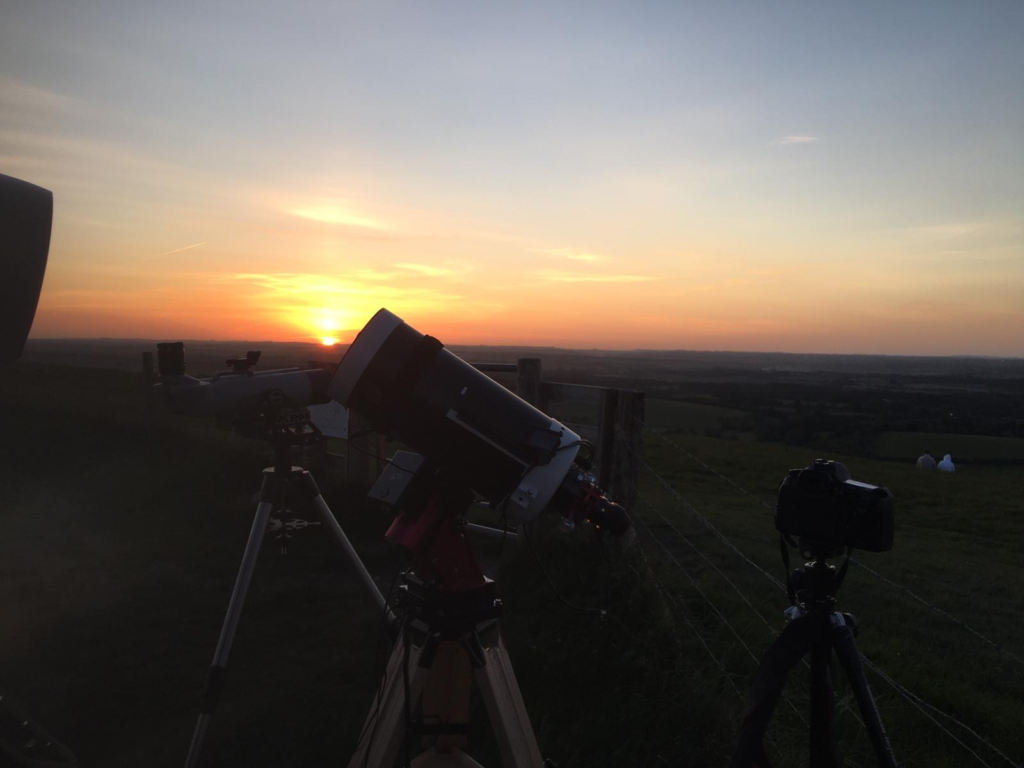
As the Sun set from this location we spied Venus first and took a look through the binos.

I captured some frames in the Mak180 with the ZWO 294MC camera. We then moved to the sliver of a Moon 2.8% illuminated and 1.6 days old. I placed the Mak180 on this for a few frames also. Lastly we moved the binos to Mercury, which is unbelievably small. Very faint in the twilight sky and surprisingly faint in the binos. I once again slewed the Mak180 and captured some 4GB files.

We then went a hunting for comet C/2020 F8 SWAN but it did not appear in the star field where it should be despite being able to see Mag 8.9 star. The comet was purportedly magnitude 5.8 but this was not the case. I checked my ephemeris on both SkySafari and The SkyX and I wass definetly in the right part of the sky and confirmed the star paterns from my star hoping, but alas no comet.

So although the wind was now dying down both Lawrence and I were cold so at just gone midnight we packed up and set off home. I must remover by coat tomorrow!
Addendum, I had read an article the following day that the comet may have broken up but I cannot yet confirm this.
22:20 – 01:32
I have placed new filter, Baader IR-Pass 685nm from Mark Radice on the ZWO tonight and aimed to go after Venus on the Mak180 and capture another phase of the planet. I recorded several sets of data although noticed the filter does produce a somewhat pinky image.
Viewing time period – 18:42 – 04:21

Hoping to perform a TPoint run tonight, along with gathering some frames on M53 through all 3 scopes (along with Darks and Flats for the Esprit), as we only got some frames through the Tak yesterday. I also hope to try out the Mak 180 Sky-Watcher on the portable mount at the same time from the garden. I will also join the BAS Zoom meeting with all the rest of the gang on as we go through the night, which we have been doing for the past 11 days due to this unprecedented lockdown of society globally due to the Coronavirus, Covid-19 SARS-Coronavirus2 outbreak.
So progressed well tonight, spent the whole night on Zoom with the other astronomers so good company. Managed to image the following Lunar 100 objects, L13 – L30 – L42 – L53 – L59 – L65 – L68 as well as Venus which was at a phase of 44.75%.
@23:53 finished imaging with the Mak 180
Unfortunately M35 has now set and Bob is still imaging the Moon so I will have to grab M35 tomorrow early if it is clear……
I saw big problems with calibration with PHD2 which need to be looked at on the Tak.
@4:21am went to bed whilst the IMT3 was taking Darks
Things to still resolve
Viewing time period – 18:23 – 04:08
@18:28 took flats for last night

@18:47 finished 20x -25℃ Flats 0.06s now taking Darks, will do more flats later when the cooler can get to -35℃ which right now it can’t as ambient outside temp is 7℃ so I can only get to -33℃ at 100%
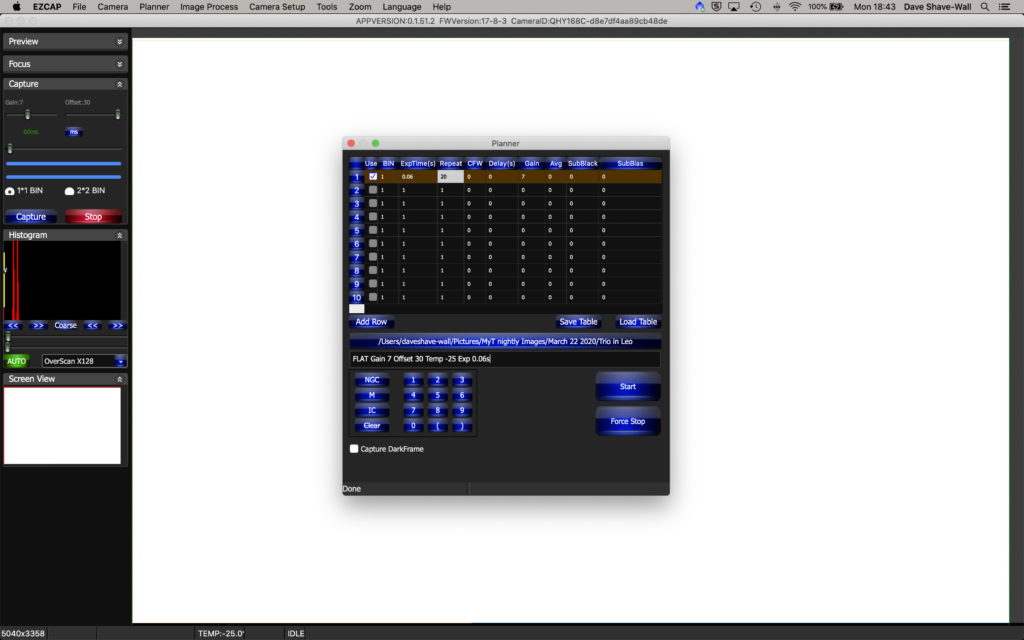
@21:47 just finished Flats at -35℃
@22:49 started imaging Whale and Hockey Stick for Herschel 400
@00:47 I have 2 hours worth of data, performed meridian flip and continued to image the Whale for another 2 hours whilst I went to bed
@4:08 finished imaging and packed up
Viewing time period – 19:33 – 05:12
Once again unto the darkness ……….
I started setting up before dusk and the scope was ready for my on the patio once darkness had fallen. The first thing to do was use Polemaster to get the polar alignment roughly done.
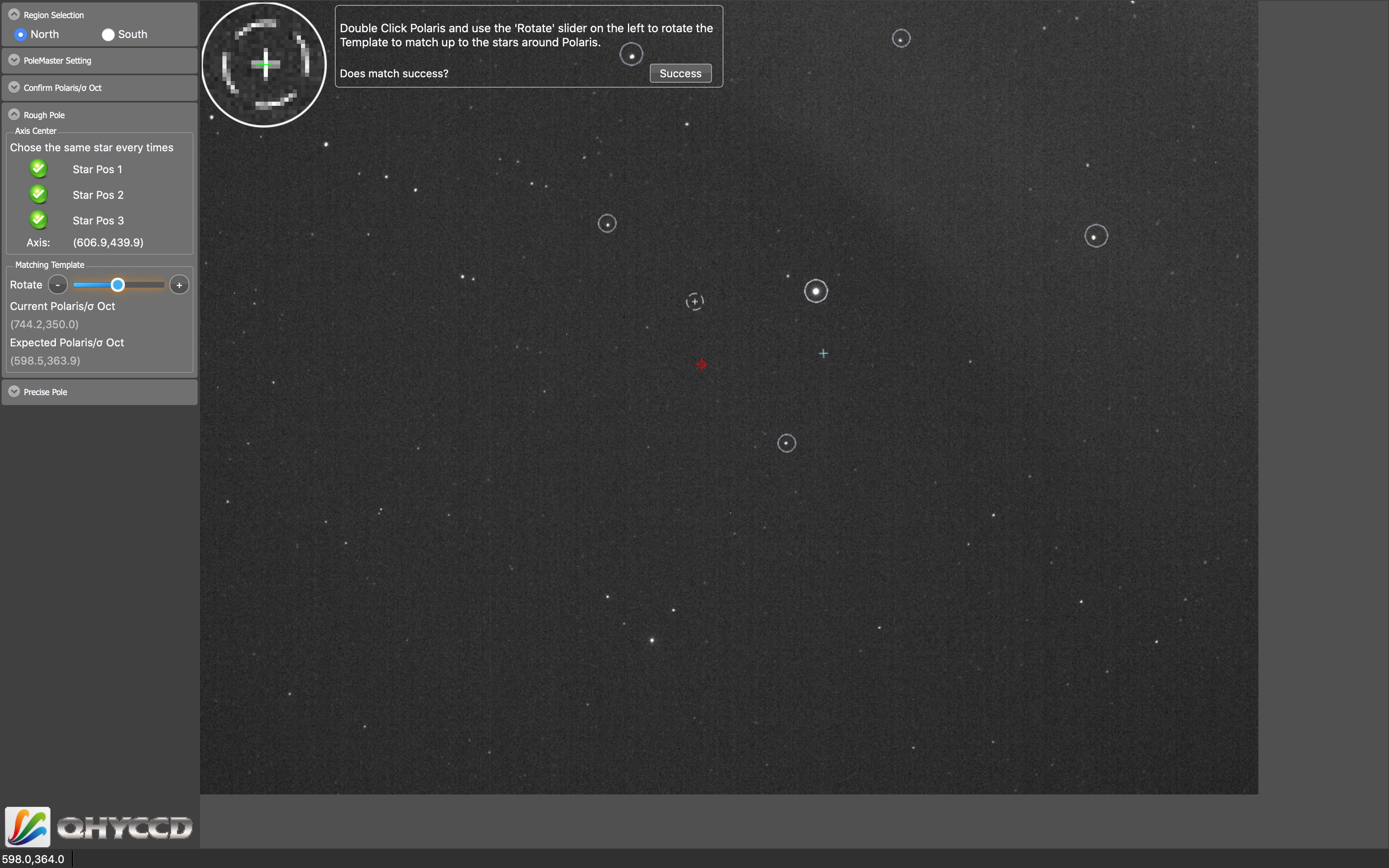
@19:43 finished Polar alignment and started PHD2 drift alignement
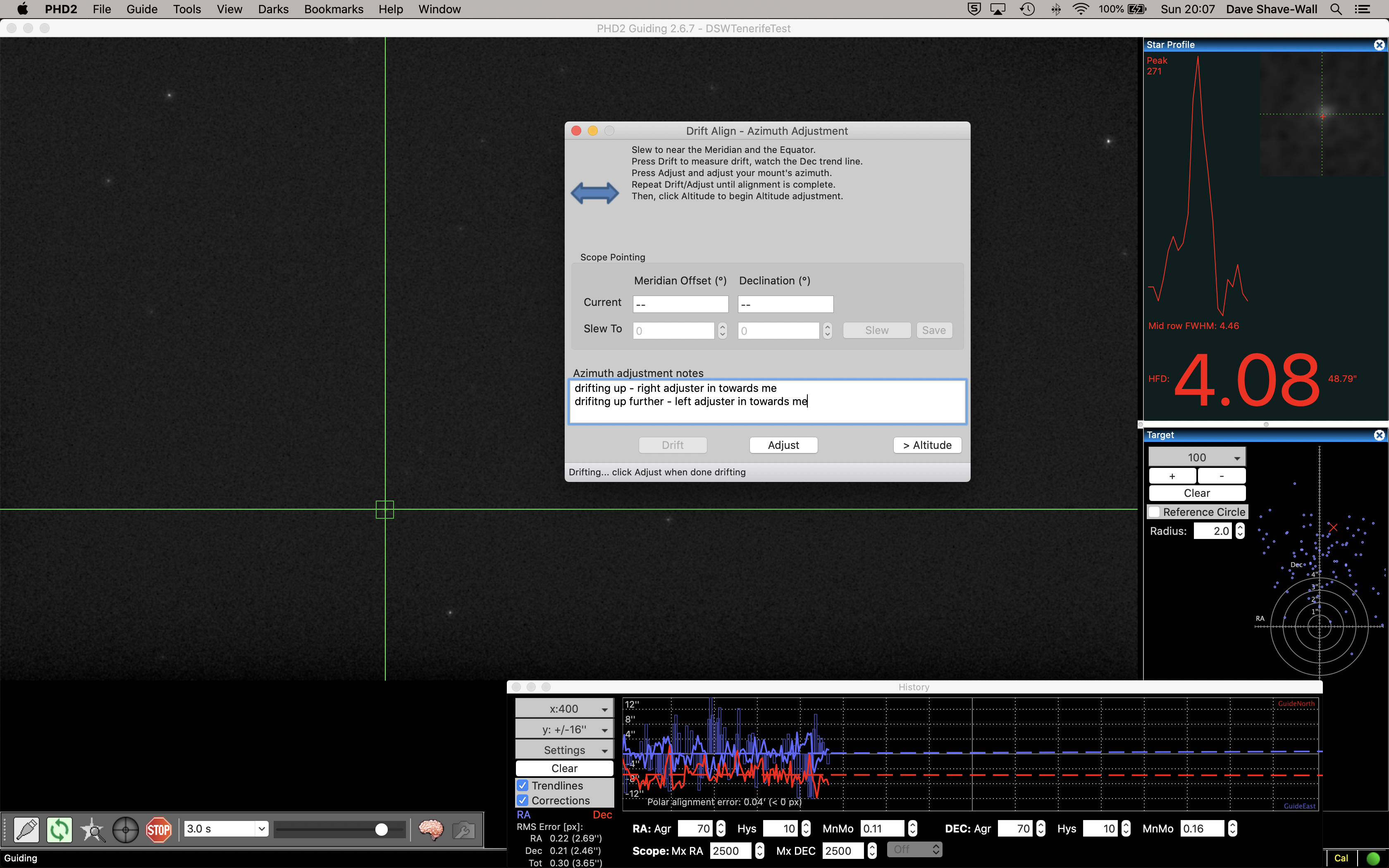
@20:07 finished drift aligning in Dec
@20:23 after doing the washing up I am now back to do the drift alignment of the altitude
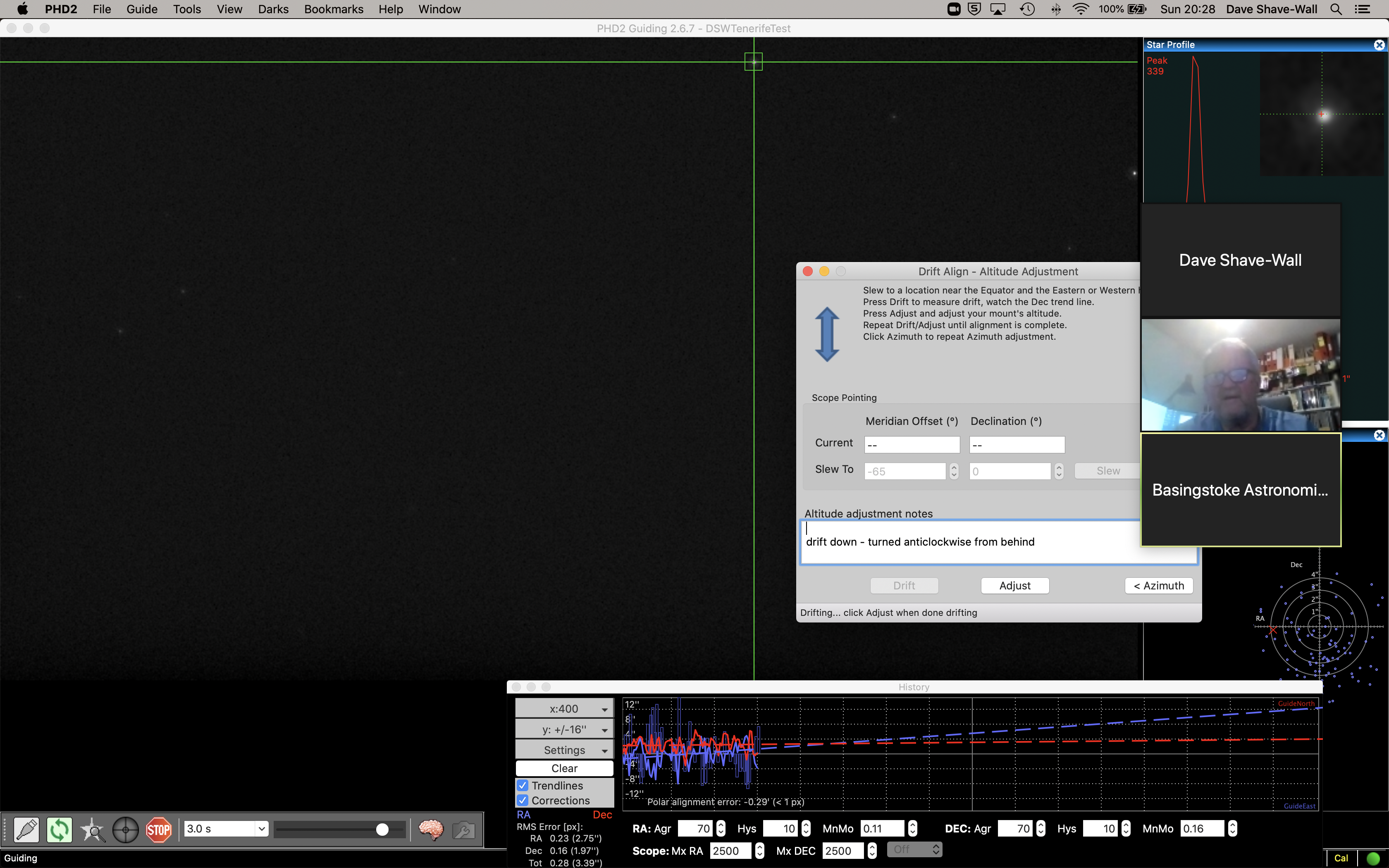
@20:29 finished drift alignment in the altitude and did not need to adjust
@20:43 slewed to M35 and set the camera temp -25℃ and its running at 40%. I have set Gain to 7 and Offset to 30
I then joined the BAS Zoom call along with many others from the society. I shared my screen and explained the problem I was having that the DEC axis was still drifting. Mil Dave took me through the settings and it transpired that I had the Dec Guide Mode set to North rather than Auto. This meant it was not correcting for the error as it drifted South., I set to Auto and PHD started to correct! It now works 🙂 Thanks Mil Dave!

@21:20 I had started gathering 5min exposures of M35
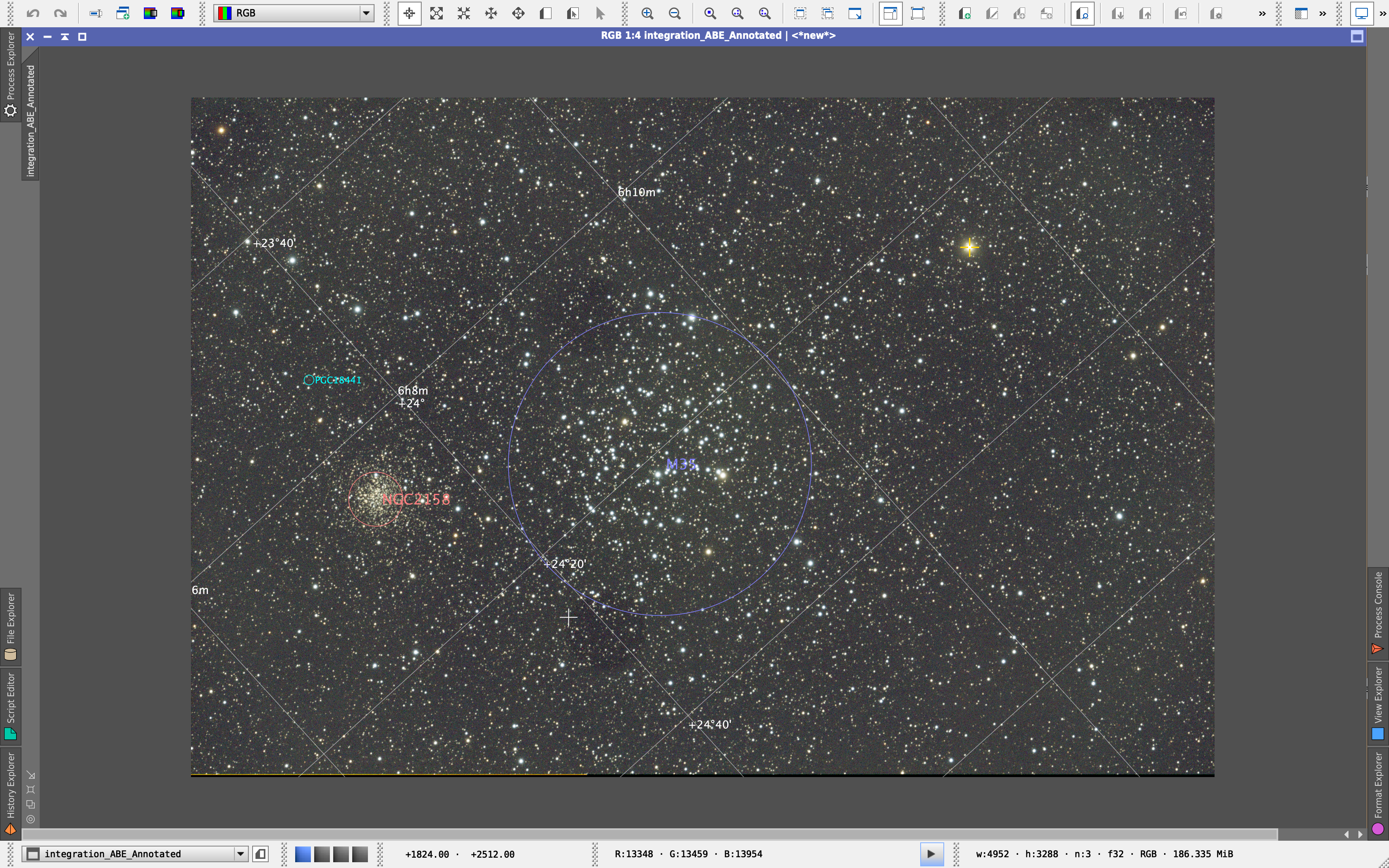
@23:00 finished capturing M35 now waiting for M65 Trio in Leo to go across the meridian
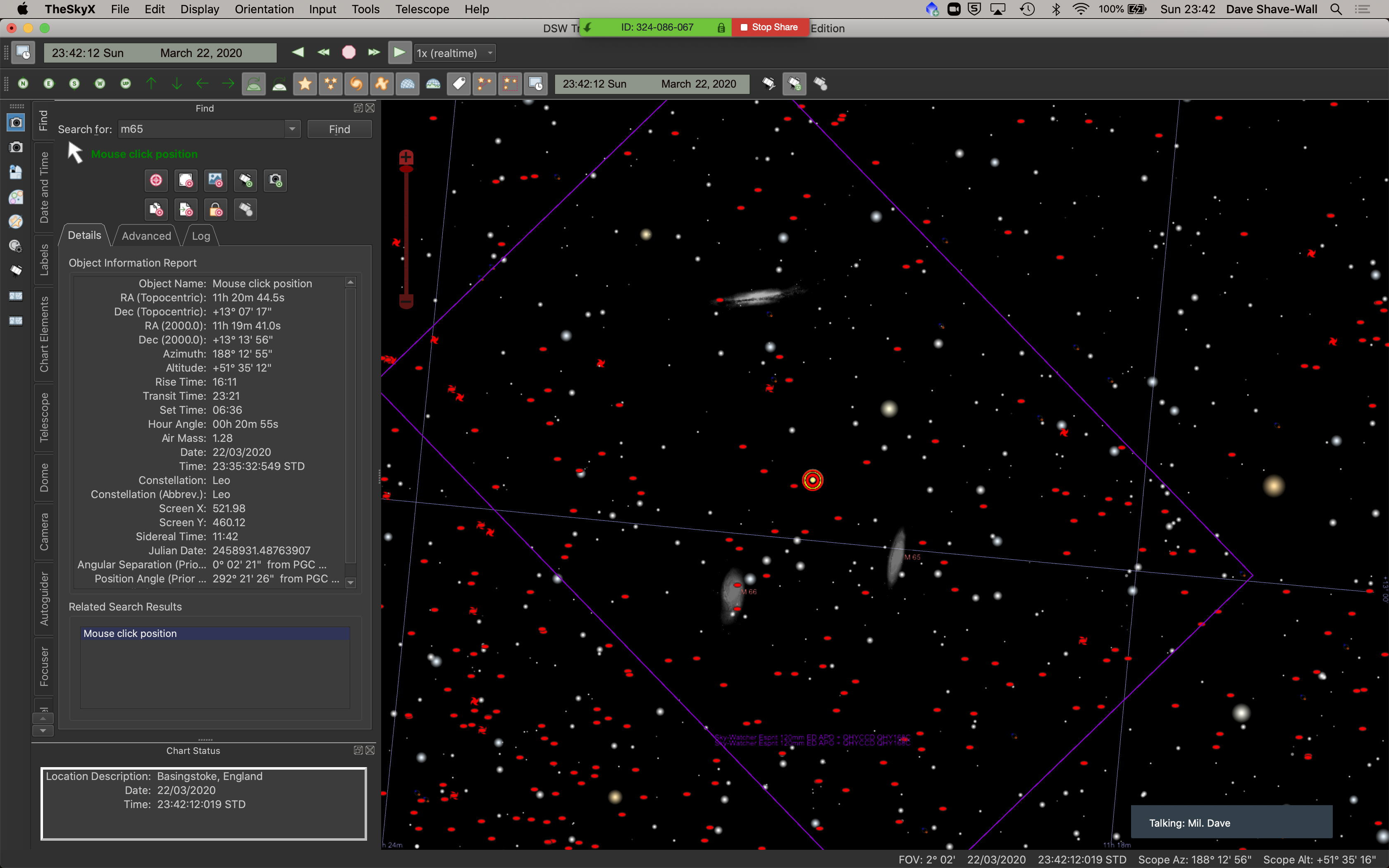
@23:46 started imaging Trio in Leo although there is some high level cloud
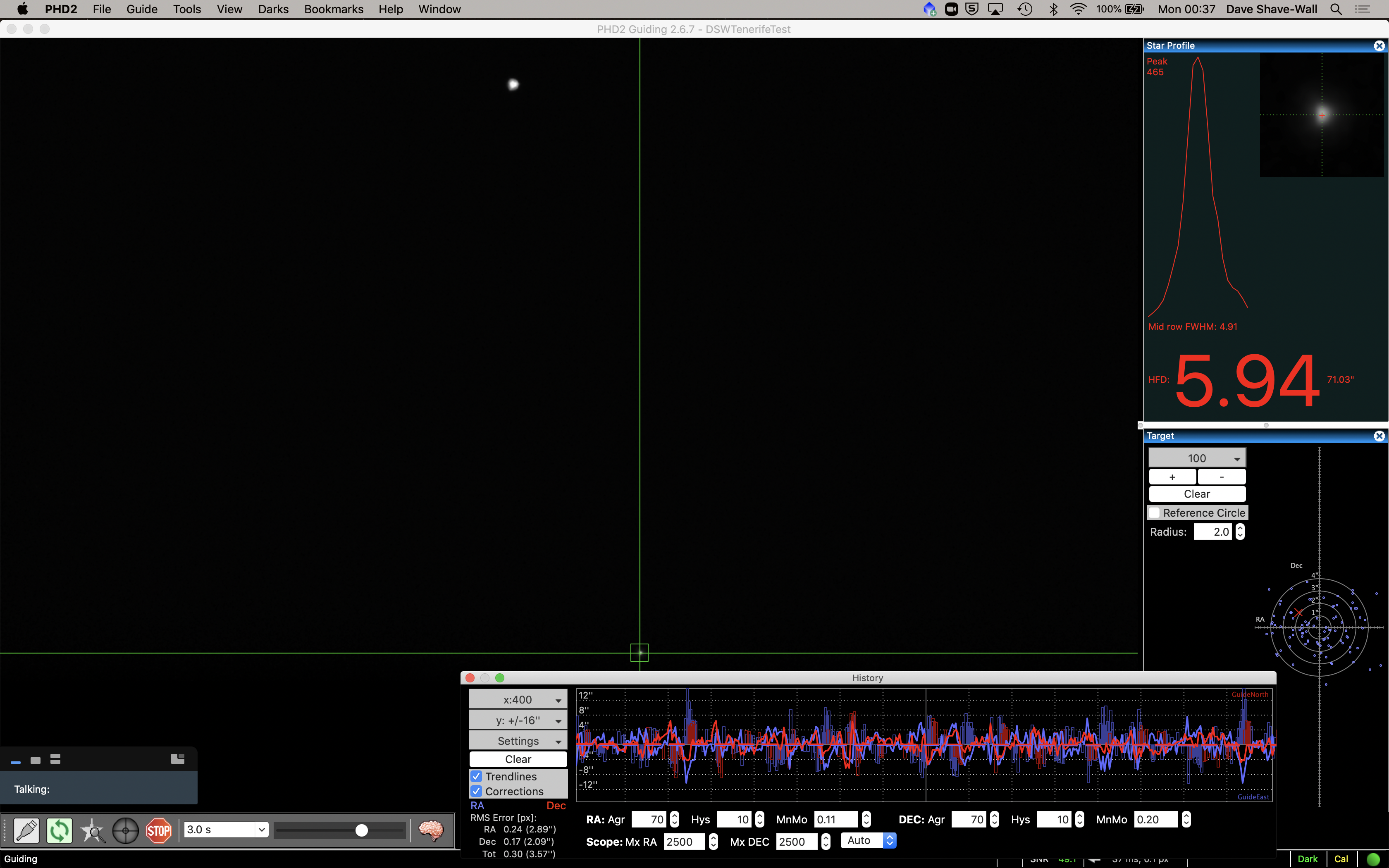
MUST REMEMBER TO TAKE FLATS TOMORROW!
Viewing time period – 19:37 – 22:35
Back out again tonight for a short period to look at guiding again. So with everything setup and a longer USB 2 cable in use I am now sitting in the warm Orangery. I will try again with the PHD2 software to guide and EzCap to acquire images from the QHY168C. I have set the Gain to 7 and Offset to 30 as previously used on my other QHY168C when used in Tenerife.
I polar aligned using PoleMaster. Then set about syncing the scope with Betelgeuse. It was only off slightly. The sync worked fine tonight. I then slewed to M35 and started the PHD2 guider software, selected a guide star and calibrated the guider. This worked well first time proving my new step size of 4 using a small ms time for the pulse worked.
Then I started guiding and very quickly realised the same problem as yesterday with DEC drift upwards. No amount of fiddling with the setting such as Hysteresis or Aggressiveness changes the constant upwards drift. I then remembered that I could calibrate the settings as the other night under Guider Assistant. I ran this made the changes but still the upward drift.
I then remembered that on the Paramount MEII in the dome I had to drift align with PHD2 to get it properly polar aligned and that PoleMaster was only good enough for short exposures or rough guiding. So I set about drift aligning.
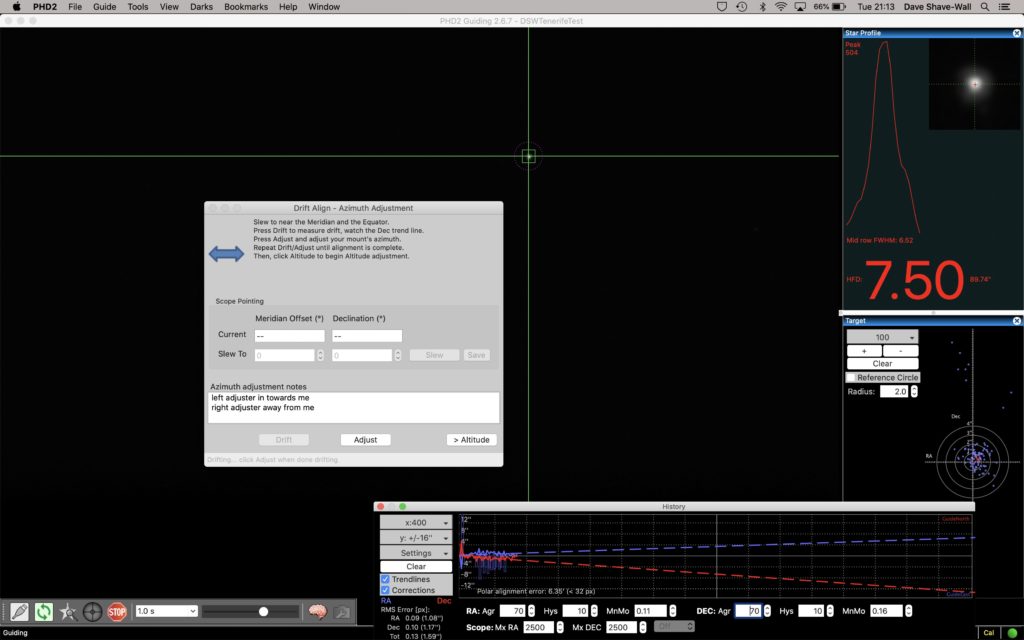
The first thing to note is that the polar alignment was out by a fair bit to get the accuracy I require in both azimuth and altitude. I have now adjusted both and the graph seems a lot smoother.
So in all it took me around 1 hour to drift align and just as I was about to test the clouds rolled in!
